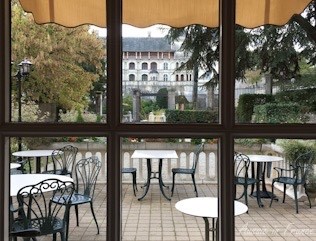
We celebrated Jean Michel’s birthday today at L’Orangerie in Blois and this was our view.
Nous avons fêté l’anniversaire de Jean Michel aujourd’hui à l’Orangerie à Blois et voici la vue depuis notre table.
I think I should begin with an explanation about why I haven’t posted since the begininng of June! It’s very simple – lack of time! I used to post every day when on holidays but realised that Jean Michel had ended up writing the travel diary by himself and our evenings were completely tied up as a result. When we’re at home and I’ve been translating all day, I don’t really feel up to writing blog posts. I do, however, keep up my Loire Daily Photo blog (almost daily). The good news is that, I have had some time this week to write a post for Aussie in France so here we go.
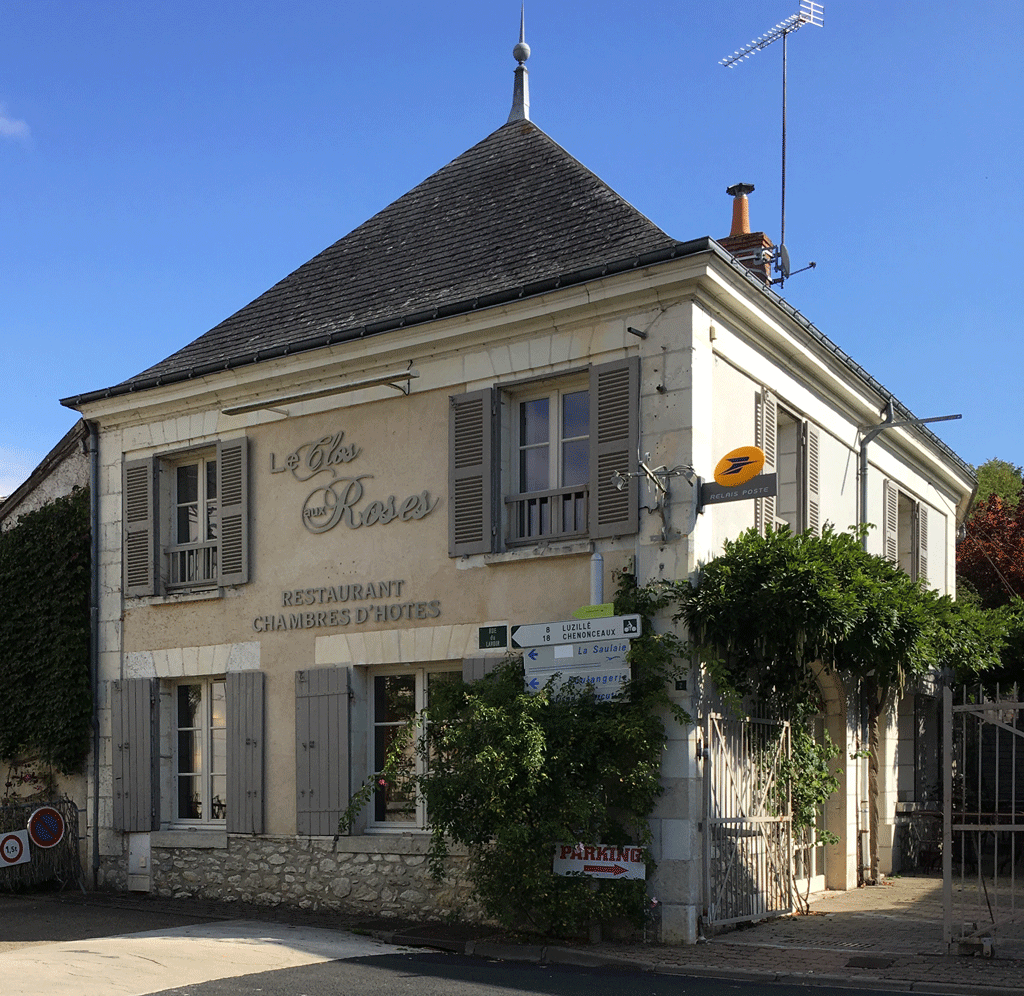
Birthdays and anniversaries are always a good excuse to discover new restaurants, but by October, a lot of places have closed for the season. With the ever-helpful advice of my friend Susan from Days on the Claire, we choose Le Clos aux Roses in the beautiful little village of Chedigny in Touraine. We drove through it recently and discovered it is famous for its roses. A rose festival is held there in May on Mothers’ Day every year. We book a table for lunchtime on Wednesday as it is closed on Mondays and Tuesdays.
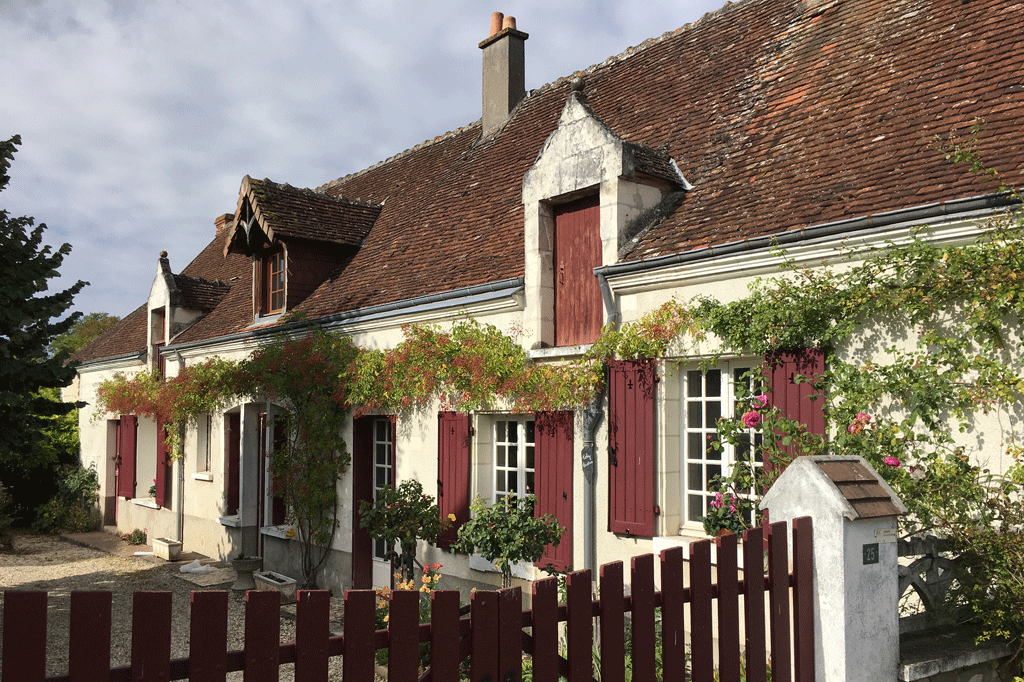
The weather is spectacular, especially for October, and we arrive in Chedigny around 11.45 am, which is plenty of time to wander around the little village admiring the little cottages and gardens. There are still flowers in front of the church and more roses than I would have thought at this time of the year. It must be truly magical in May and June.
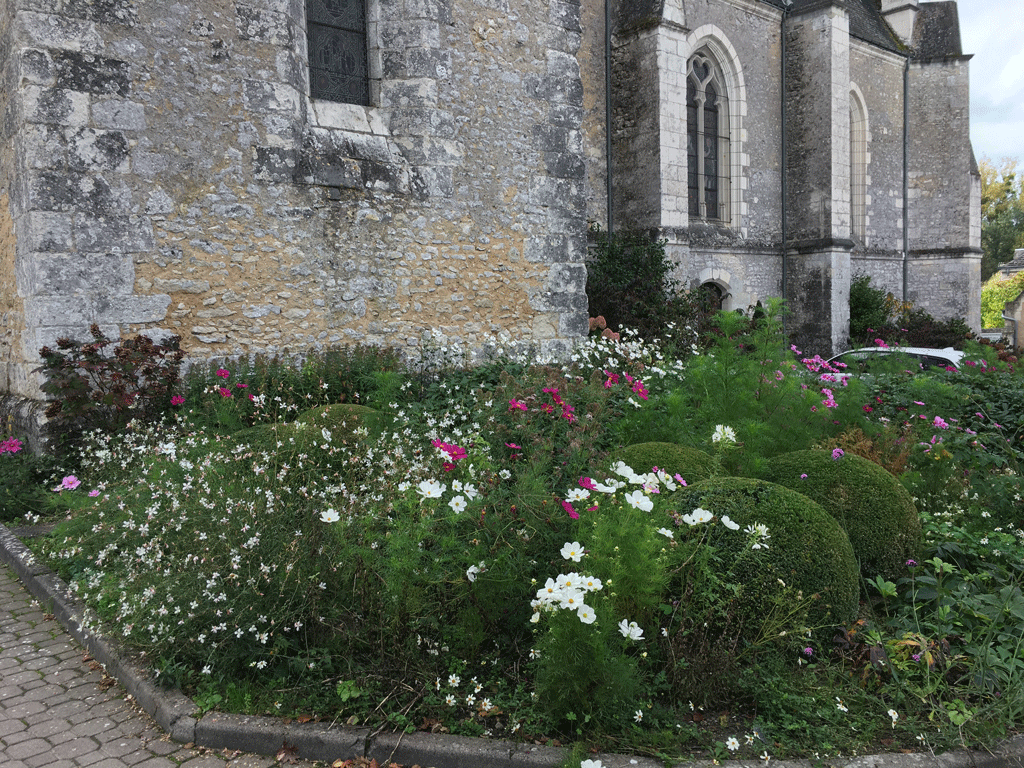
The restaurant is quite empty to start off with but gradually fills up while we are there. With a set lunch menu at 12 euro 30, I’m not surprised it’s popular. We choose the Discovery menu at 40 euro each. It includes an amuse-bouche with our vouvray, a starter, a fish dish, a meat dish and a dessert. We decide on local wines by the class so that we can pair.
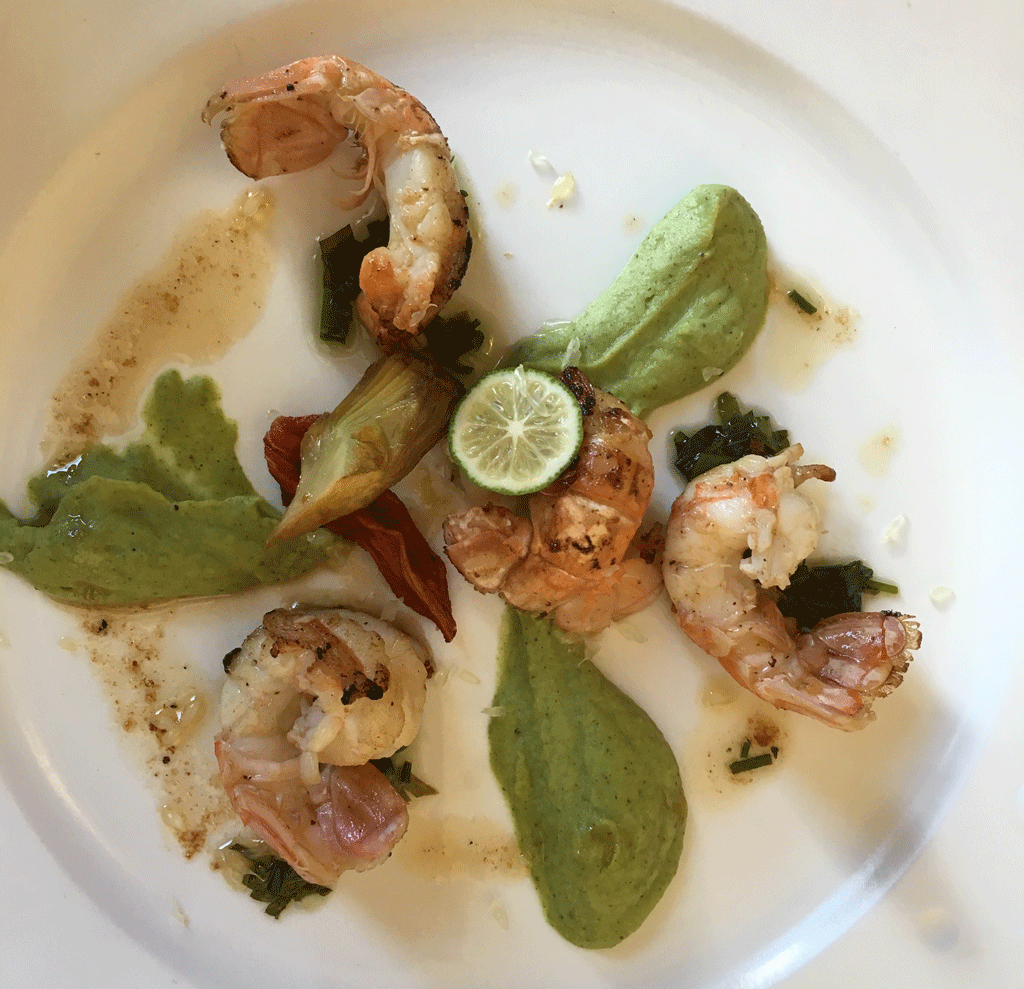
Jean Michel has a vol au vent de ris de veau et langoustines, while I have the foie gras. Then we both have the écrevisses followed by duck served with fresh vegetables from the chef’s garden. Jean Michel has a mint and blackcurrant Norwegian omelette while I have a chocolate dessert. We enjoy everything except the desserts which are a little disappointing.
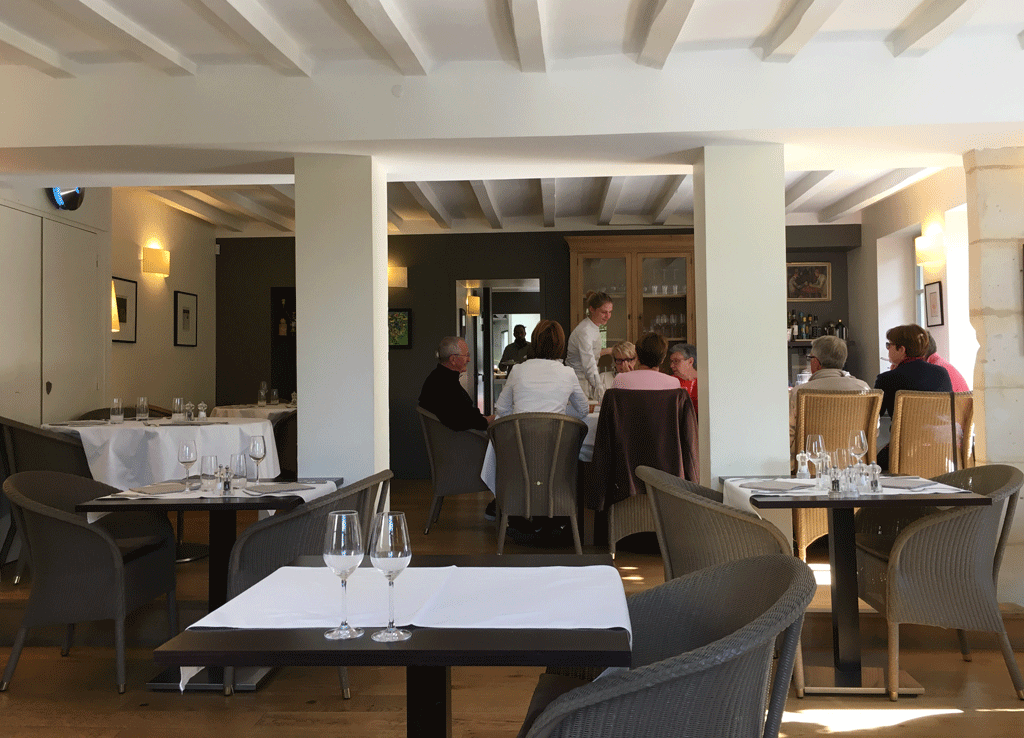
The service is friendly and relaxed, with monsieur waiting on table and madame in the kitchen, helping in the dining room from time to time. Armelle Kraus is an up and coming chef from the Ecole Supérieure de Cuisine Française Grégoire Ferrandi in Paris. Her creations are based “on a deep respect for nature and the magic of tradition”. We will be going back there in May when the roses are out (but not during the festival weekend when it is very chaotic, we are told).
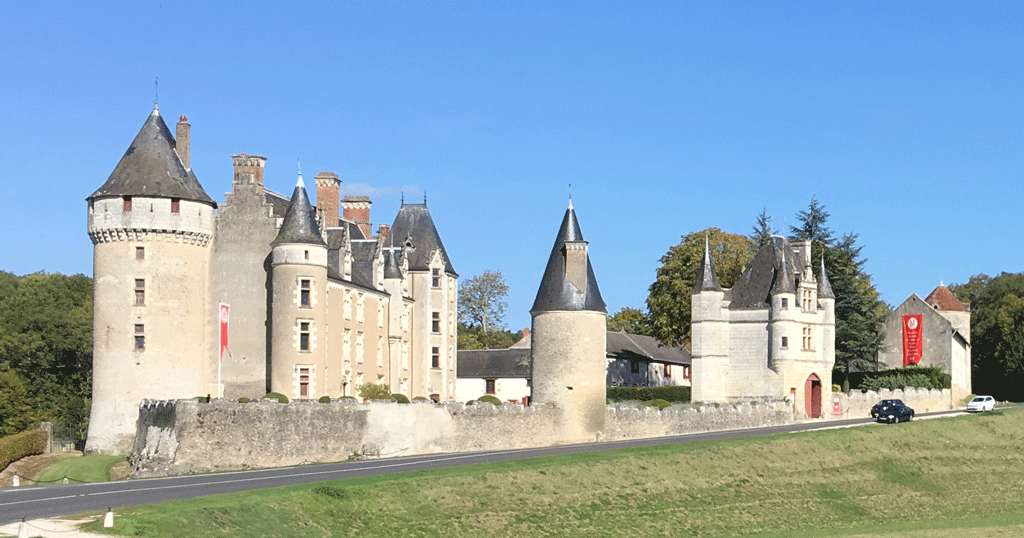
We then head for Château de Chambord, which isn’t exactly next door (over an hour away) but the countryside is lovely and takes us past Montpoupon Castle, Montrichard and Fougères Castle! We marvel at the fact that we are in close proximity to so many beautiful architectural masterpieces.
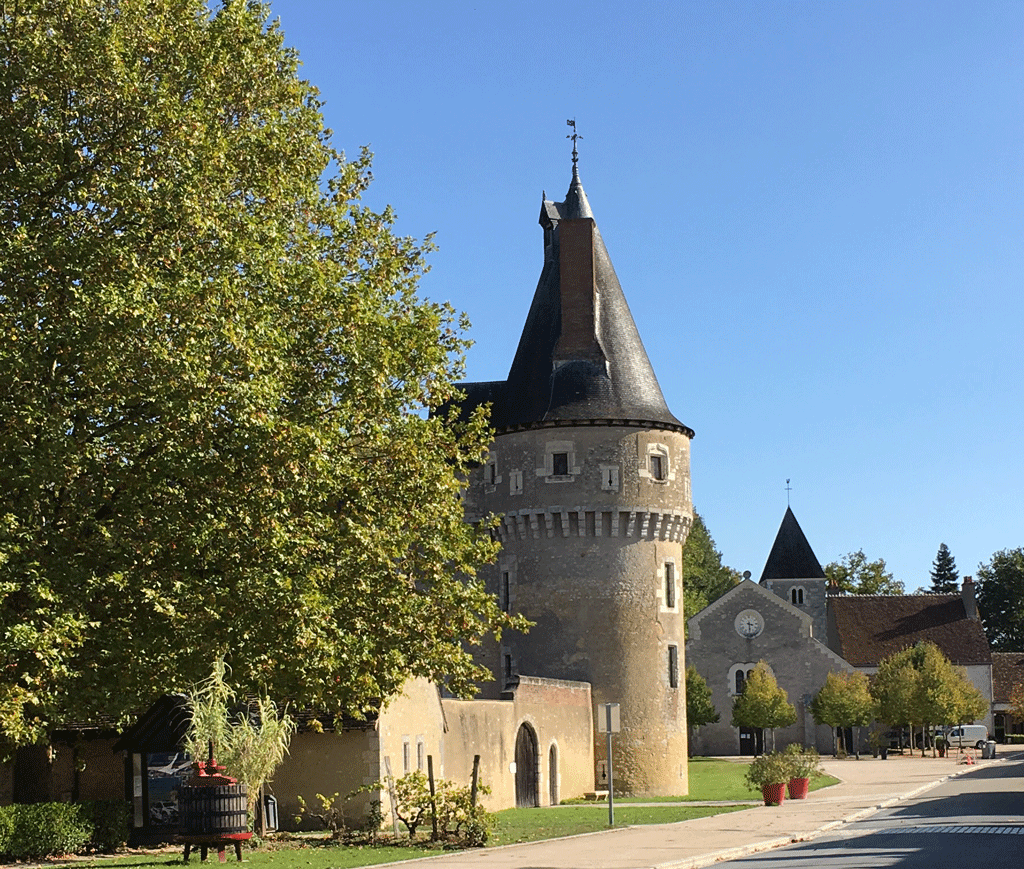
At Chambord, we park and go to get our free passes. From mid-September to mid-October, entrance to the castle is free this year for people living in the area. We tried on Sunday but the queues were so long that we bought an ice-cream instead, walked along the canal and went home! I love the fact that the locals like to visit their castle. It’s the only one in the Loire Valley whose grounds are open free of charge to everyone all year round. We often cycle there in the summer just to have an ice-cream with a view!
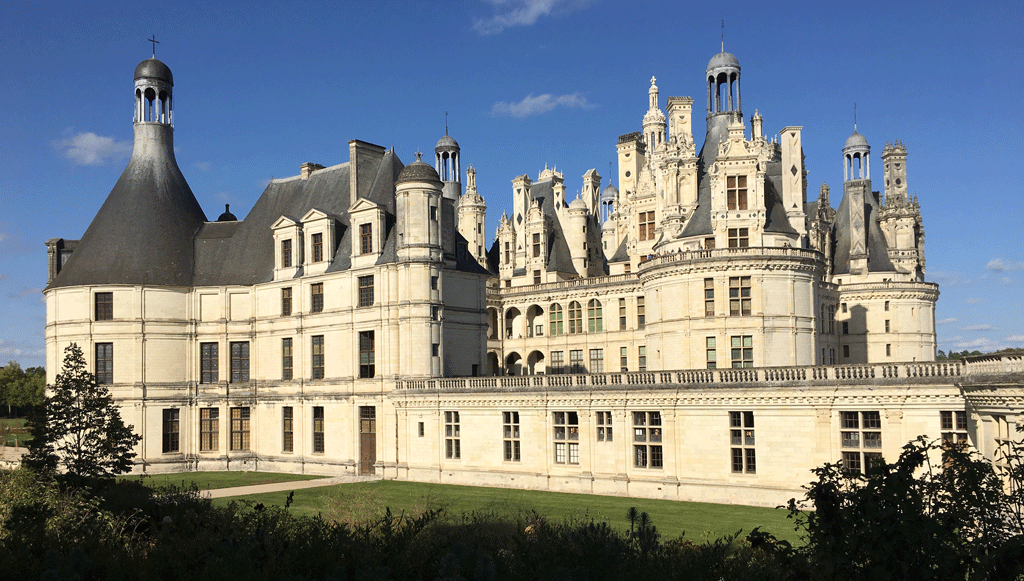
However, we have not yet seen the newly-restored 18th century formal French gardens which only opened this year. We start with the rooftop terrace with its famous chimneys so that we can see the gardens below, by far the best view. We walk right around the terrace so we can view the surrounding countryside from every side then complete the visit by wandering around the gardens themselves. However, it is still early days yet and they are not nearly as impressive when you’re at eye level.
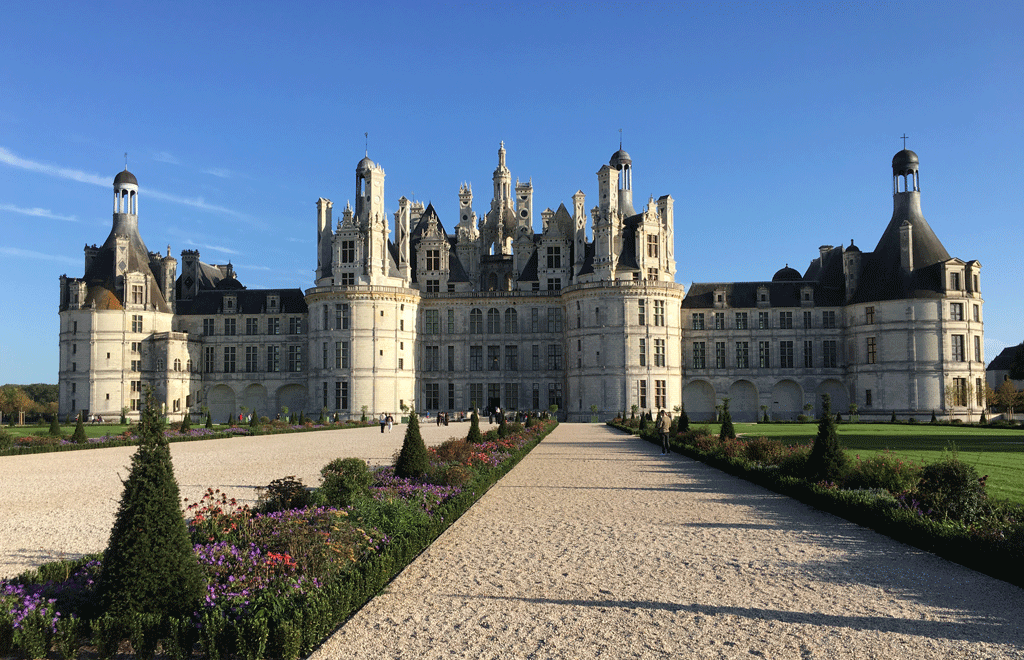
I thought we had visited all the rooms in the castle itself, but additional wings have been opened since our last visit. None of the furniture and furnishings originally come from the castle which was a hunting lodge and completely empty most of the year. When François I came to visit, he brought everything with him. I like the “18th century’s apartements” best (that is not a spelling mistake on my part – it’s what the sign says!).
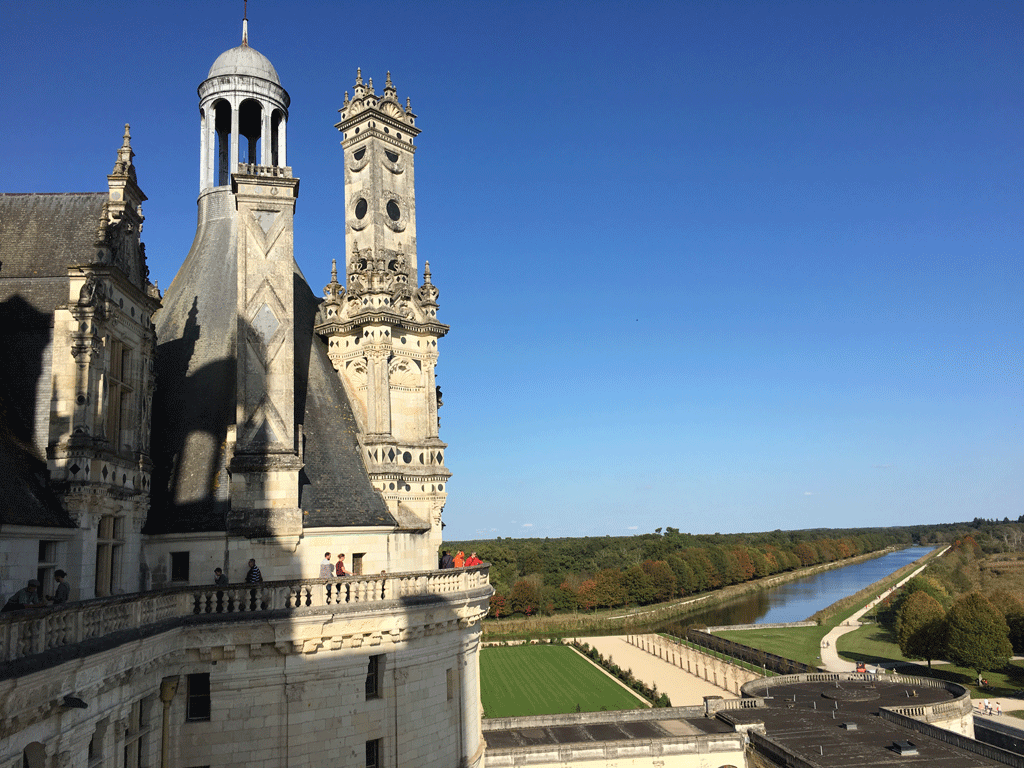
We also take a look at the newly-restored kitchens before we leave but they are not of any particular interest.
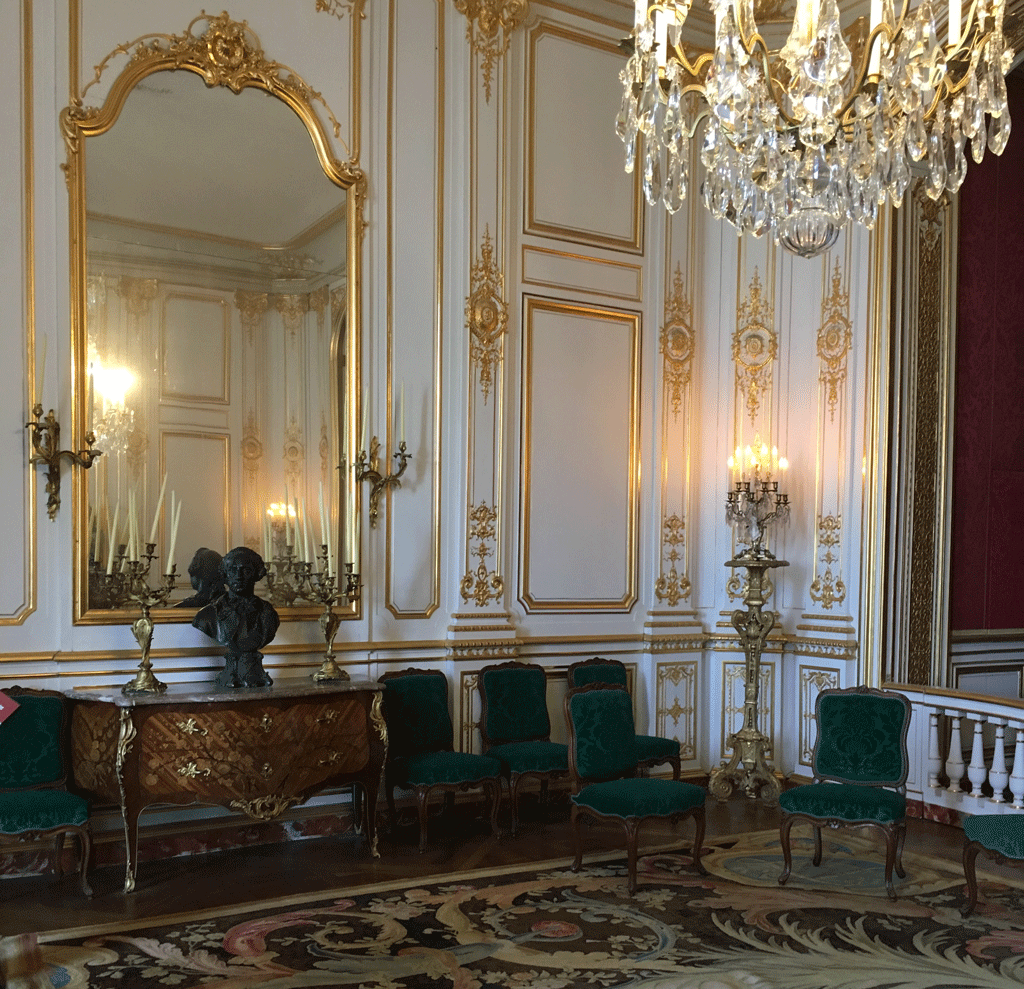
The way out is through the very large shop, something I usually avoid, but today I find four tapestry cushion covers for our new sofa which are just the perfect colour and design!
Le Clos aux Roses
www.leclosauxroses.com
2 rue du Lavoir
37310 Chédigny
leclosauxroses@gmail.com
Wednesday to Sunday noon included.
Closed Sunday evening.
02 47 92 20 29
It’s one of those perfect summer days in the Loire Valley and we’ve chosen to cycle from Luynes to Langeais via a loop we’ve found in our La Touraine à vélo book. Luynes is about 50 minutes from Blois by car. You can see the castle as you approach the village.
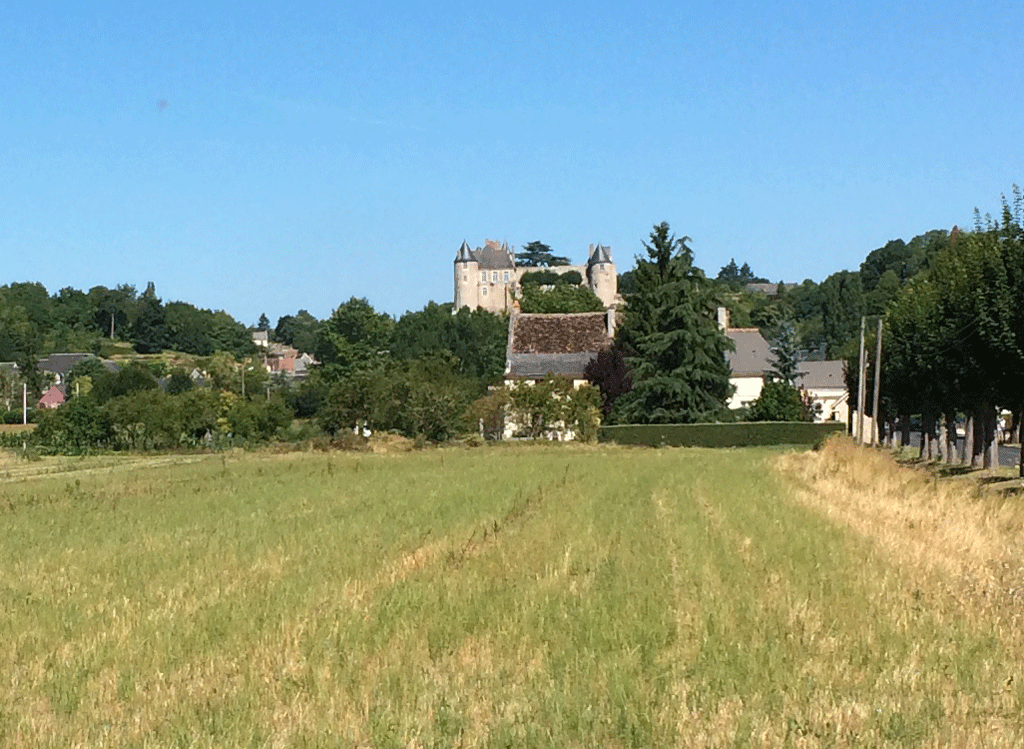
We park in the public parking lot at the entrance to the town just opposite the itinerant circus. I heard on the radio the other day that there are now very few municipalities that have adequate grounds to house a circus. As a result they have downscaled and are forced to stay in the same spot for too long for business to be brisk.
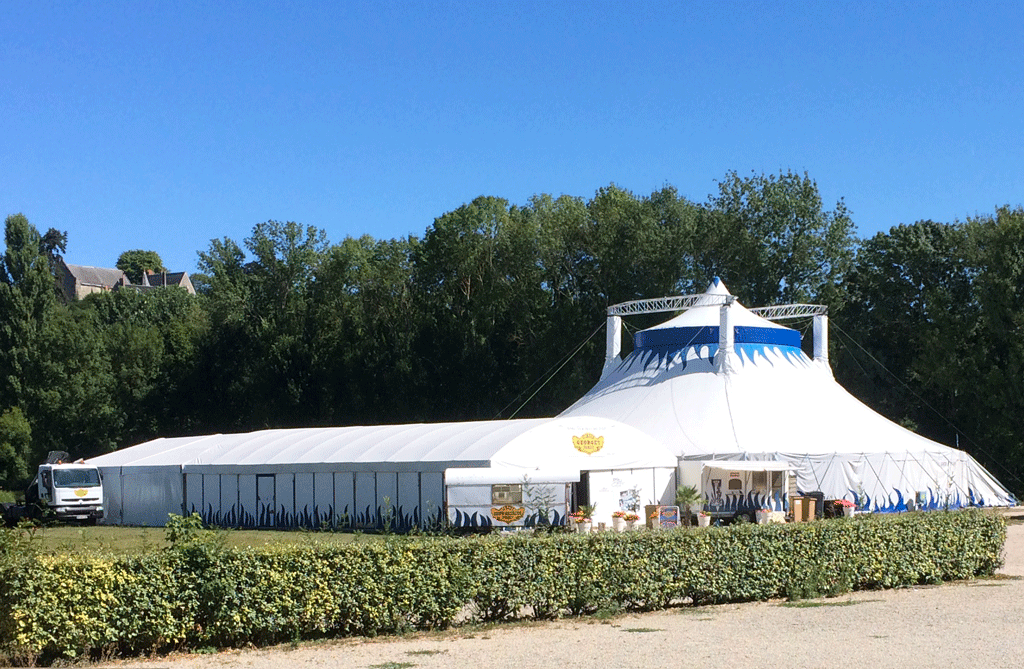
Le Saint Venant on the main road is the perfect spot for a coffee before we start the day. It’s very busy, as it also sells cigarettes and lottery tickets. We notice there are several small restaurants open for lunch but we’ve brought a picnic today.
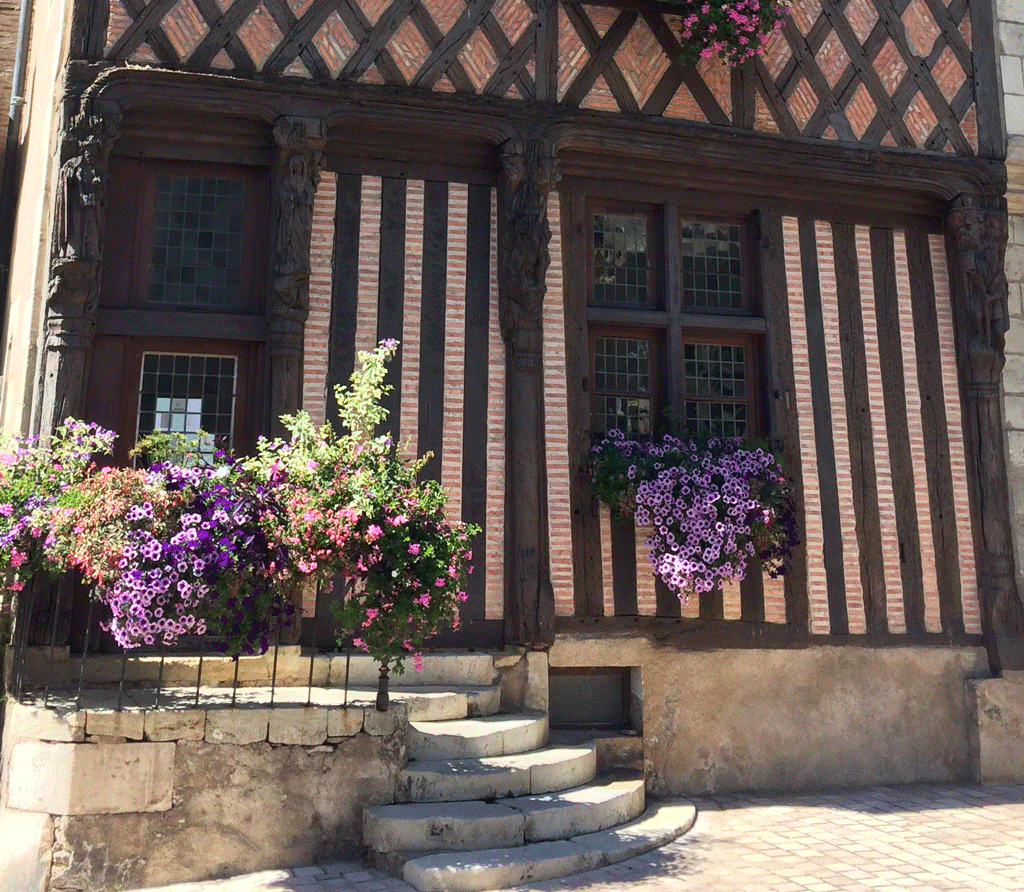
Luynes is a very attractive little town. In particular there is a beautifully preserved 15th century half-timber house the front of which used to have two entrances. The present door was the private entrance while the other door opened onto the shop. There are four sculptures: Saint James, Saint Geneviève, the local patron saint, a Pietà and Saint Christopher.
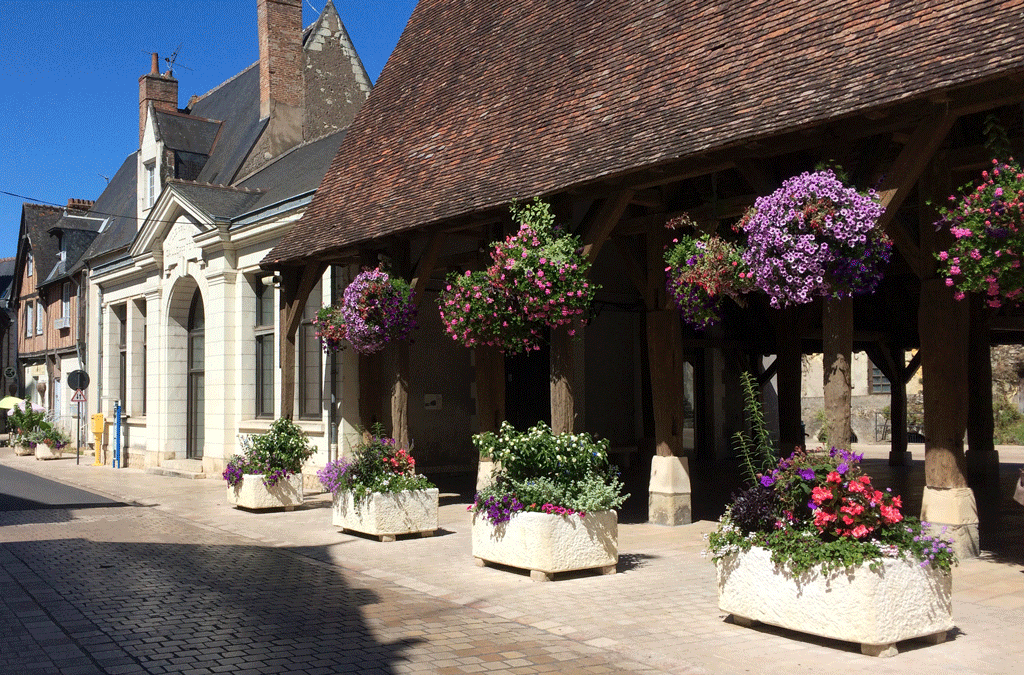
There is also a covered market with a very old troglodyte dwelling right next to it.
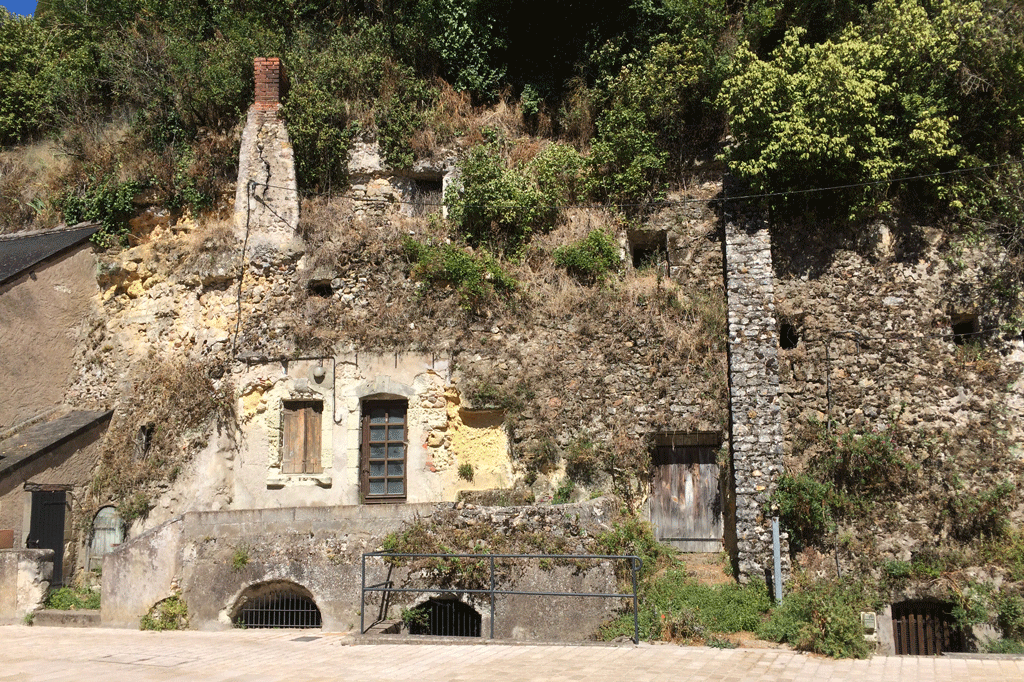
We ride out of town northwards to find a second century aqueduct. The signs are not that easy to find and are also quite low, obviously aimed at hikers and cyclists.
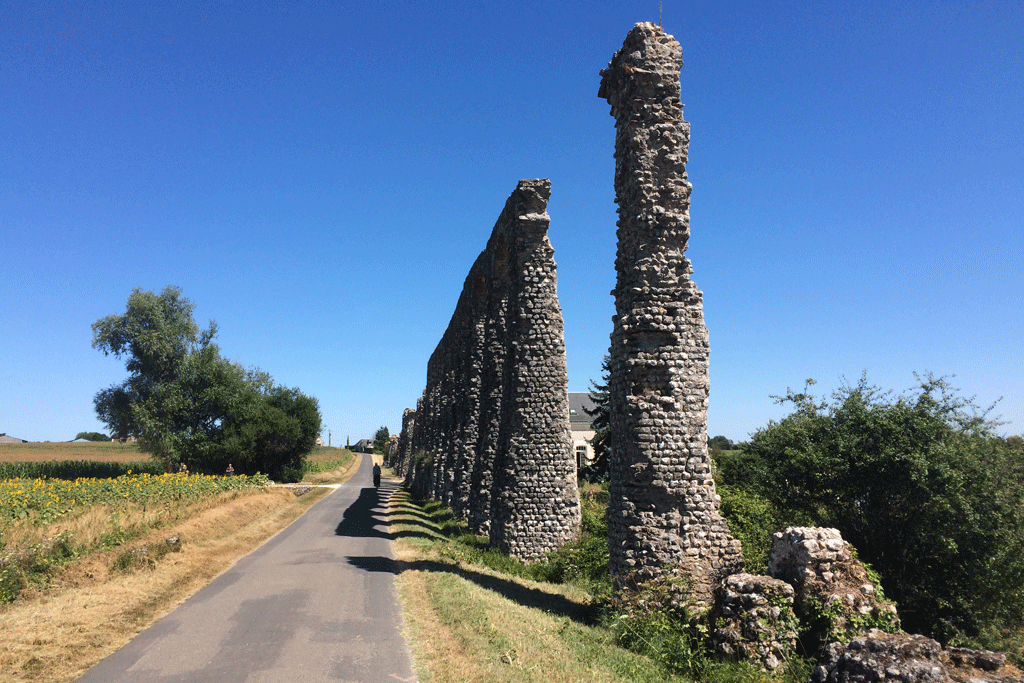
The pillars suddenly loom up in the middle of nowhere. I trample through the sunflower field opposite to get a good view of the 300-metre Gallo-Roman aqueduct.
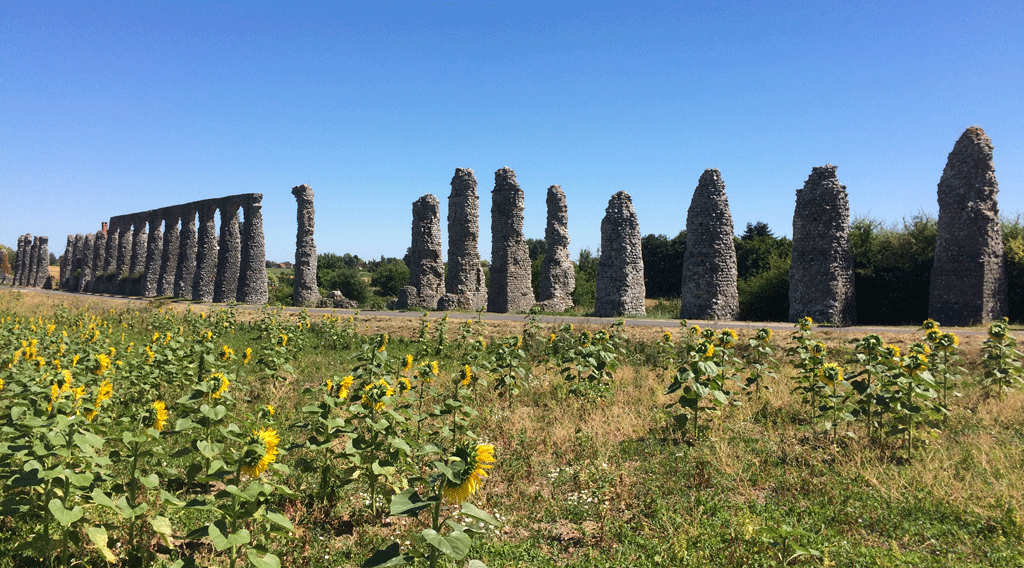
There is a bench just opposite so we park our bikes and have lunch there with a perfect view of the nine arches, six of which are the original construction.
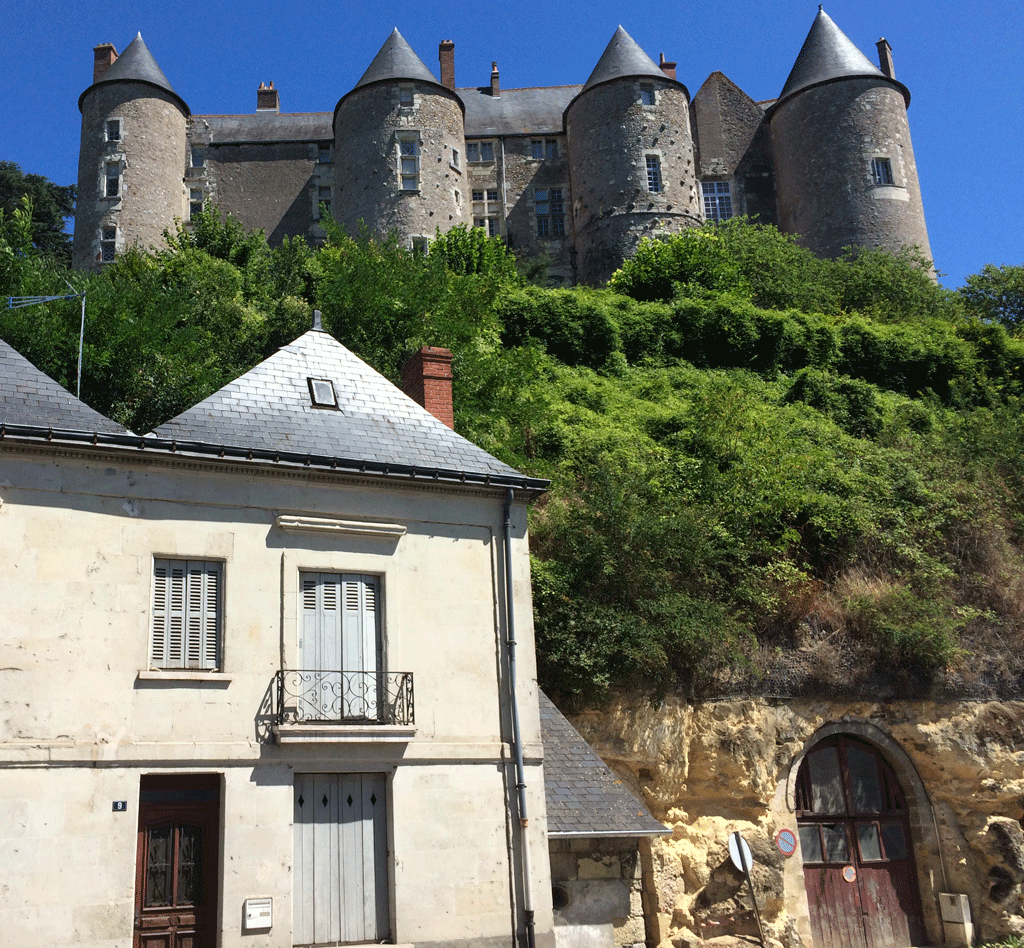
On our way back into Luynes, we can see the four towers of the castle but can’t get any closer. It’s been closed since June 2016 because it doesn’t respect today’s safety and disability standards. The owner says the outlay is two great for him to make the investment. Only time will tell whether State aid is forthcoming.
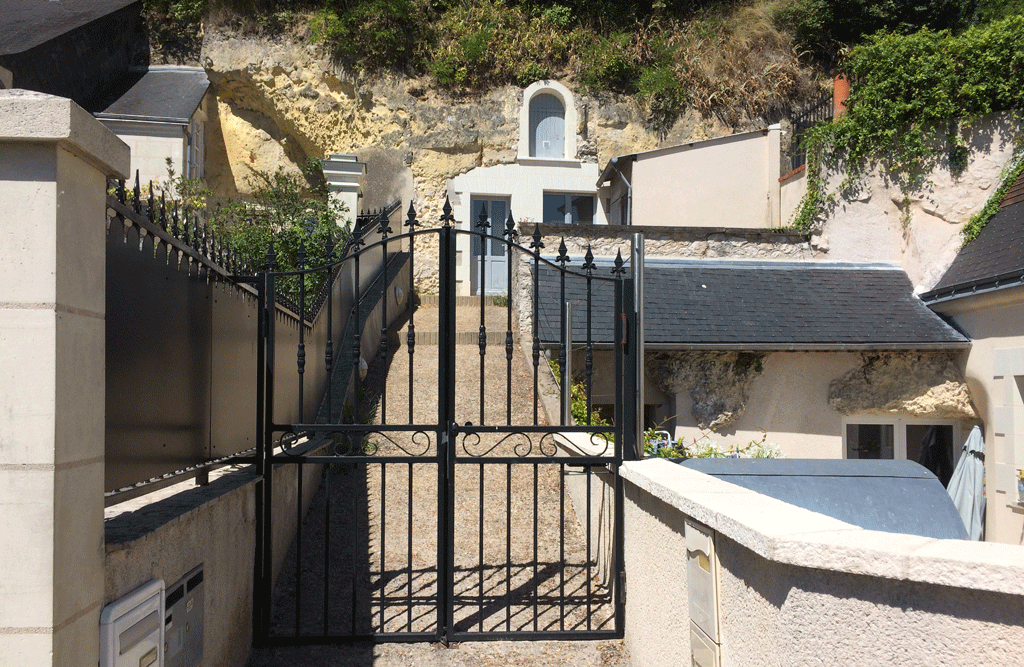
We continue on our way towards Langeais past lots of interesting troglodyte houses and take a detour to Vieux Bourg, a delightful little village with several old half-timbered and stone houses, outside bread ovens and the little church of Saint Etienne which is unfortunately closed for repairs.
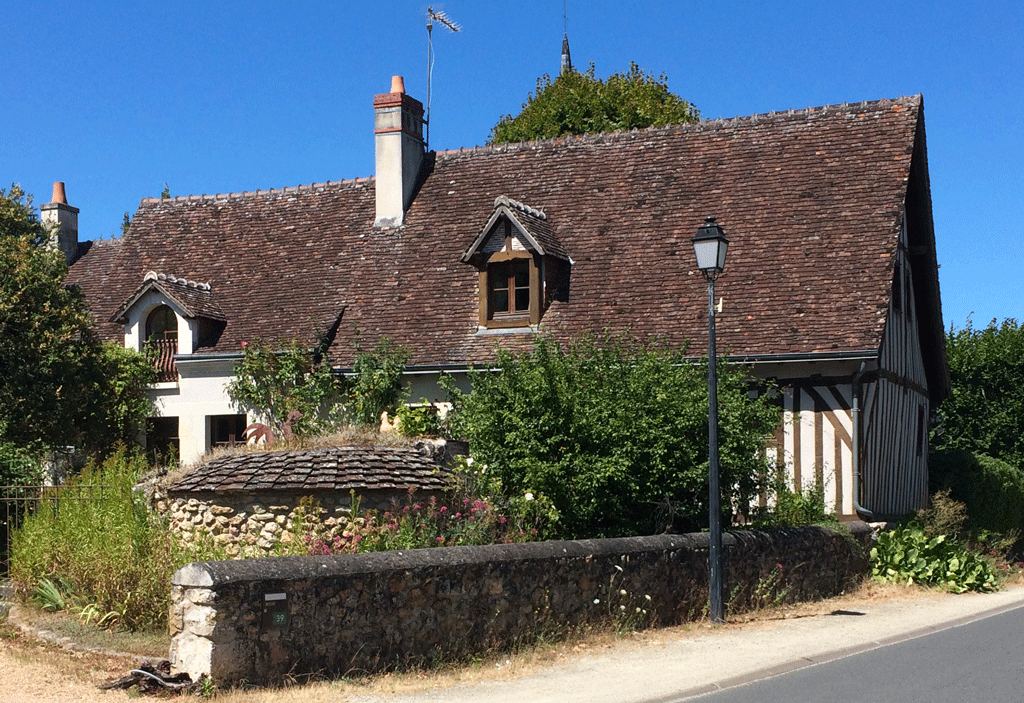
As we approach Saint Etienne, we see a man and his wife coming out of a little troglodyte house and we say “hello, looks like a great house”. “Would you like to come in and visit? You look as though you are interested.” Jean-Michel starts politely refusing but I immediately say “Yes, please! We’d love too.”
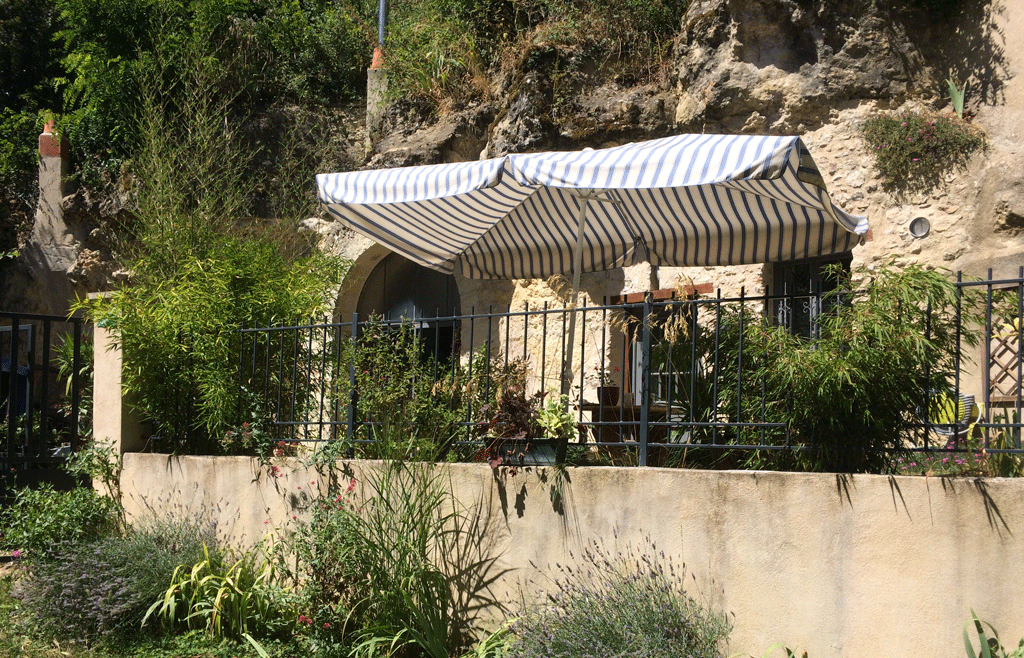
They explain that the house was originally a wine-cellar which means it’s quite deep and not easy to ventilate. The main problem is in summer when it remains very cool and has a lot of condensation which is not great for anything electronic. They have ceiling fans to direct the heat towards the lower part of the rooms when heating in the winter. They are trying to find a way to solve the problem.
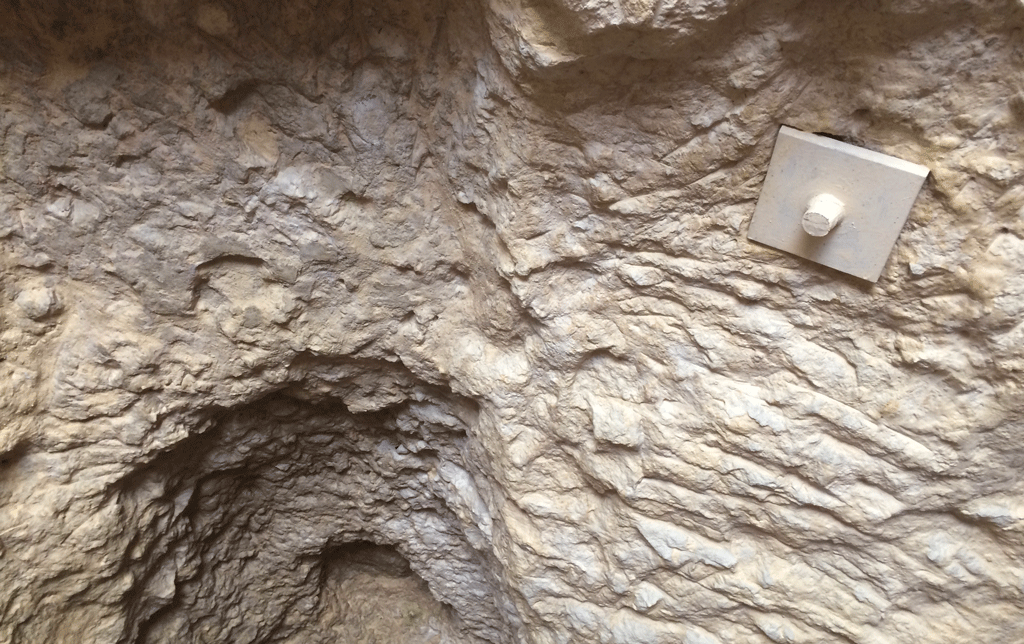
I would love to take photos but feel it wouldn’t be polite. The only one I take is of the ceiling in the main room which shows where steel ties have been used to make sure the ceiling doesn’t cave in!
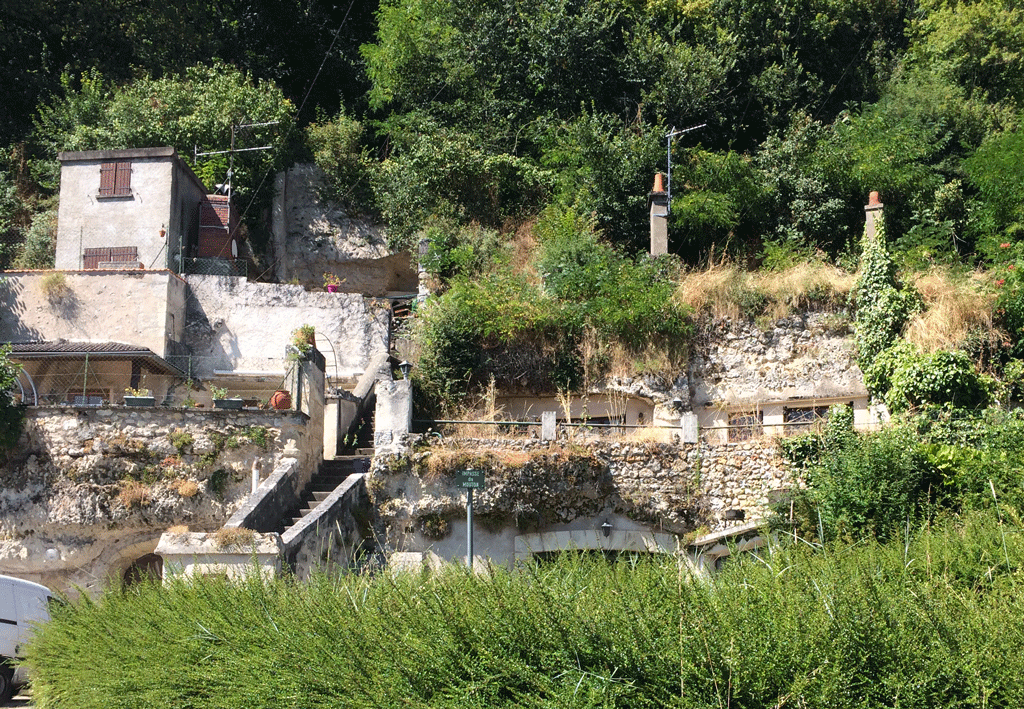
They are both retired and happy with their choice but admit there is a lot of work to be done and a lot of problems to overcome. Troglodyte houses that started off as houses are not as deep and don’t have the same problems. I have to confess that I don’t particularly like the idea of living under the earth!
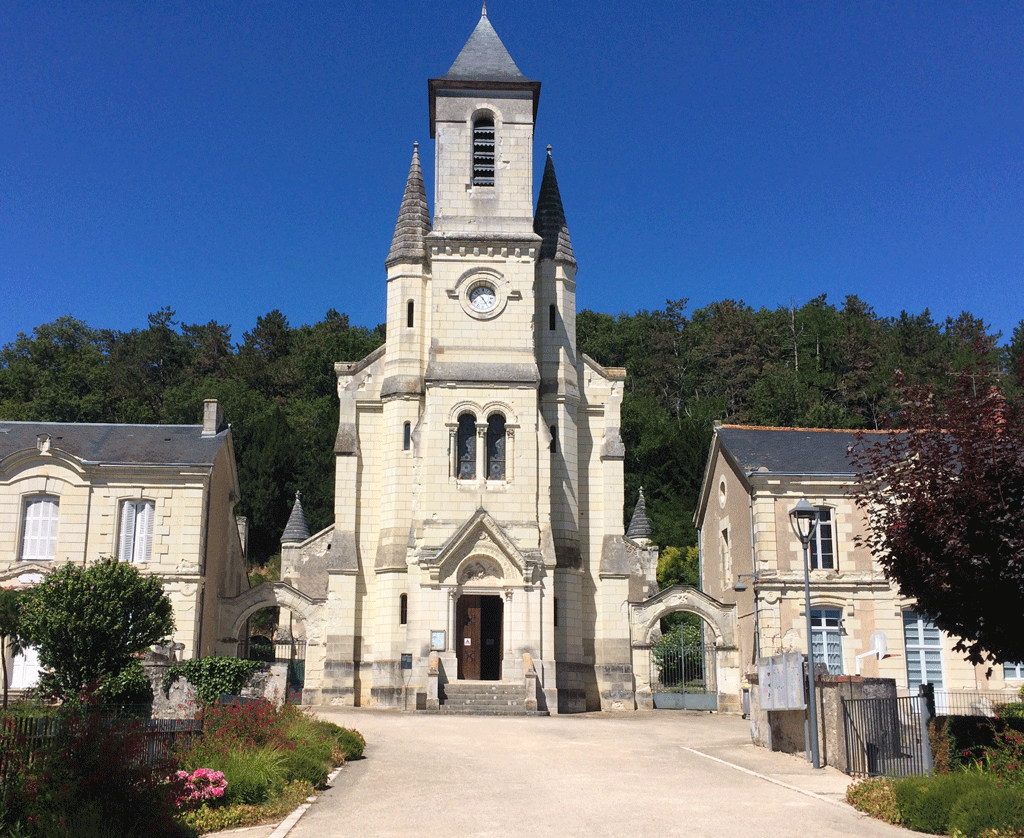
We thank them for their visit and continue onto the town of Saint Etienne which has a very attractive, although quite modern church built in 1860.
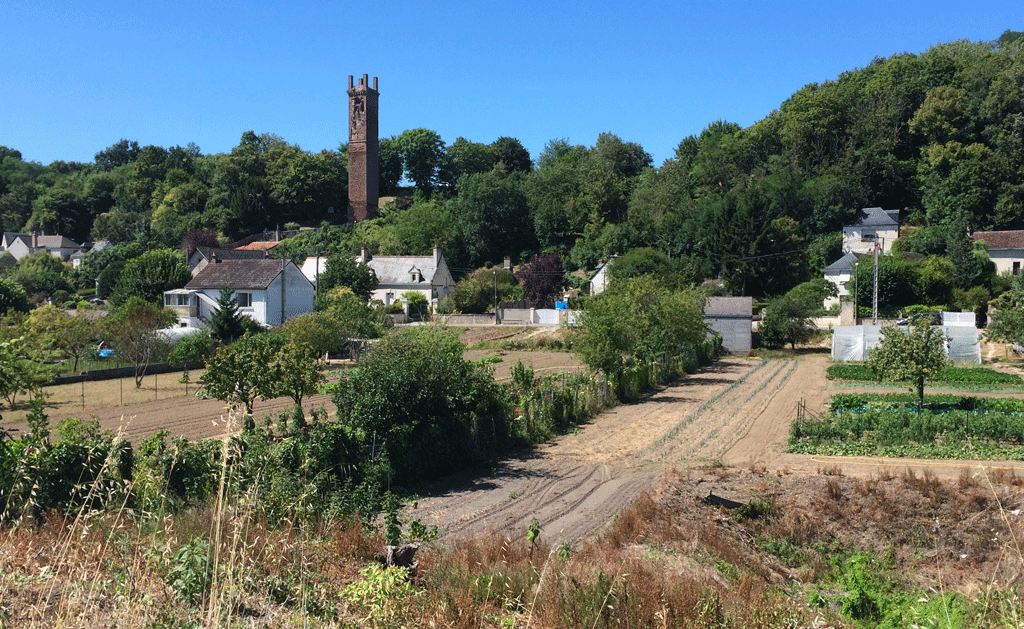
We go past more troglodyte houses until the Cinq-Mars funerary tower or pile looms into view. We’ve seen it often in the past but never visited it. We lug our bikes up an excessively steep hill so that we can see it up close.
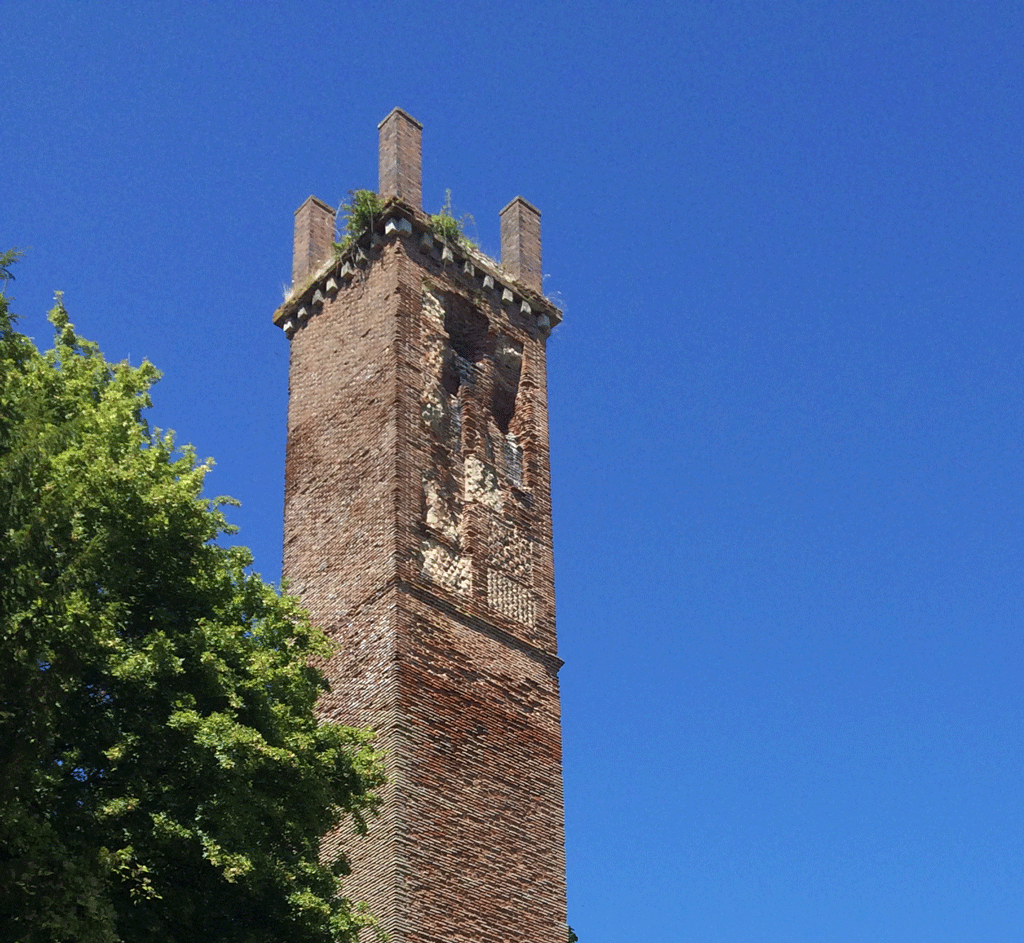
Built between 150 and 200 A.D. it is a type of funerary tower well-known in Roman times. It is the best preserved and highest funerary stack still extant (29.50 metres) while its brick veneer is rare in Gaul. At the top, twelve decorative brick and white stone panels replace the traditional niche seen on other stacks.
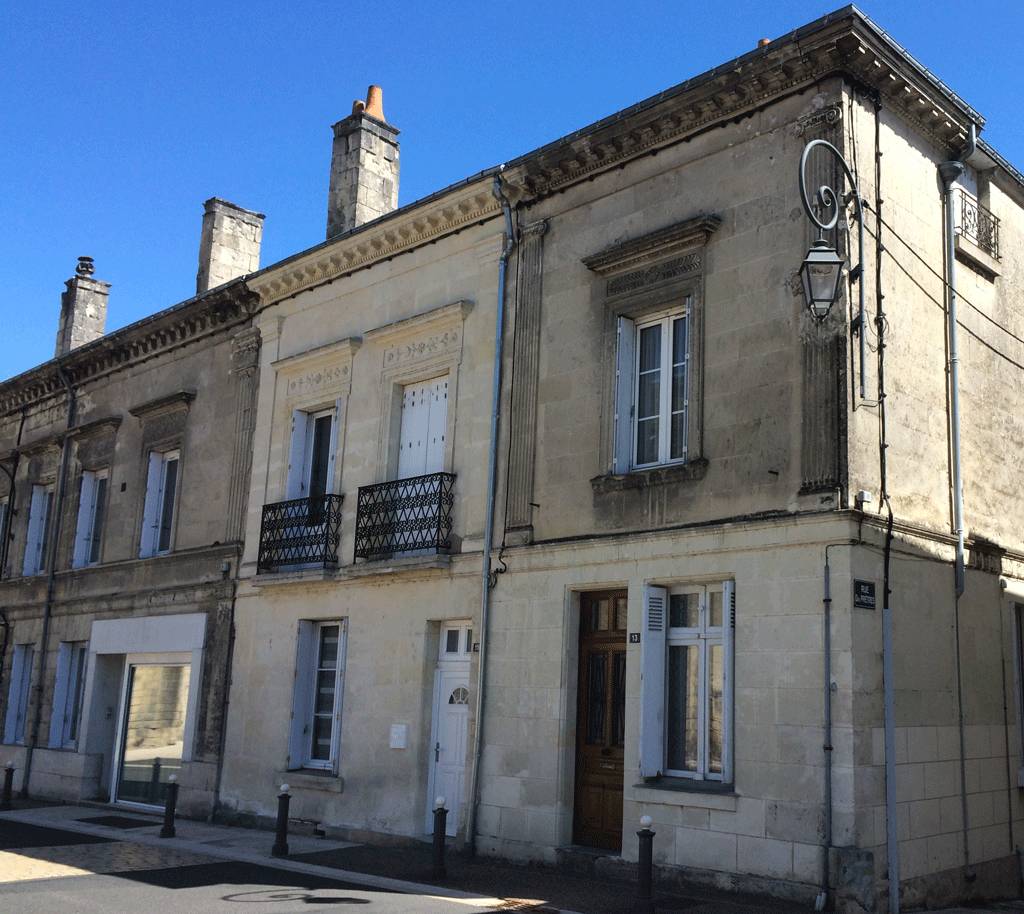
The town of Cinq-Mars is only a few kilometers further. We’re hoping for a coffee but there is nothing open. It must have been quite a thriving town once from the look of the stone friezes on the houses opposite the church.
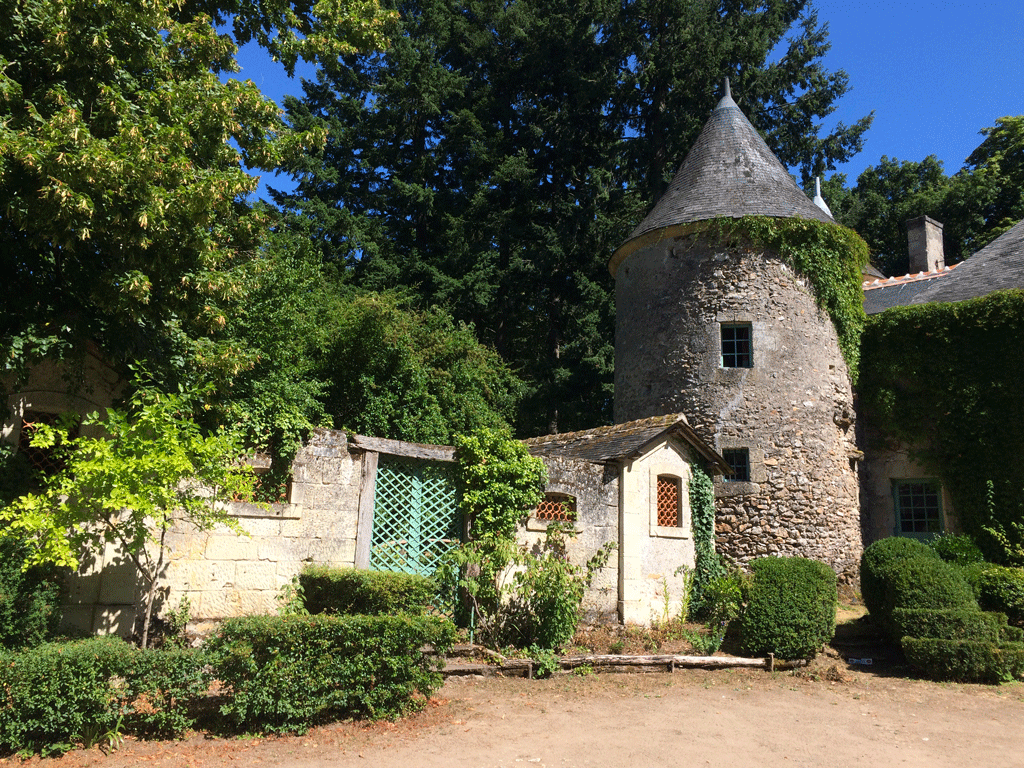
We’ve decided to visit the Cinq-Mars castle even though there isn’t much left of the original feudal castle. I don’t quite manage to get to the top of the hill on my bike. It’s one of those day when I think that an electrically-assisted bike might be a good idea.
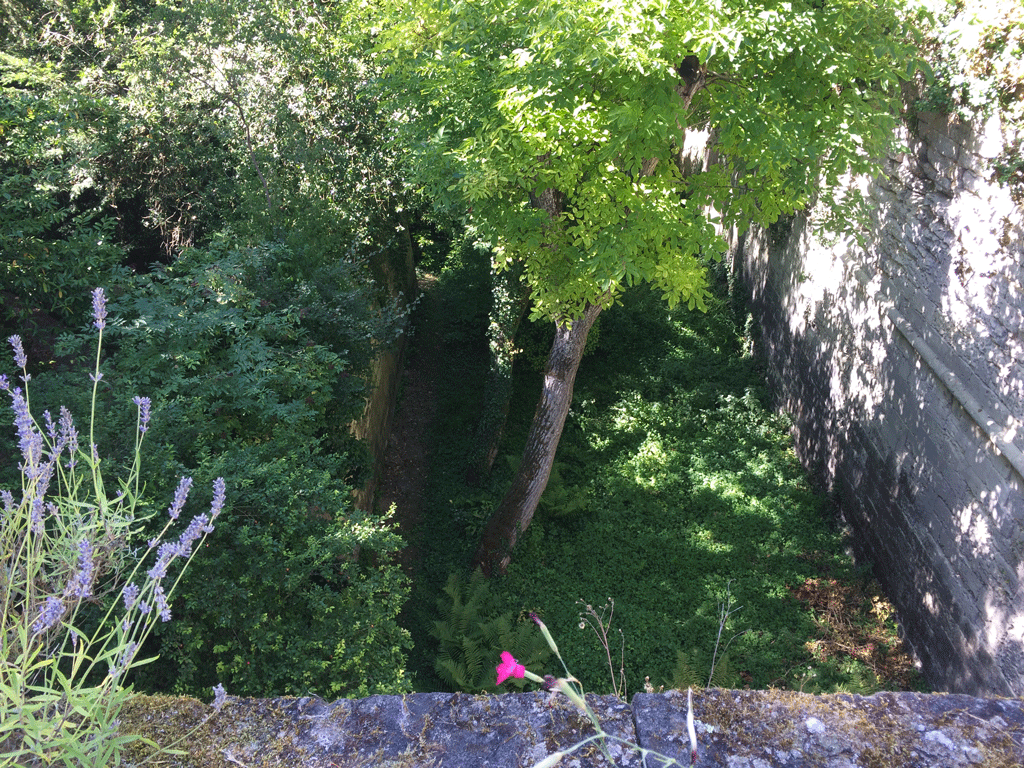
The owner, a retired architect, turns out to be a mine of information and very willing to talk. The price is a reasonable five euro each.
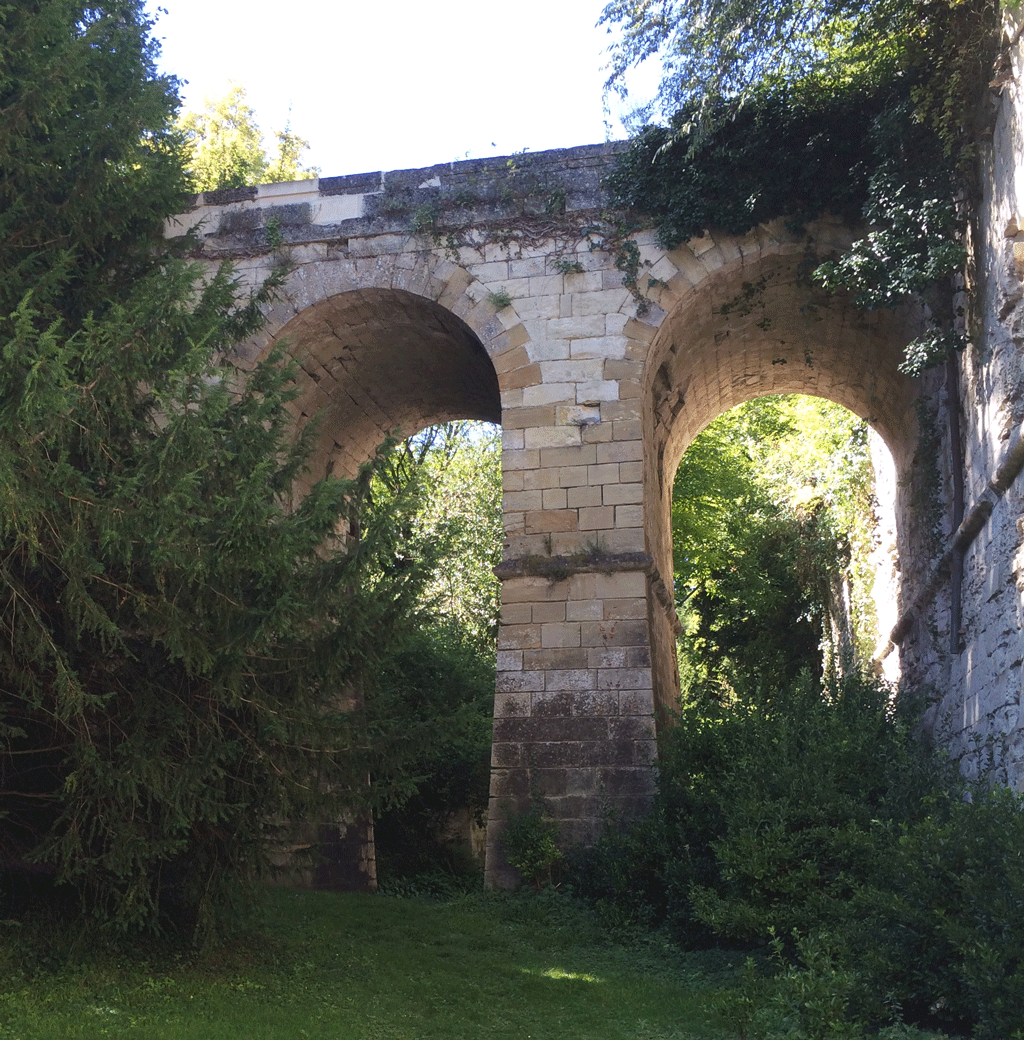
We visit the dry moat which is extremely deep, then walk across the magnificent stone bridge with its three arches that replaced the 15th century drawbridge.
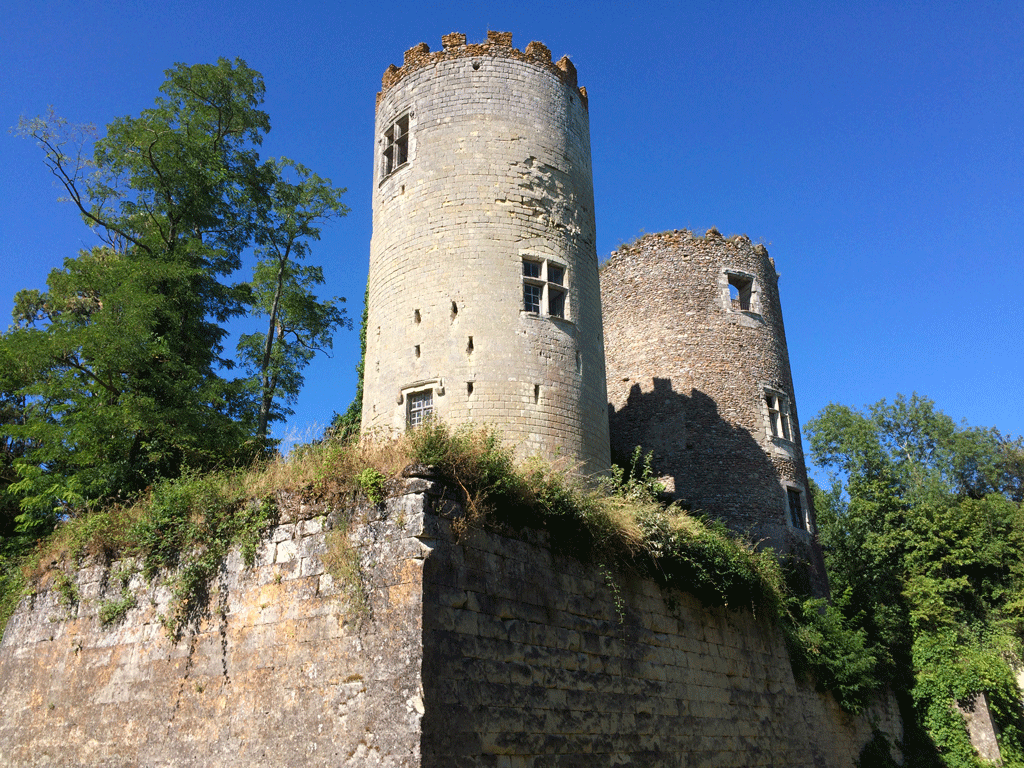
The two 12th to 15th century towers each have three vaulted rooms one on top of the other, but only one tower is open to visitors.
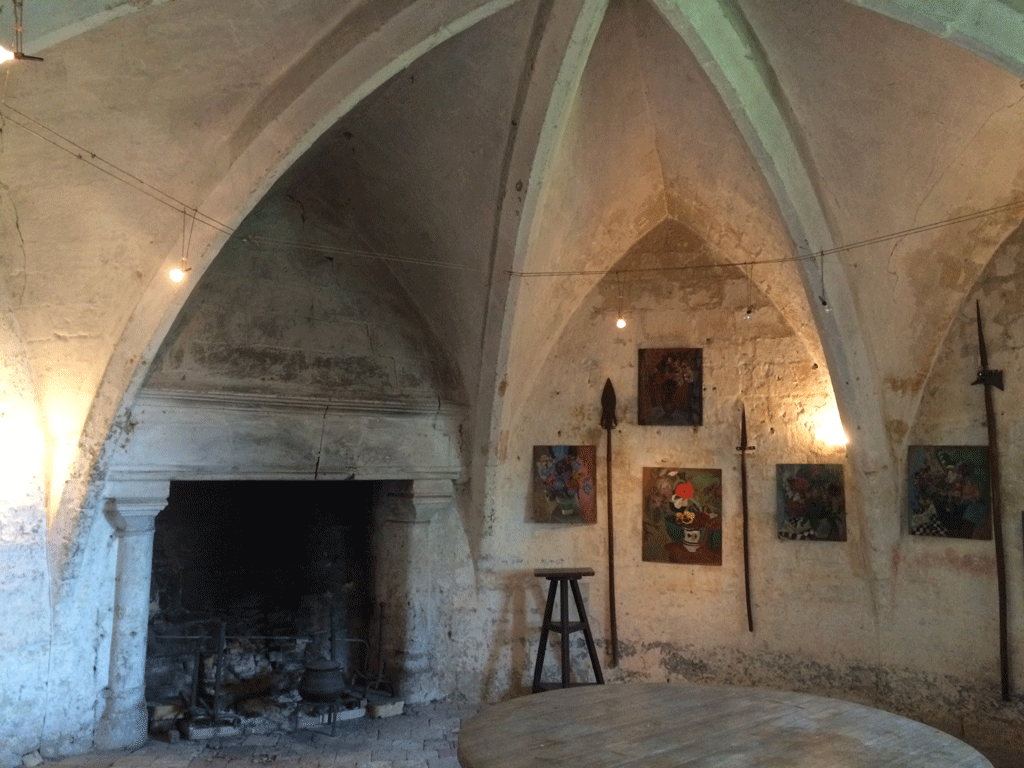
The name itself is derived from the name of the first known owner, Geoffroy de Saint Médard. It became Saint-Mars after André de Saint-Médard died in the Holy Land in 1210 then for some unknown reason turned into Cinq-Mars in the 16th century.
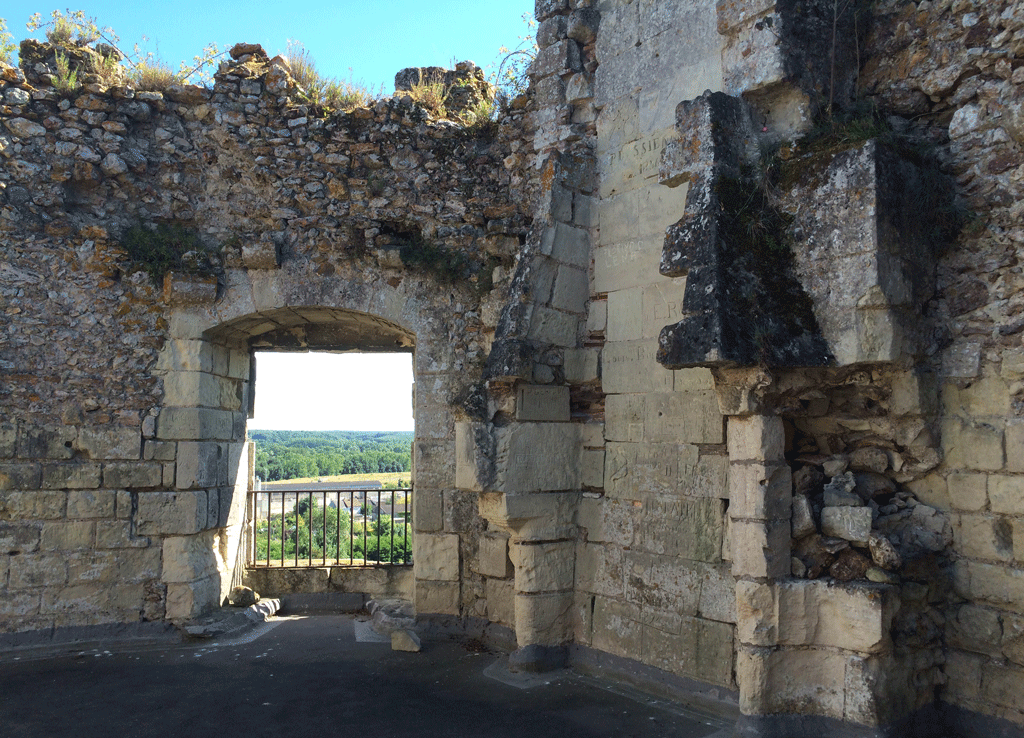
The castle’s most famous character is Henri Ruzze d’Effiat, Marquis of Cinq-Mars, favourite of Louis XIII, who was beheaded for treason at the age of 22. According to local legend, the castle itself and even the trees were decapitated. His tragic end inspired Alfred de Vigny’s novel, “Cinq Mars” which I’ve never read. Maybe I should.
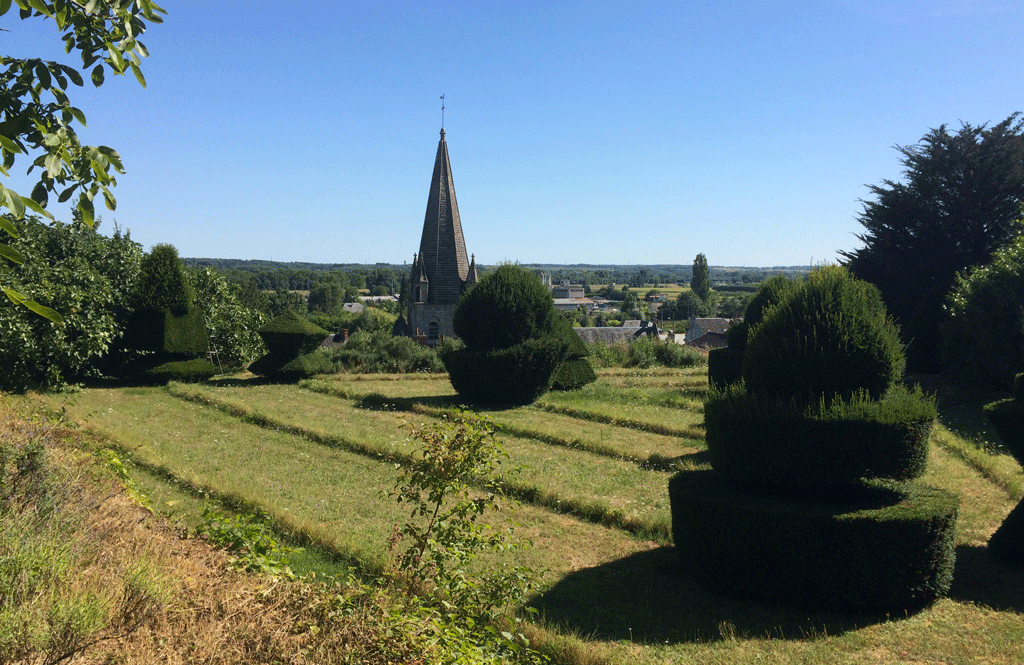
It’s nearly 5 pm and we are not even halfway along our itinerary. Jean Michel suggests we go to Langeais and follow an alternate much shorter route back to Luynes.
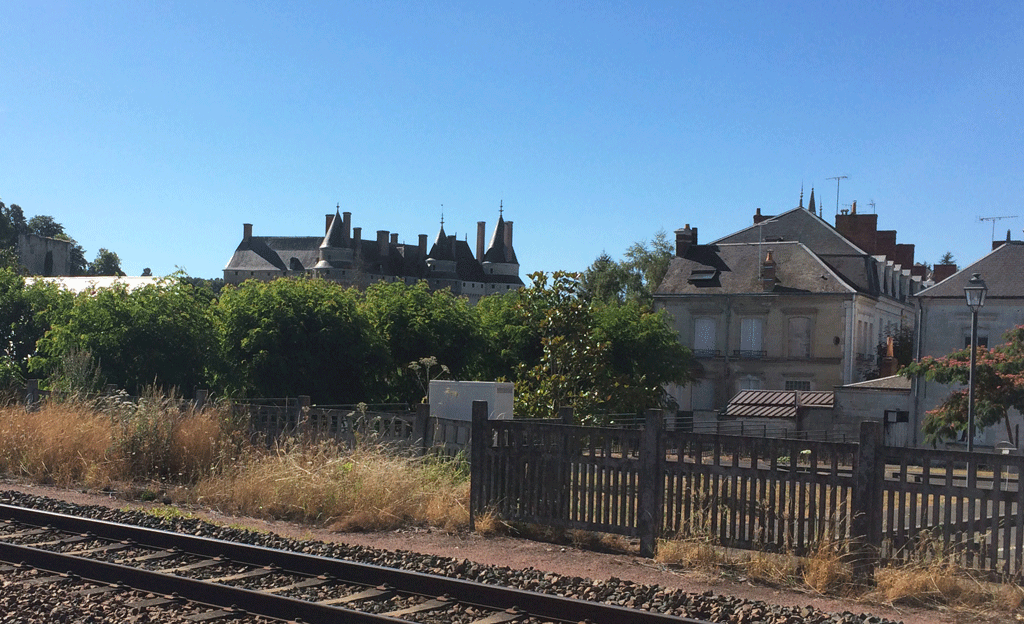
We find ourselves on a main road but can see the bike route over to the right which means scrambling up and down an embankment. It’s a very rough path but it’s better than having traffic whizzing past at 90 kph! We finally see Langeais on the other side of the railway track. Somehow we’ve missed our exit and the path gives out. We squeeze past a post and return to the main road but fortunately we only have to take it a short distance.
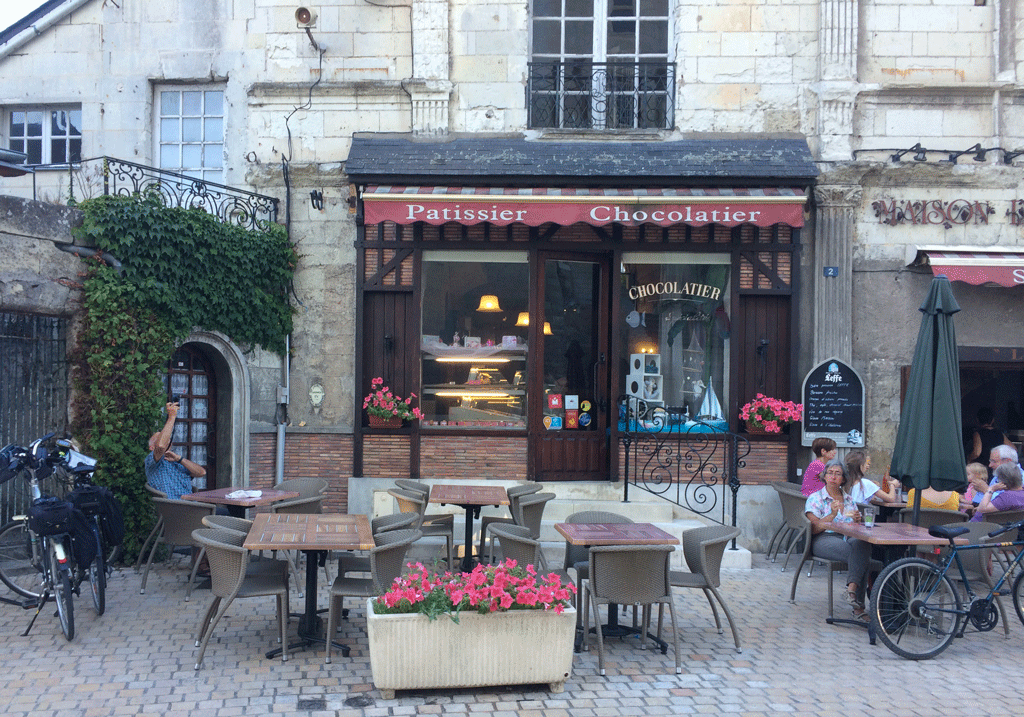
Five minutes later we’re sitting in front of one of our favourite teashops – La Maison de Rabelais, just opposite the castle (which we’ve visited several times before), which is a combined patissier, chocolatier and glacier. After restoring ourselves with an excellent ice-cream, we return via another route which is also a main road. I think I preferred the bumpy path.
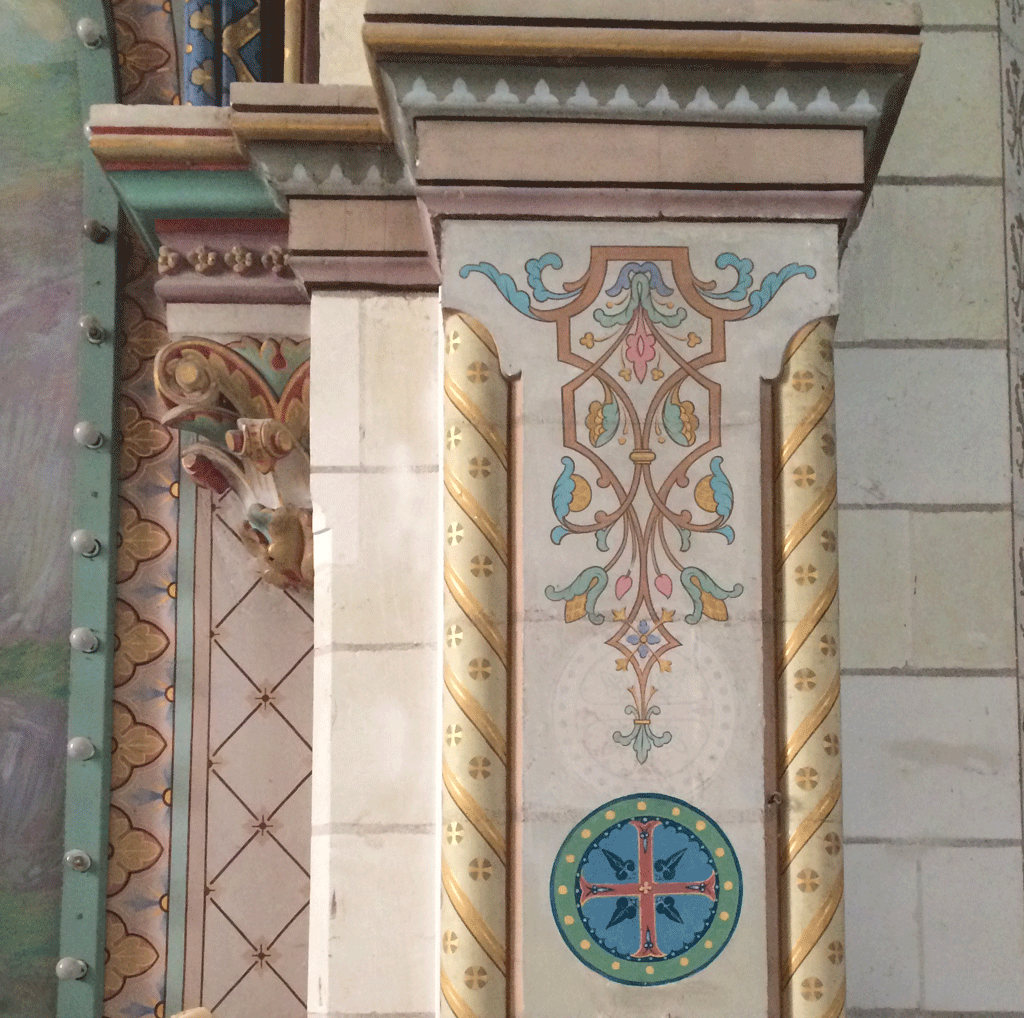
At Saint-Etienne I ask for a break and we visit the church. Although it is recent – 1860 – I find the inside very harmonious and attractive with its painted pillars and mosaic floors.
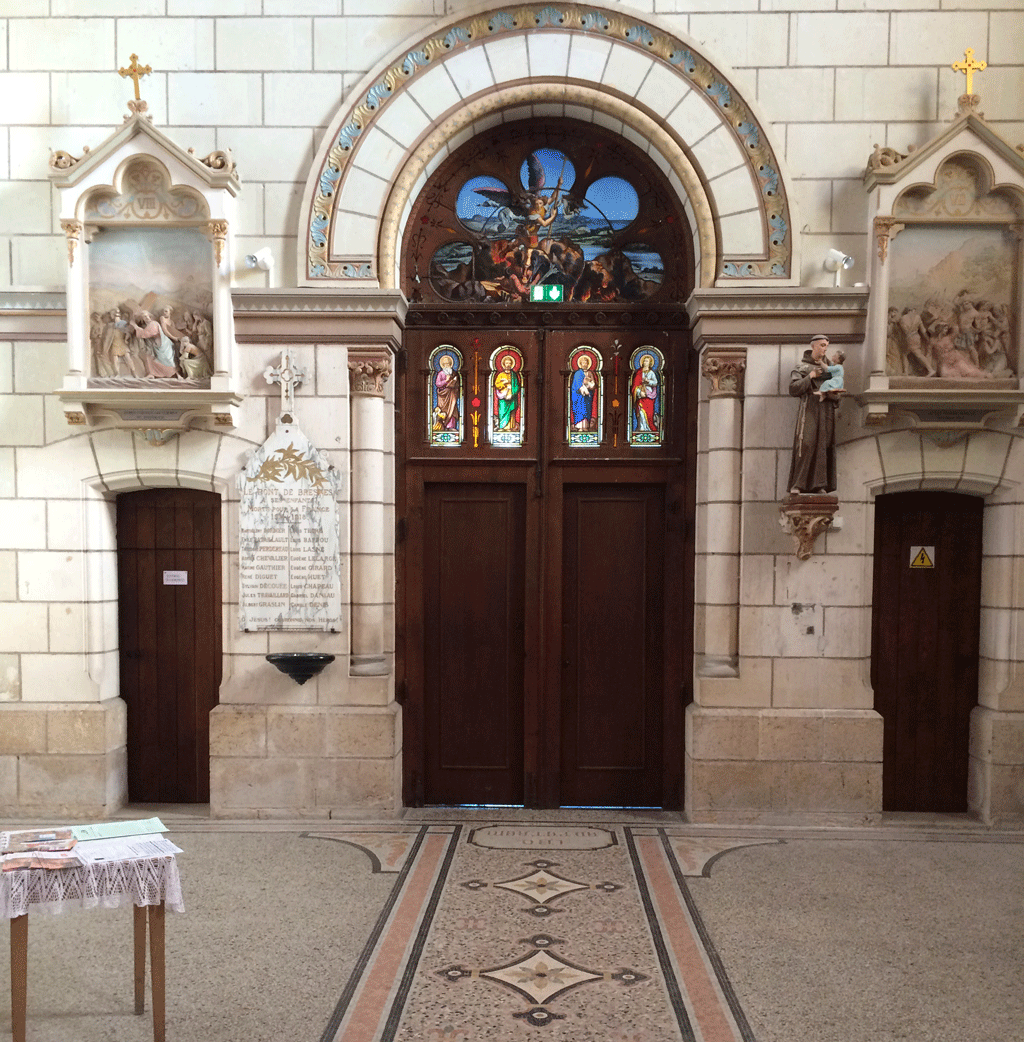
We arrive back at the car around 7.30 pm and it’s still full daylight. We didn’t get to Château de Champchevrier but we can go there another time. It’s one of the most interesting and enjoyable rides in the Loire we’ve had in a long time!
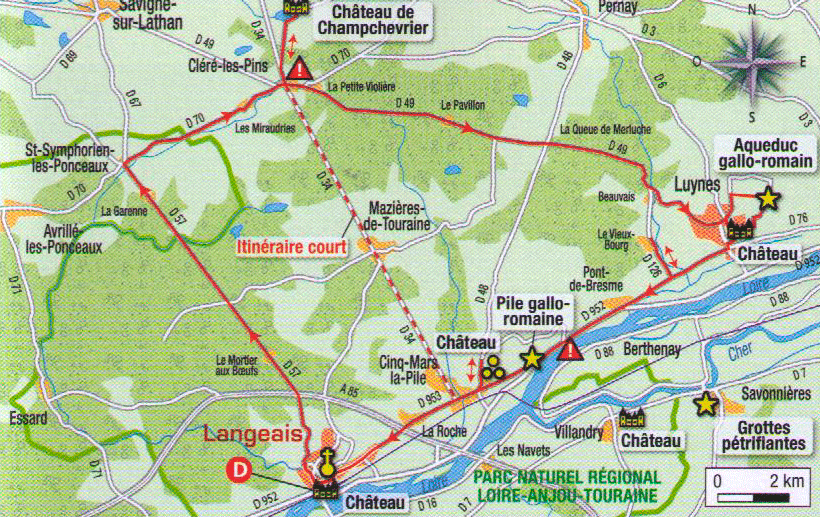
 I’m entering this post in Lou Messugo’s All About France monthly blog link-up. For other posts about France, click here.
I’m entering this post in Lou Messugo’s All About France monthly blog link-up. For other posts about France, click here.
When we discovered that the Taj Mahal is close to New Delhi which was our intended stopover on the way to Australia flying Air India, we immediately wanted to visit it but we had lots of questions:
I have written 9 posts detailing our trip (see below) which we thoroughly enjoyed but I thought it might be useful to answer the above questions in a 10th post.
We had a 24-hour stopover on the way to Australia during which we spent an afternoon visiting Old Delhi, spent the night in Delhi and left for the airport next morning.
On the return journey, we had a 5-night stopover. We arrived late afternoon, spent the night in Delhi, visited New Delhi in the morning, then spent two nights in Jaipur and one in Agra (next to the Taj Mahal) visiting the major sites in what is known as the Golden Triangle. We spent the last night in Delhi again before heading back to Paris next morning.
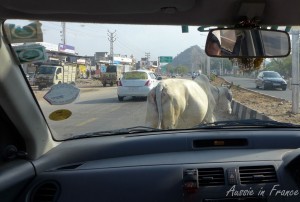
We couldn’t understand initially why it would take us 5 ½ hours to drive 270 km to Jaipur, 6 hours to drive 245 km from Jaipur to Agra and 4 hours to cover the 205 km from Agra to Delhi, but the answer is simple: despite the fact that there are motorways, the going is slow from Delhi to Jaipur to Agra because you share the road with vehicles of every shape and size, both motorized and unmotorized, not to mention the cows, donkeys and pedestrians who wander across the road whenever there is a village. The stretch from Agra to Delhi is shorter because there is a real motorway with no animals or pedestrians on it.
We found that the length of time we had chosen was perfect. We didn’t have to hurry everywhere and we had time to rest at the end of the day. The only thing we didn’t do is shop (we’re not shoppers) but there were plenty of occasions (and time) to do so had we wanted.
WARNING: THE TAJ MAHAL IS NOT OPEN ON FRIDAYS so you should schedule your visit accordingly, preferably avoiding the weekend there as well.
We had been told by several people that we should have a private organized tour. Considering our age (early sixties) and the fact that we do not like travelling in groups, the choice was between going it alone or finding a private organized tour. I had been to India before on my own for professional reasons and did not want the hassle of looking for hotels, restaurants and trains and finding our way about in general. Having seen the traffic in India, I did not even consider hiring a car. Our choice of a private tour turned out to be excellent.
We went onto Trip Advisor and I sent off requests to the three organizations at the top of the list, explaining what I wanted which included French guides for Jean Michel. I received a very friendly reply from Trinetra Tours with a suggested itinerary and price. I adjusted the itinerary to our needs and schedule and Trinetra sent us a new proposal. We had several exchanges during which my various questions were answered and our visas were processed. We then transferred half the amount to their account in India. We paid the balance on our arrival.
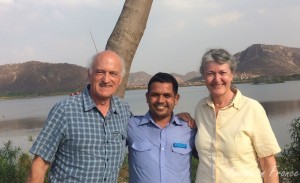
We were very satisfied with Trinetra both before and during the trip. We were assigned a general coordinator who met us at the airport and took us to our hotel in a car with an assigned driver who was very friendly and whose English, although not excellent, was more than adequate for us to communicate.
The guide joined us at the hotel and stayed with us for the rest of the day. The driver would stop just outside the place we were to visit and pick us up afterwards after receiving a call from the guide on his cellphone.
During the visit of the Golden Triangle, a local coordinator met us at each hotel and a new guide would join us when we reached each destination. We had the same delightful Himalayan driver, Rajender Negi, from beginning to end. He was extremely competent and I was never afraid in the Indian traffic. He was also very willing to share his vision of India with us and asked many questions about France and Australia.
The guide or the driver would choose our lunch venue which was not included in the price. Neither was the evening meal but there was always a restaurant at the hotel. We personally only had fruit at night time and something from the mini bar in our room.
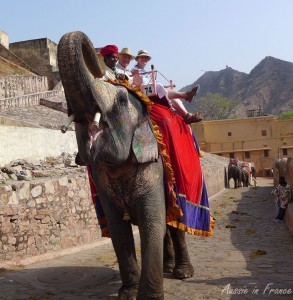
The guide looked after buying tickets to the different monuments and we reimbursed him. He organized our elephant and rickshaw ride. He kept the beggars away and generally made our visit stress-free and enjoyable. We were not fully satisfied with the first guide in Delhi so asked for a different one on our return. He was much better. We also did not like the guide who took us to Fatehpur Sikri so asked for another guide for the Taj Mahal next day. He was replaced and the new guide was excellent. All the guides spoke good French and were knowledgeable. Our guide in Jaipur was outstanding.
I do not think that there would have been a problem with an English-speaking guide but we had specifically asked for a French guide and Trinetra did not have much experience in this field. The fact that we were able to phone and ask for another guide and that our request was immediately met is an important point in their favour.
The general coordinator accompanied us to the airport on both occasions and helped us with the formalities.
Bottled water was provided throughout the trip.
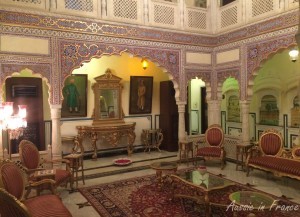
We opted for the hotels proposed in the initial itinerary provided by Trinetra but we could have chosen a higher category had we wished to do so (obviously with a price supplement). The hotel in New Delhi, Justa Residence Greater Kalesh, was not marvelous but it was clean and spacious and the beds were comfortable. The oversights on the first stopover were remedied on the second trip and we were even upgraded to a suite the third time. The breakfast was very good and the staff were friendly. It was just a little “worn out”. The hotel in Jaipur, Shahpura House, was really beautiful and we wouldn’t have missed it for anything. The Radisson Blue in Agra was well located, well-appointed and impersonal. The breakfast was outstanding.
Jean Michel studied his French guidebook and listed the sights that he thought we should see. We then compared them with the places on Trinetra’s itinerary and asked for a couple of additions. This is what we came up with:
Old Delhi:
Jamma Mosque, Chandni Chowk, Raj Ghat, a cycle rickshaw ride through the bazaar and Akshardham Temple (not on the itinerary but we were very impressed by it).
New Delhi:
Humayun’s Tomb, Qutub Minar, the Embassy area, government buildings, India Gate and Connaught Place.
Jaipur:
Amber Fort and an elephant ride, Shiromani Temple, Palace of the Winds, City Palace, The Observatory and Govind Dev Ji temple.
Between Jaipur and Agra:
Fatehpur Sikri including the mosque
Agra:
The Moonlight Garden (which is closed at night!), the Taj Mahal at sunrise, Agra Fort and the Baby Taj (not on the initial itinerary but worth a visit).
For some obscure reason, you need to get an Indian visa before you go to India even for a one-night stopover and you can only apply during the month preceding your visit. You also need a square passport photo. Each country has a website that you have to apply through. You can’t apply directly to the consulate. We found the whole visa experience quite stressful because I have two passports and we were entering India twice at an interval of less than 45 days. In the end, it all worked out but we had to go to Paris to put in our applications.
I suggest you read my post and apply on-line immediately after the one-month interval starts. The information on the website is not necessarily up-to-date.
The Indian Visa http://www.aussieinfrance.com/2016/02/the-indian-visa/
I was worried about the modesty issue. In fact, there are no requirements for Hindu temples or for the Taj Mahal apart from normal decency. However, at the Jamma Mosque in New Delhi both men and women of European origin are obliged to wear a wrap-around skirt or a sort of hairdresser’s cape and remove their shoes. At the Taj Mahal, the ticket includes “overshoes”. At the Fatehpur Sikri mosque, women must wear long skirts. The best solution is to take a light wrap-around skirt in your bag and use it if necessary.
Our first visit was mid-February. It was warm in Delhi but not overwhelming and cooler in the morning. Our second visit was mid-March. We were very hot in the middle of the day especially in Jaipur and Agra. I only needed a long-sleeved shirt for our 6.30 am visit to the Taj Mahal. A hat is a must.
What medication should you take?
We asked our doctor for diarrhea tablets and antibiotics before we left. We did not take probiotics either before or during our trip. We always drank bottled water and cleaned our teeth with boiled water (all the hotels had electric jugs). We were strict vegetarians during our stay as we had been told that we were more likely to get sick from eating meat and chicken in particular. We always had curds or plain yoghurt at the end of the meal, which I had learnt to do on my previous trip to India. We only drank tea with water we had boiled ourselves. We didn’t have any digestive problems whatsoever.
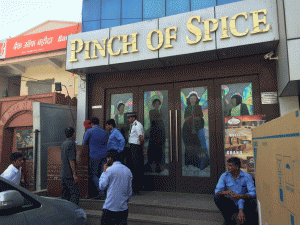
Although we would have liked more “authentic” restaurants, we decided to accept the ones proposed by our guides and driver rather than run the risk of being sick. The tourist restaurants serve Indian food that is usually not too spicy and is especially prepared for Europeans. It is very reasonably priced (around 1200 rupees – 16 euro – for the two of us, including water) and the toilets are usually clean. You should always have your own tissues though.
We paid a total of 82,800 rupees for two people (1130 euro at the exchange rate in February 2016), broken down into 13 000 rupees for the first stay in Delhi and 69,800 rupees for the Golden Triangle. It included accommodation on a double occupancy basis, a buffet breakfast, the rickshaw ride in Delhi and the elephant ride in Jaipur, all journeys in an air-conditioned car, bottled water during the day, local guides and dinner in an Indian home on the last evening which we decided to forego due to the distance we would have had to travel.
Tipping is a way of life in India and we were very pleased that Trinetra gave us guidelines on how much to tip the coordinators, drivers, guides, bellboys, etc. It made it much easier.
I hope these tips will help you to organize you visit to India. You’ll find more details in the posts below and I’ll be happy to answer any questions in the comments section.
Many thanks to Trinetra Tours for making our stay so enjoyable: http://www.trinetratoursindia.com; tours@trinetratoursindia.com.
They also run tours in Nepal, Bhutan, South America, Europe, Middle East, Sri Lanka, Africa and S.E.Asia – Vietnam, Laos, Cambodia, Myanmar
My other posts on India:
Getting to Delhi and First Impressions
More Delhi and the Road to Jaipur
Jaipur – temples, elephants, forts and palaces
The Road to Agra, Fatehpur Sikri and the Moonlight Gardens
It’s 9.15 am and we’ve finished our luxurious breakfast at the Radisson Blue still under the magic of our early morning visit to the Taj Mahal and are about to meet up with our guide, Vivek, to visit Agra Fort. After we get in the car and greet our driver Rajendar, Vivek suggests we stop off at a showroom called the Agra Marble Emporium to see how the inlay marble work on the TaJ Mahal is still made today by descendants of the original artisans. We don’t have to buy anything, he reassures us. Here we go again, I think.
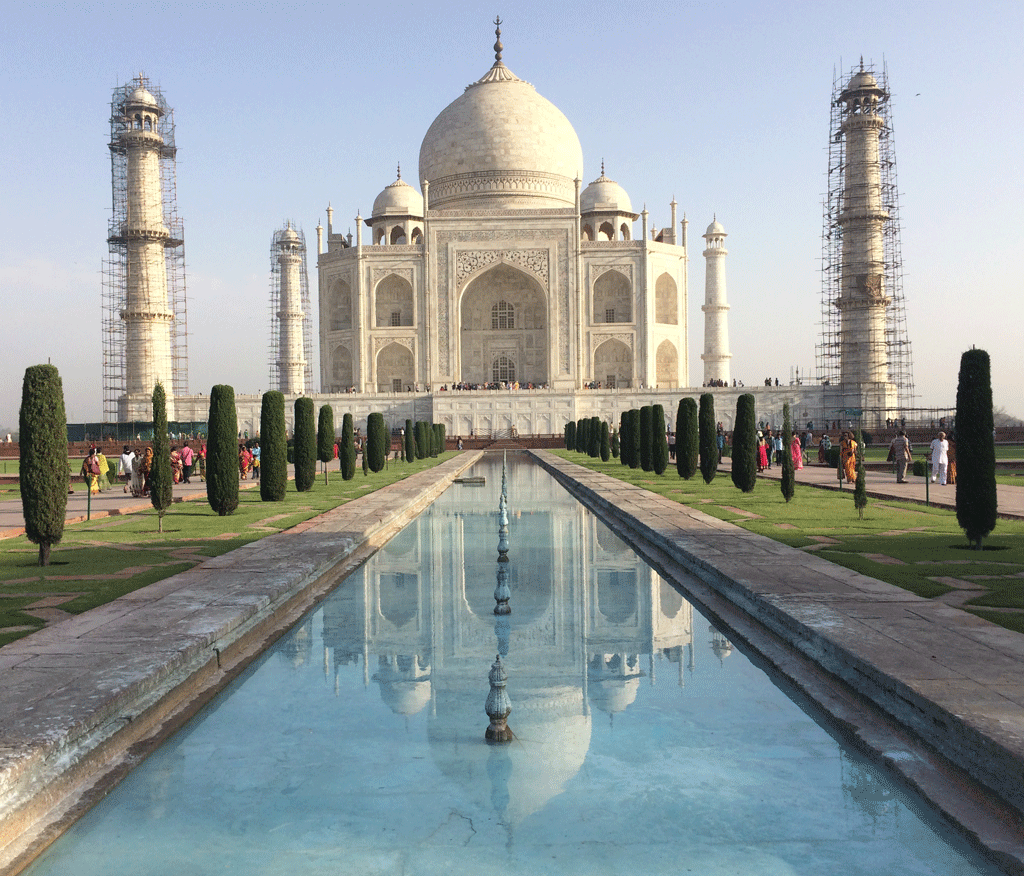
A man called Raj greets us and sits us down in front of a small table. Two young artisans are working next to him, one with a hand-driven grinding wheel. Raj explains how the pattern is drawn on the marble, then etched out by hand.
The tiny hand-ground inlay pieces are then inserted one by one – lapis lazuli for blue, tourmaline for red, crysophrase for green and mother-of-pearl for white. Once all the pieces are in place, they are taken out again then glued in after which they are sanded so that they are exactly flush with the marble.
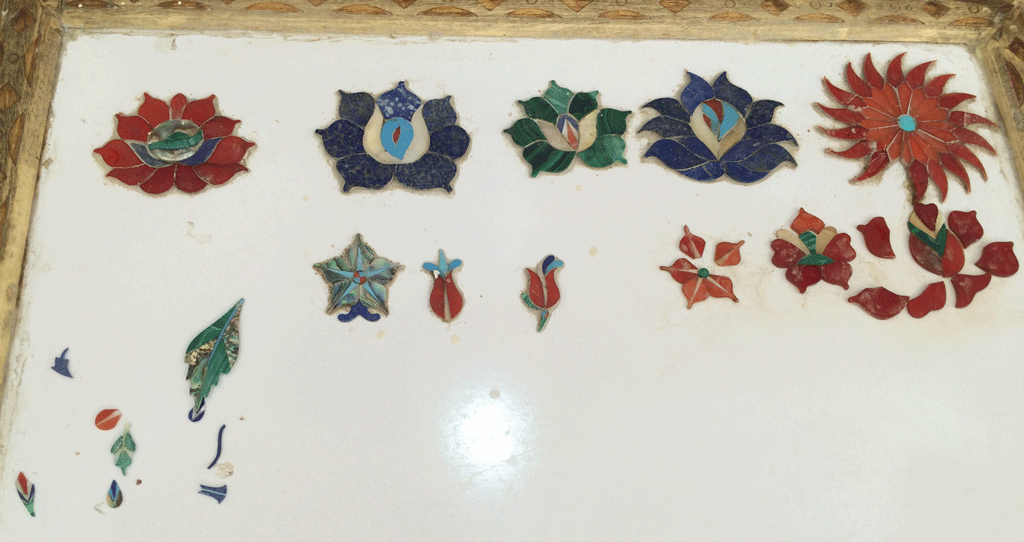
Raj takes us into the showroom and I, the non-shopper, am overwhelmed. I love everything I see! I could buy half the shop – except perhaps the elephants. Raj invites us to take a seat and starts showing us some little translucent marble inlay tables that are very reasonably priced, shipping included. I am becoming seriously interested when Jean Michel indicates that he wants to talk to me.
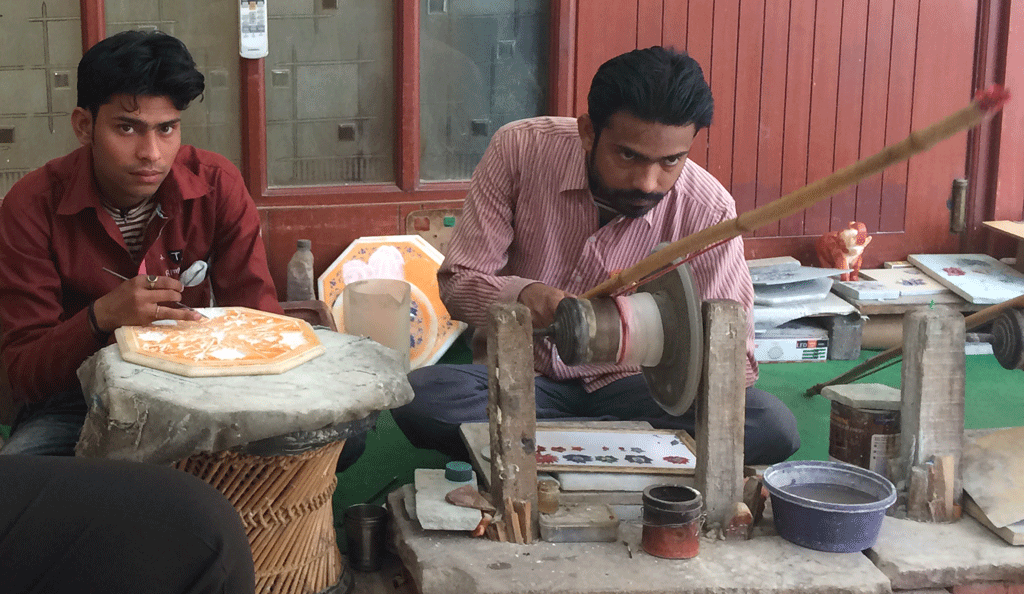
He then tells me that he has been wanting an marble inlay table for many years but in France, the price is prohibitive. He asks if I like the octagonal green marble table in the middle of the room. Well, yes, it so happens I do. After inquiring about the price, he tells me he would like to buy it. Wow! We discuss the matter with Raj and he has the table cleared. We then wonder about other shapes and sizes so he has some rectangular ones brought to the middle of the room, one of which was made by his father, he tells us.
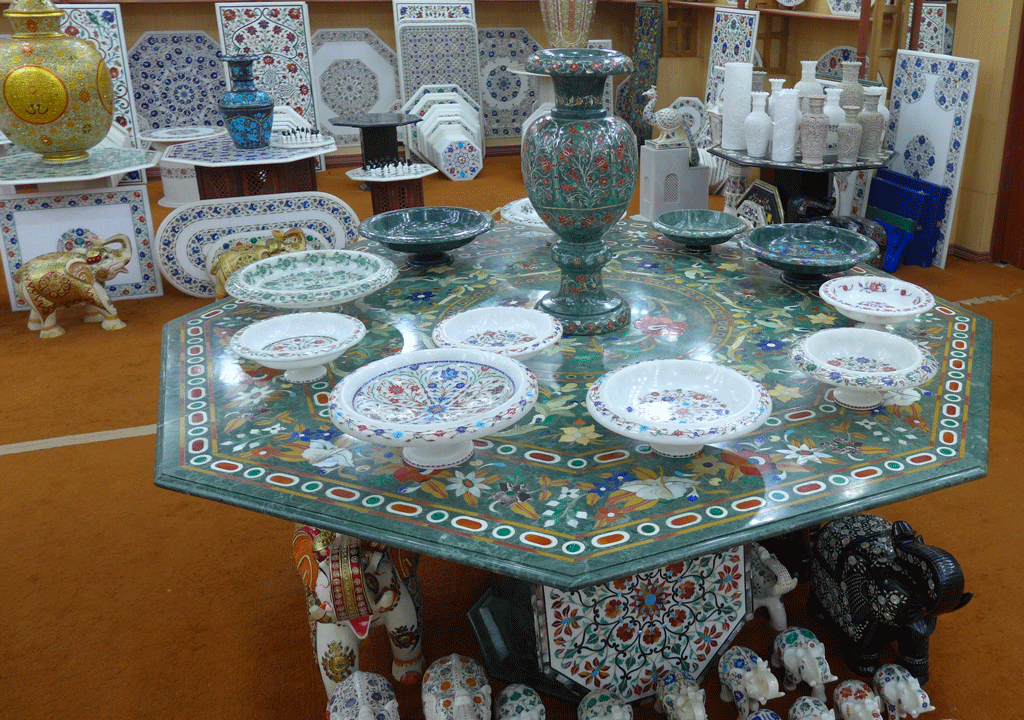
In the end, we decide on a smaller diameter made-to-measure repliqua of the octagonal table because I am afraid it might be too big. While Jean Michel is negotiating the price, I take another look around the room. I’d like to take a small souvenir home to a friend. I am shown into another room with little marble inlay boxes and choose one. Raj comes in and asks me my favourite colour. He then gives me another box as a present.
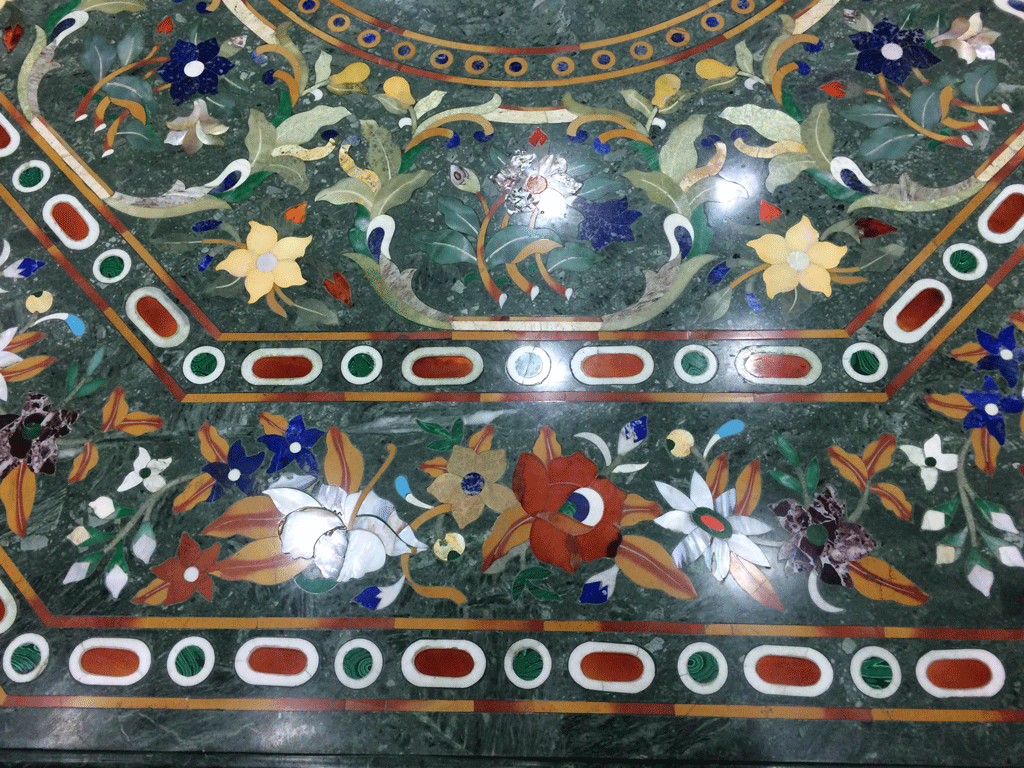
We leave the showroom walking on air (so does Vivek!) and set off for Agra Fort. Our table should arrive in France in about three months’ time.
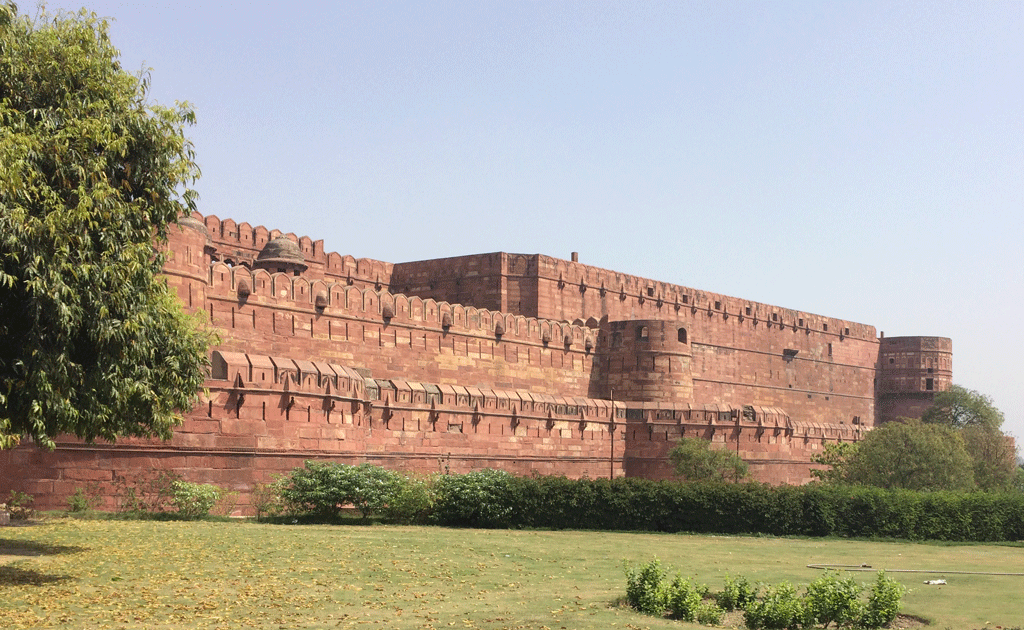
Agra Fort is actually a walled city today but was originally a fort. Do you remember Akbar, the Mughal emperor who built Fatehpur Sikri that we visited yesterday? Because of its central location, he made Agra his capital in 1558. Akbar had the fort rebuilt with his favourite red sandstone but it was not until the reign of his grandson, Shah Jahan, that it became what it is today.
As we know, Shah Jahan, who built the Taj Mahal in memory of his wife, Mumtaz Mahal, had a penchant for white marble so he destroyed some of the earlier buildings in the fort and replaced them with inlaid marble.
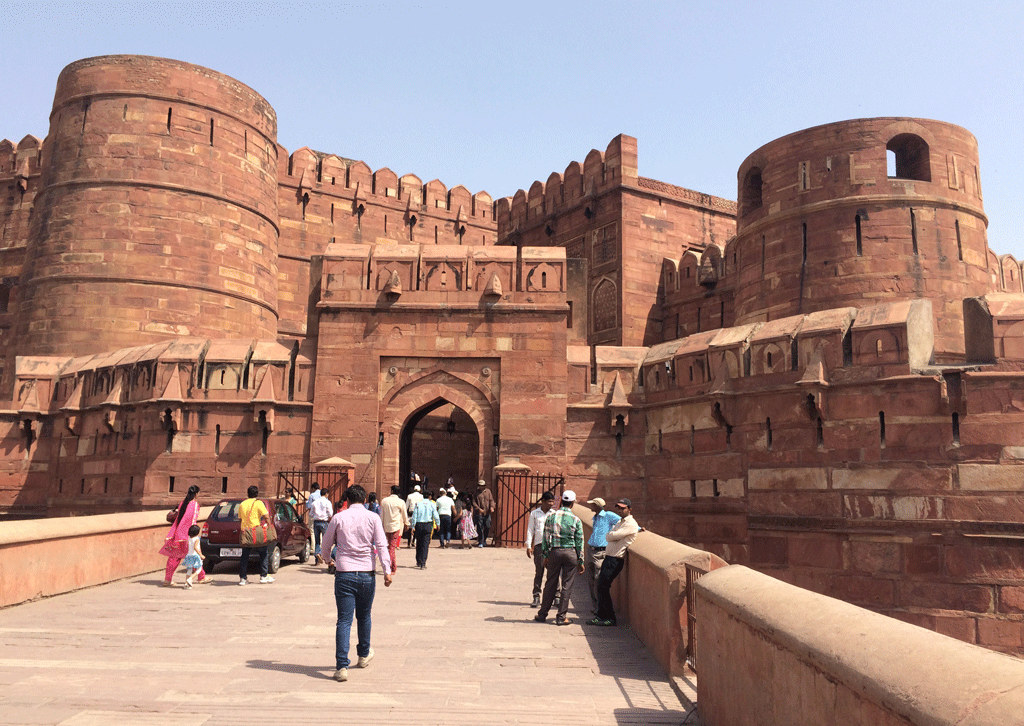
The impressive double walls are 20 m high and 2.5 km in circumference and contain a labyrinth of buildings, many of which are still used by the military so are not open to the general public.
The sole entry point today is the Amar Singh Gate. It used to be guarded by a crocodile-infested moat. Today, there are only a few monkeys.
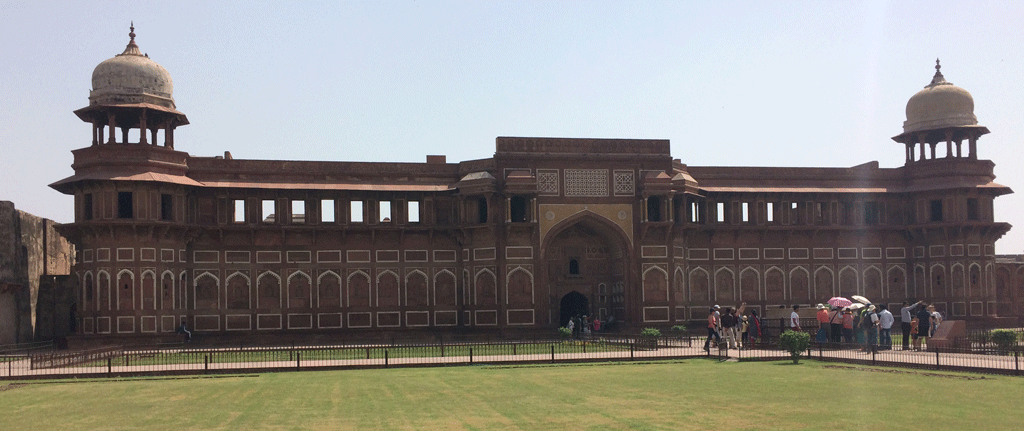
We start with the huge red sandstone building of Jahangir’s Palace, probably built by Akbar for his son Jahangir. Its beautiful galleries are intricately carved. A huge bowl in front of the palace called Hauz_i-Jehangir, carved out of a single block of stone, was used for bathing.
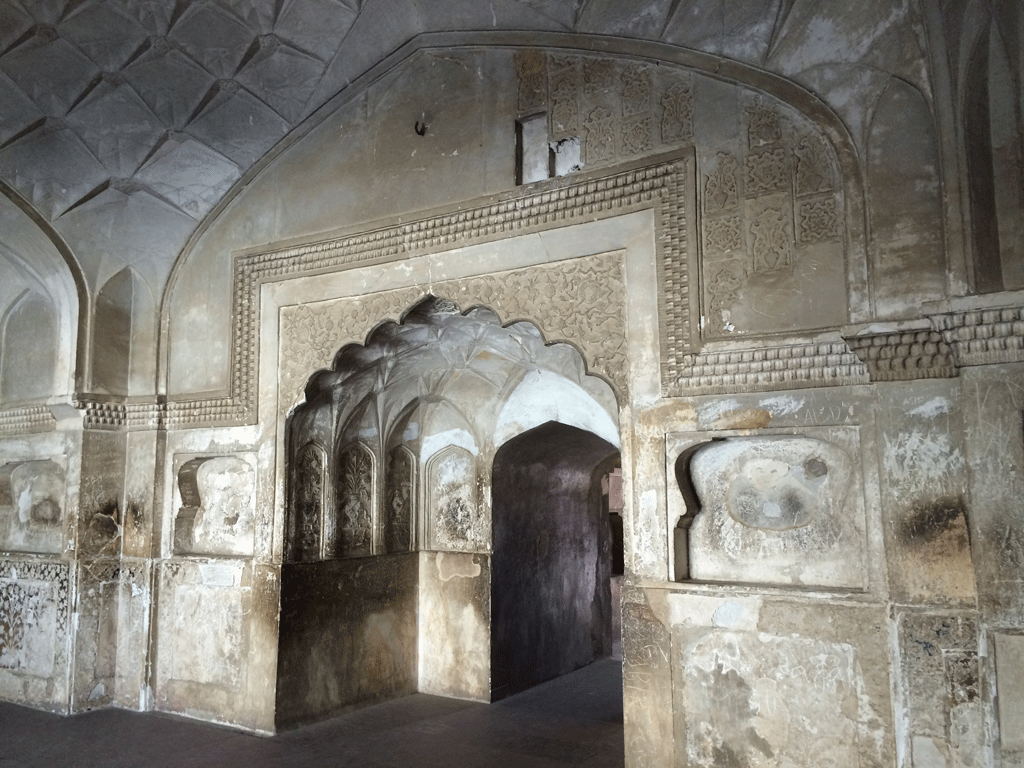
Next is the Diwan-i-Am or Hall of Public Audiences, used by our friend Shah Jahan for domestic affairs. Inside is a throne room where the Emperor used to receive petitioners.
We walk up a small staircase into a large courtyard. On the left is the women’s mosque, Nagina Masjid or Gem Mosque, built by Shah Jahan in 1635.
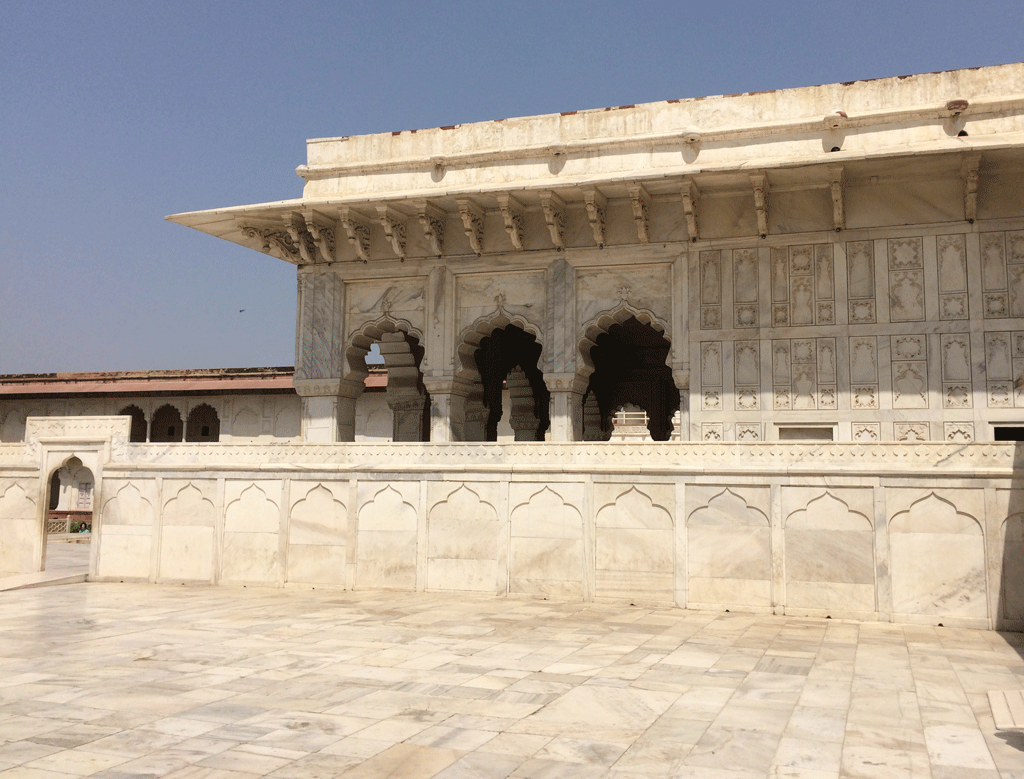
Vivek takes us across the courtyard to the Diwan-i-Khas or Hall of Private Audiences, which was reserved for VIPs and is much more elaborate.
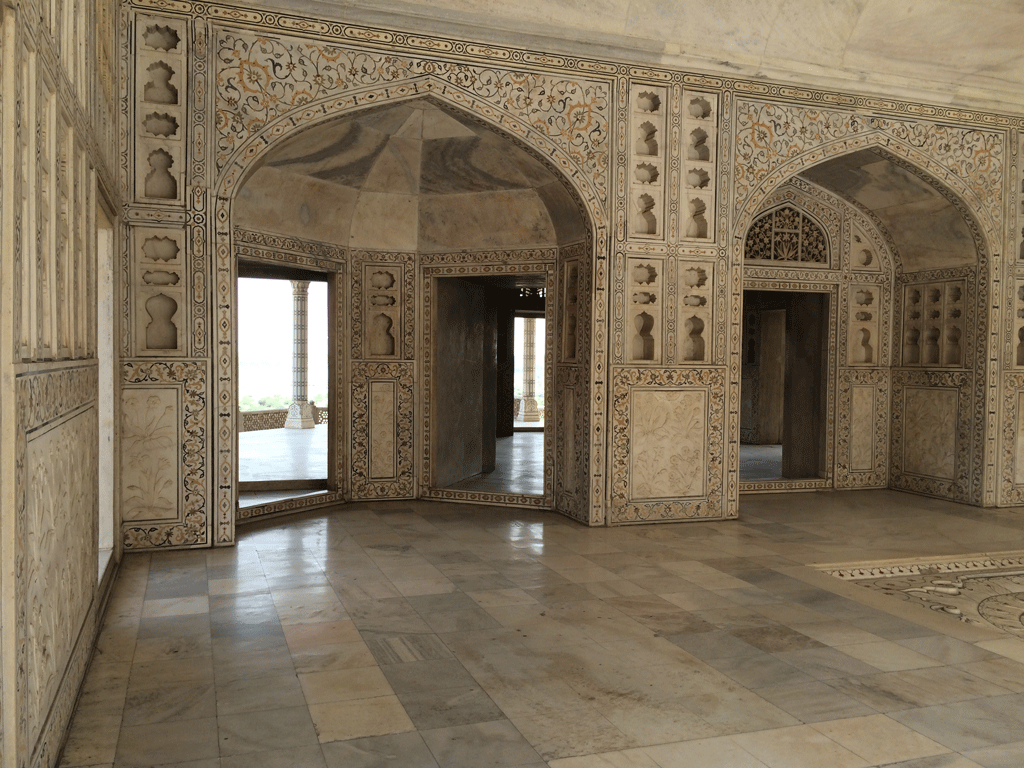
Next we come to Muasamman Burj, the octogonal white-marble tower and palace where Shah Jahan was imprisoned for eight years until his death in 1666. He could see the Taj Mahal from his marble balcony. We can just make it out in the distance.
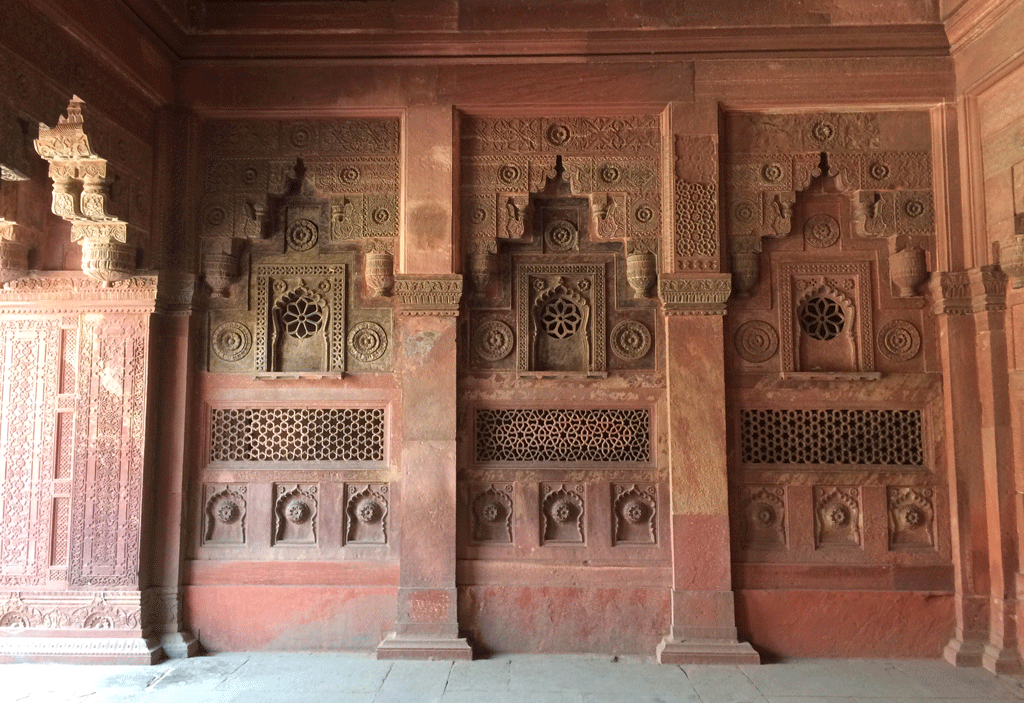
Vivek points out the buffalo at the water’s edge and the washerwomen on the other side. I wonder whether the job is any easier with the Taj Mahal as a backdrop.

It’s getting hotter by the minute so we all agree that it’s time for lunch. Vivek takes us to Pinch of Spice, another typical Indian restaurant for foreigners. We opt for the buffet upstairs and stick with our usual vegetarian fare followed by yoghurt and instant coffee. Vivek offers to take somewhere else for a proper Italian espresso but when in Rome …
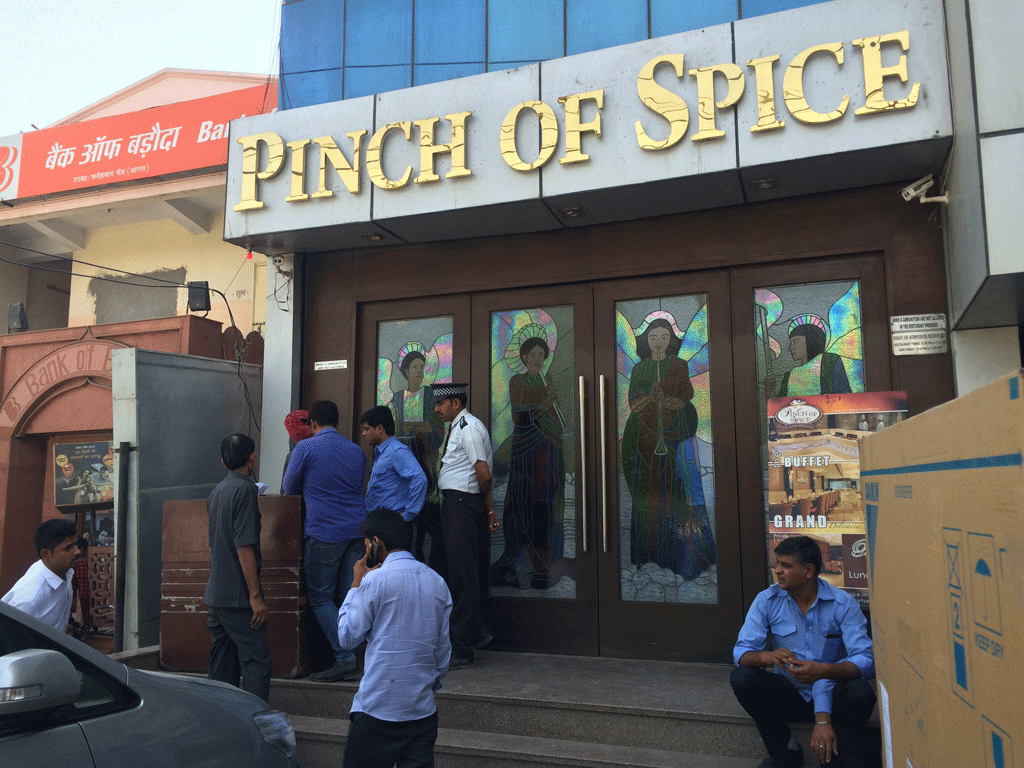
Outside, all the drivers are waiting for their sightseers, Rajendar among them. We still have the Baby Taj to visit before driving back to Delhi. But first, Vivek explains, the Agra Marble Emporium wants us to go back again and check something. It turns out to be the height of the marble stand that will support the table. We promise to confirm once we get back home and can check our own tables.
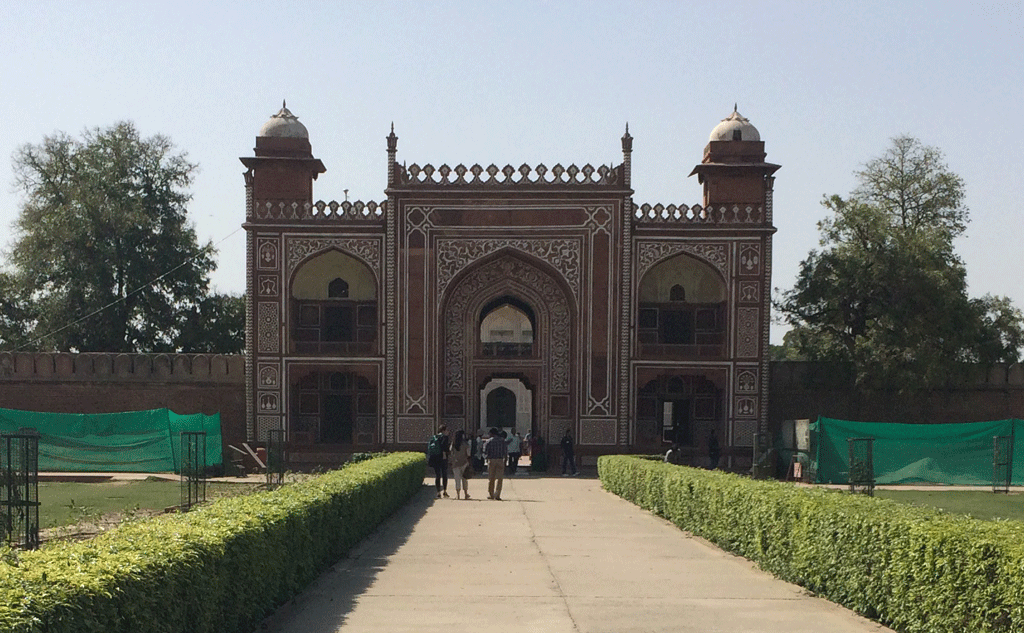
Vivek then tells us that Rajendar will take us to the Baby Taj as we’re running out of time and his assignment is up. That’s fine by us – it is an extra after all and we can visit it on our own with a guide book. When we buy our tickets, the vendor wants to keep them, but Jean Michel insists on having them back as he knows that since it’s a public building, the tickets will be “recycled”.
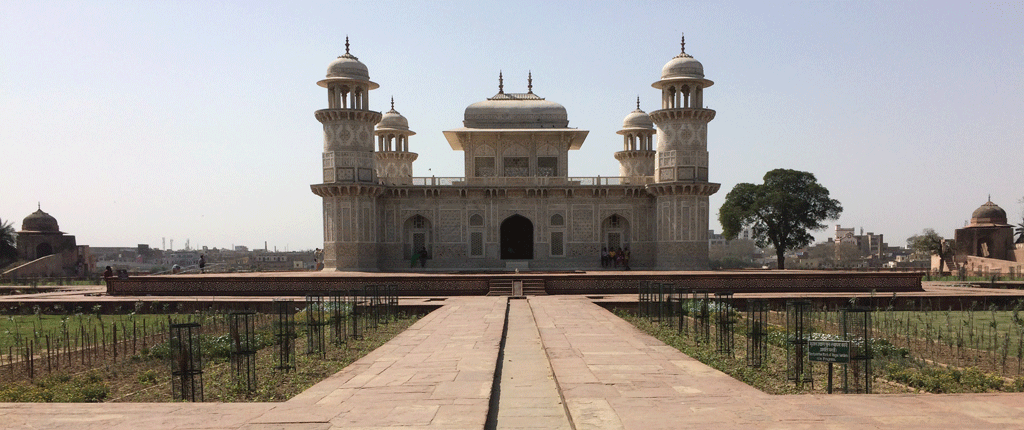
It’s not really called the Baby Taj of course, but the tomb of I’timad-ud-Daulah. Also a Mughal mausoleum, it is sometimes described as a “practice” for the Taj Mahal. Built in 1622 to 1628 (twenty years before the Taj Mahal was completed), it is considered to be a transition between the first phase of monumental Mughal architecture with its red sandstone and marble decorations – an example we’ve already seen is Humayun’s Tomb in New Delhi – and the second phase, based on white marble and pietra dura inlay, exemplified by the Taj Mahal.
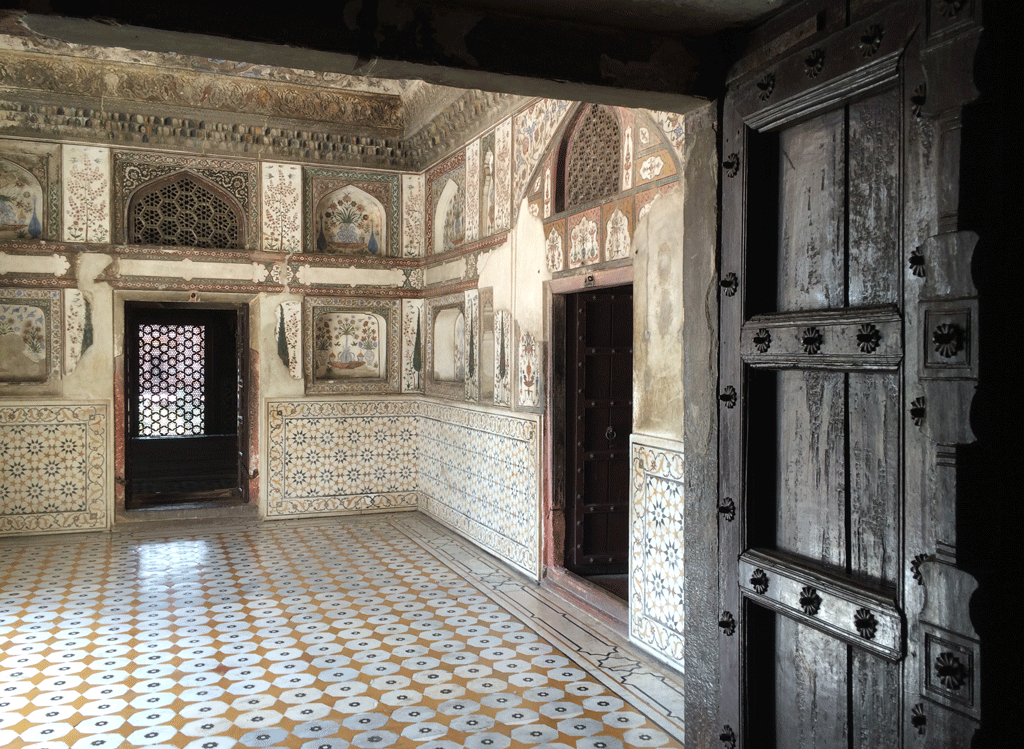
It was commissioned by Jahangir’s wife for her father, Mirza Ghiyas Beg, originally a Persian amir in exile. He was also the grandfather of Mumtaz Mahal for whom the Taj Mahal was built.
There are only a handful of visitors so we are able to enjoy the visit practically undisturbed. There is the same type of inlay work as the Taj Mahal, often more complex, depicting cypress trees, wine bottles, cut fruit and bouquets in vases. It is also sadly in need of renovation.
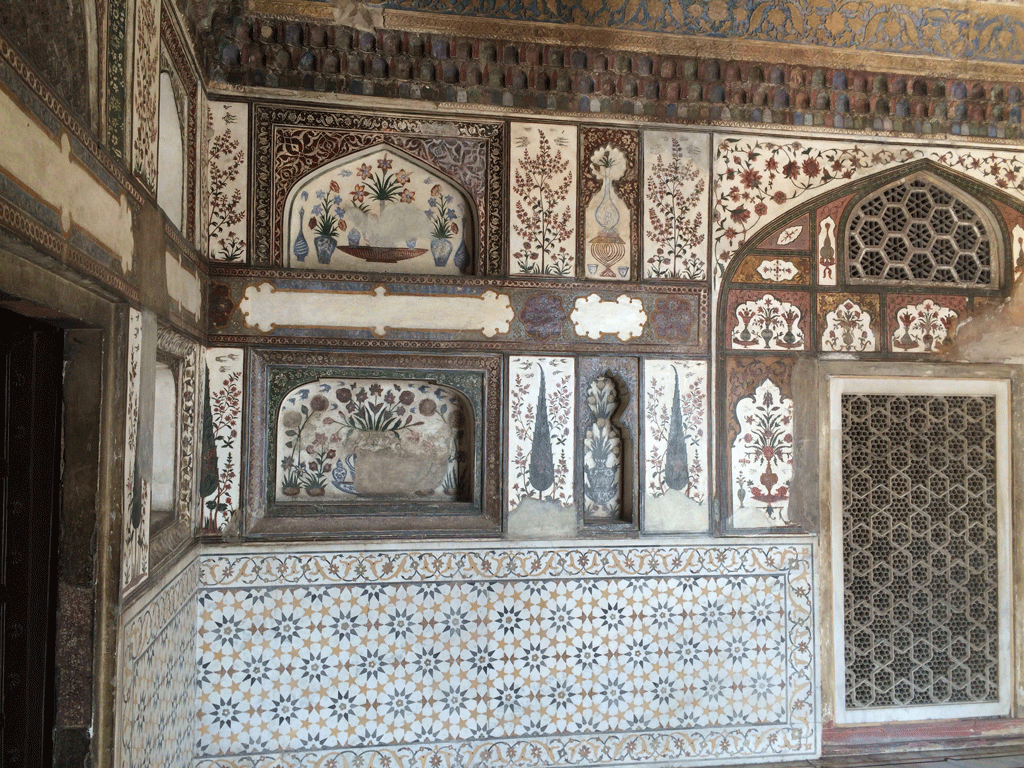
There are several buildings, all on a symmetrical pattern. The first combines red sandstone and inlay work while the second, along the river front, is made of white marble. There are small domed buildings on each side, with gardens in the process of being refurbished.
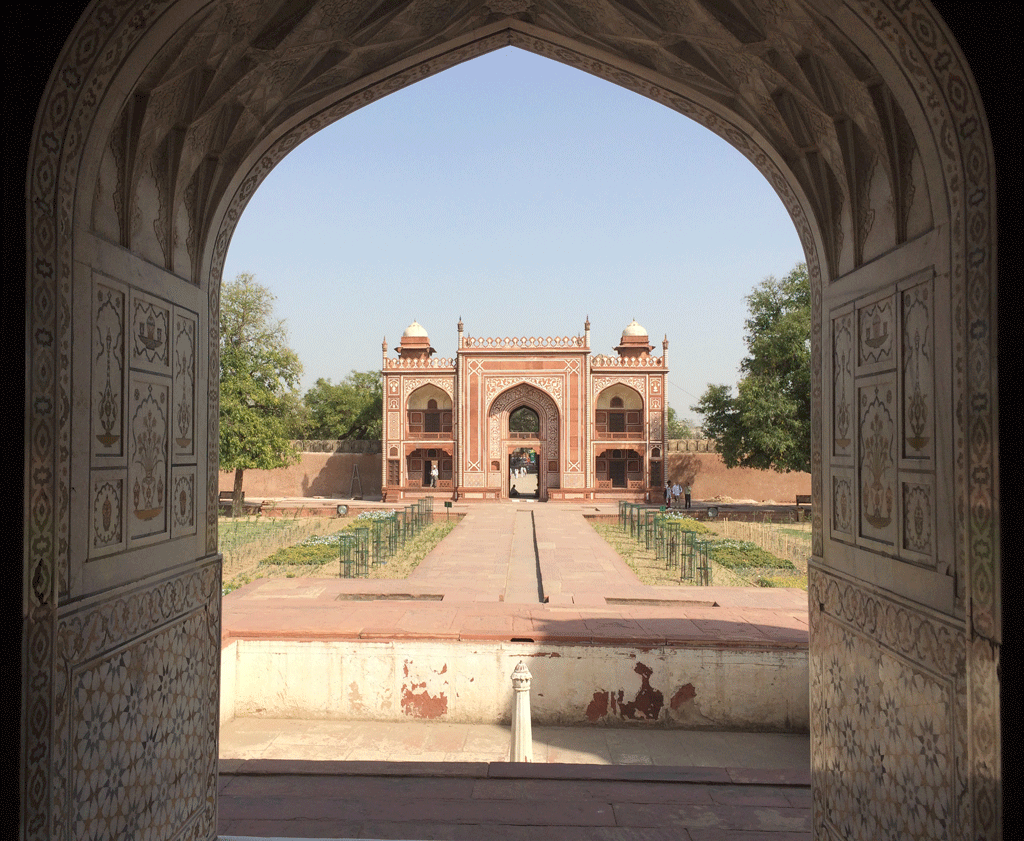
We feel it is a fitting end to our visit of Agra.
The next few hours are spent with Rajendar on a “real” motorway to New Delhi, the only one we’ve seen so far. There are not many cars and we see our first accident, no doubt due to the fact that the cars can go faster than usual. Rajendar continues to ask questions about France, always beginning with “Madam. In the France …” By the end of the trip, I feel I have learnt quite a lot about India just answering his queries!
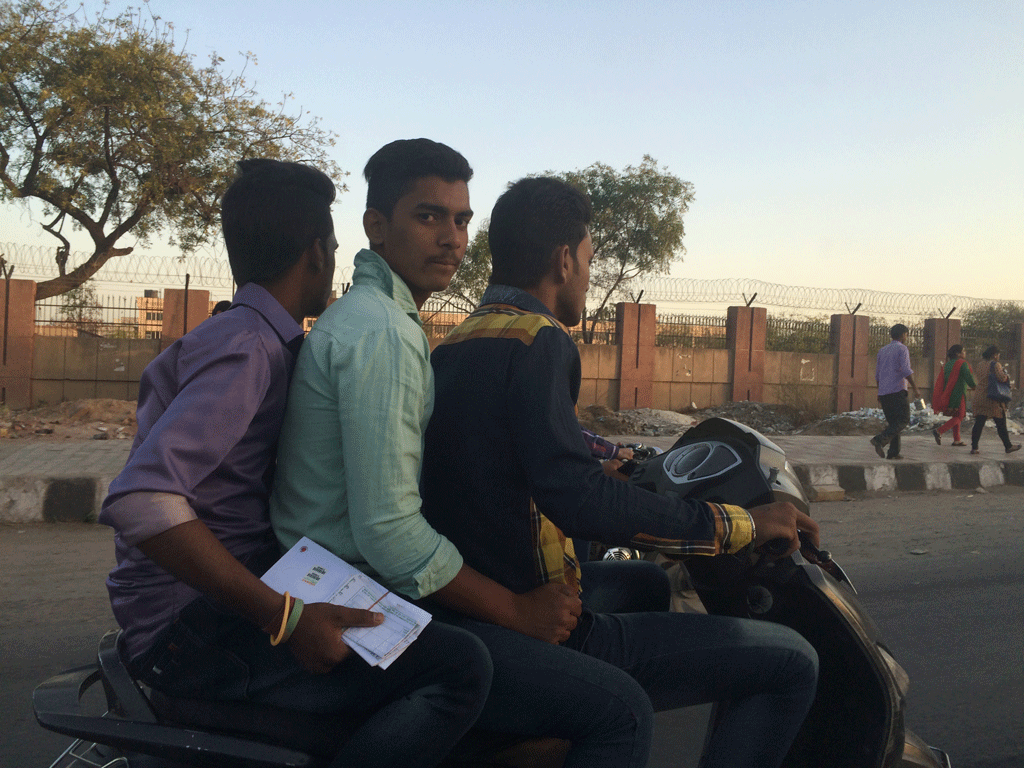
We reach New Delhi late afternoon and are soon amid the usual boisterous traffic with people obviously on their way home from work.
When we reach the Greater Kalesh hotel, we are greeted like old friends! After all, it’s the third time we’ve been here in six weeks. We have been upgraded to a suite, which is appreciated even though some of the furnishings are a little worse for wear. We’re also on the other side of the hotel, away from the traffic, so it’s very quiet. We appreciate the complimentary bowl of fruit which means we don’t have to go outside our room for dinner.
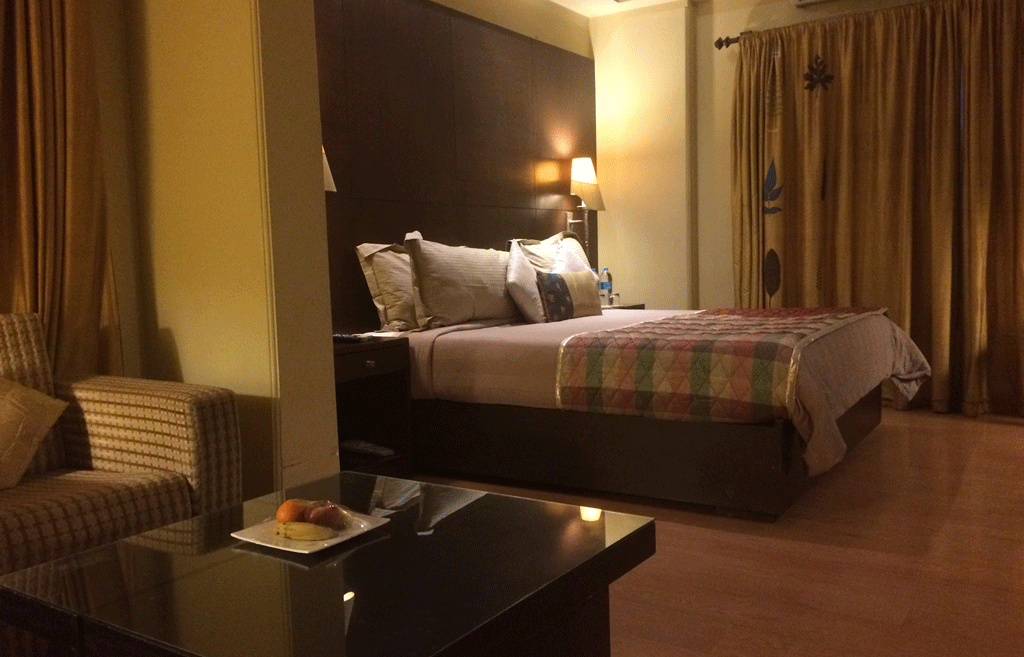
Next morning, we have a leisurely breakfast and Rajendar takes us to the airport. Our flight home to Charles de Gaulle airport in Paris is uneventful. We make our way to the hotel pick-up point to take the coach to the Meridien where our car is waiting for us in the underground car park. Two and a half hours later, we are back in Blois. It’s 11 pm and 7°C, but the house is well heated. We are glad to be home but very, very satisfied with our visit of the Golden Triangle in India which went very smoothly thanks to our tour organisation Trinetra Tours and, in particular, our driver Rajendar. And our marble inlay table will serve as a permanent reminder.
We arrive in Delhi at 7 pm, one and a half hours late due to an electrical problem on our plane which kept us sitting on the tarmac in Melbourne but I sent a quick email to Trinetra Tours to let them know and our coordinator is waiting for us. When we arrive at the hotel – Justa Residence – we have a shower and go straight to bed so we can be ready for an 8 am start next morning. The irksome things I complained about a month ago at the same hotel have been fixed up. We have been given a different room which has two tea cups (and not one), complimentary biscuits and fruit, a bathmat and correct drainage in the shower.
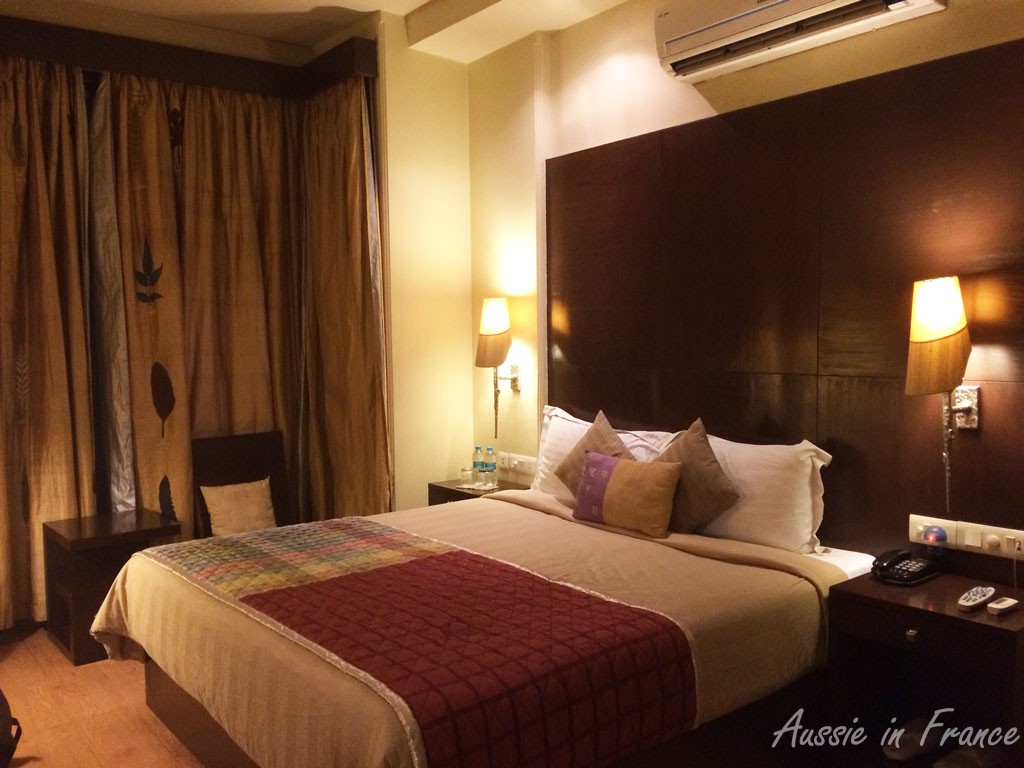
Our chauffeur for the next four days, Rajender Negi, arrives a half an hour late at 8.30 am, along with our French guide, Singh. They were held up by a road accident in which a truck was lying across the road. Considering the traffic here I’m surprised there are not more accidents! However, they had phoned the hotel to tell us they would be late so we weren’t worried.
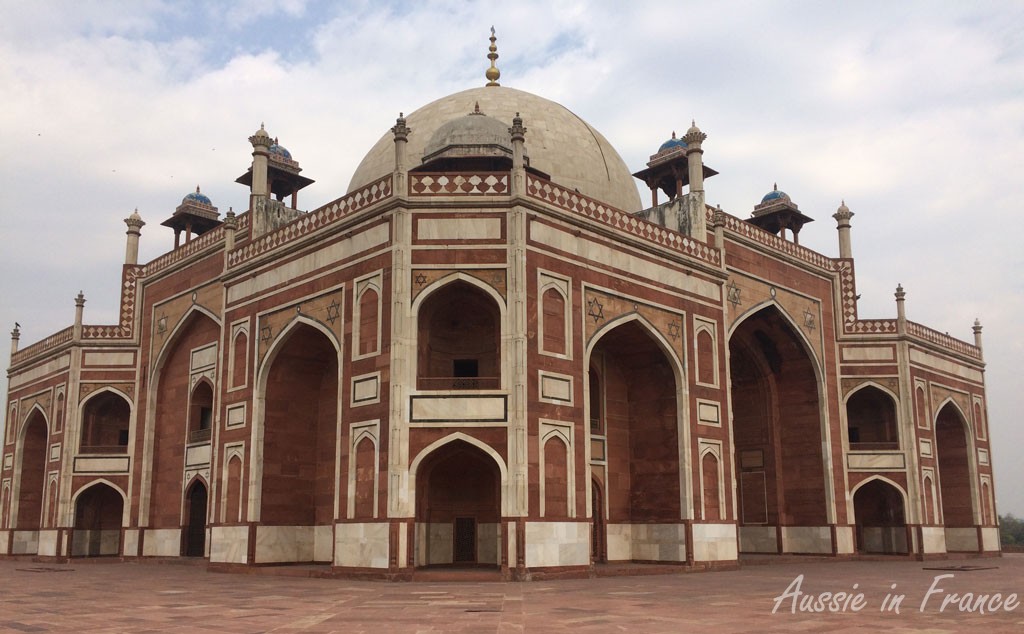
The first stop is the tomb of the Mughal Emperor, Humayun, commissioned by his son Akbar in 1569-70. The site is quite majestic and we practically have it to ourselves. It was the first garden-tomb in India and also the first structure to use red sandstone on such a large scale.
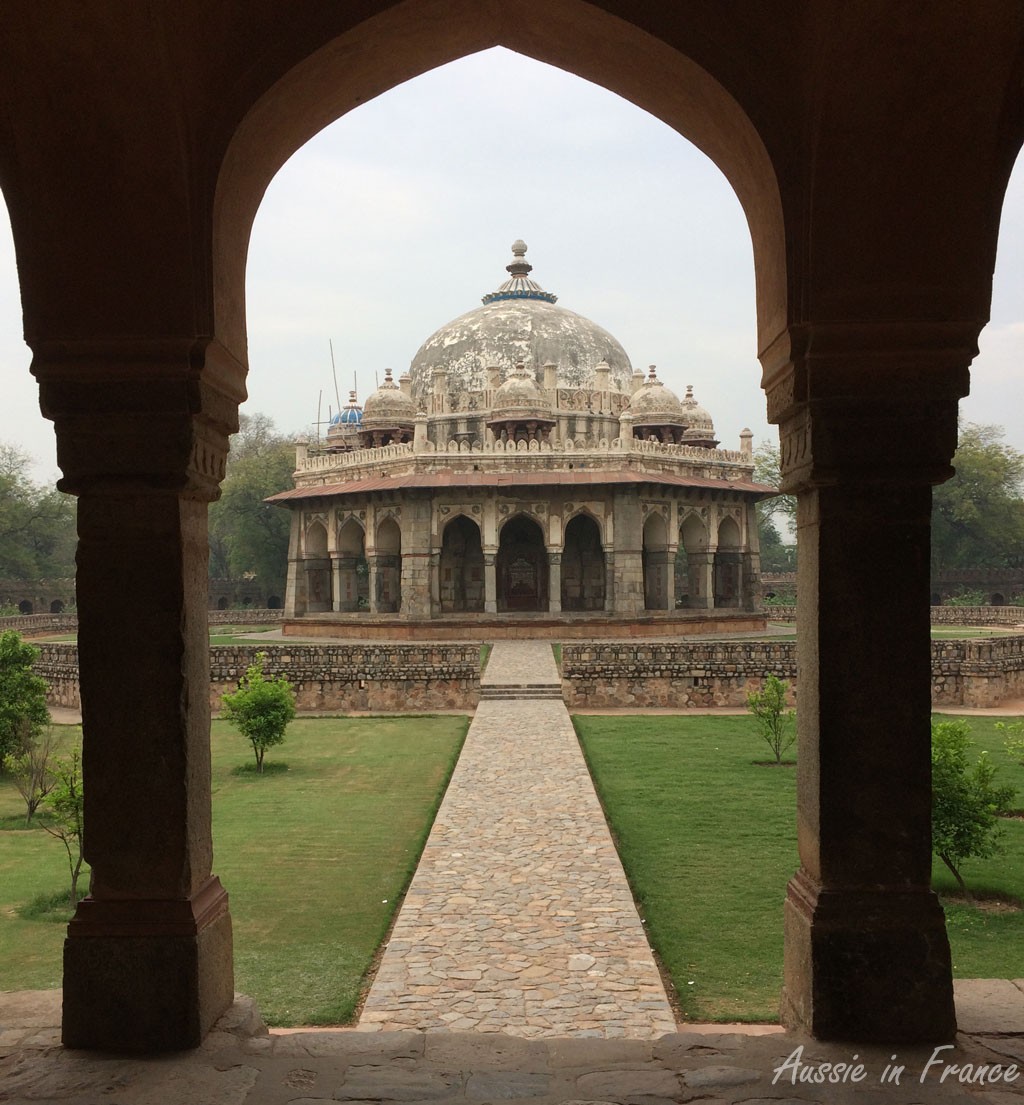
The tomb is a UNESCO World Heritage site and has been extensively restored. In addition to the main tomb, there are several smaller monuments, one of which, the tomb of Isa Khan Niyazi, was built twenty years earlier. It is wonderful to think that such a large garden exists right in the middle of Delhi.
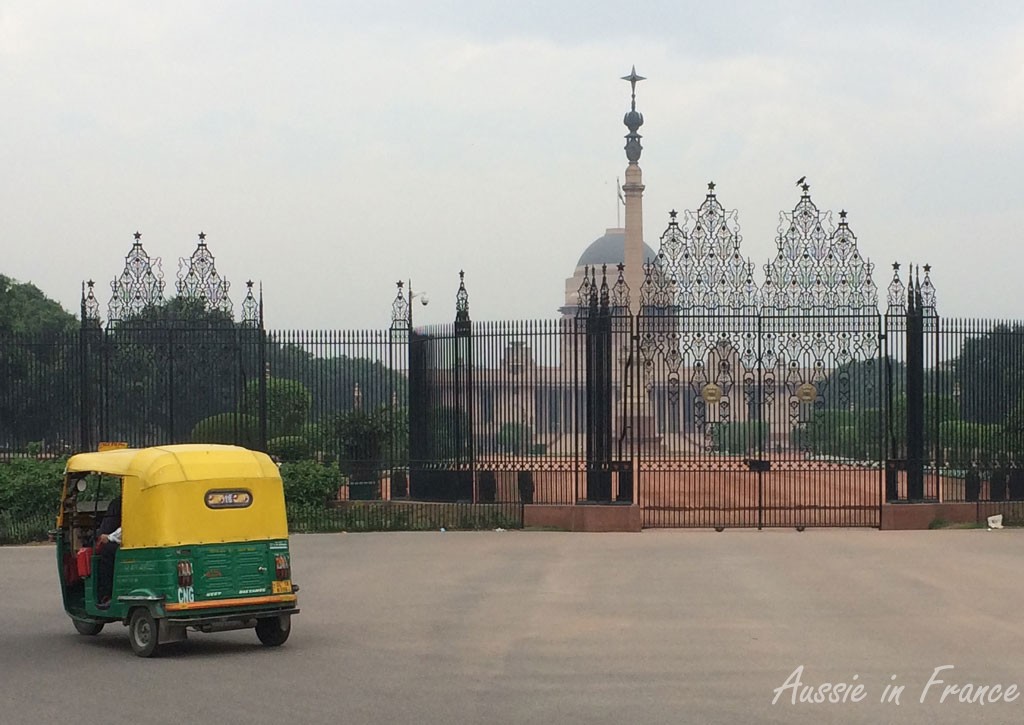
Our next stop is the presidential palace built in 1929 and other government buildings. Yet another side to Delhi that we didn’t see the first time. It also provides the occasion for Singh to explain more about the country’s government bodies. Although I have a little trouble understanding him initially, his French is quite good and he is a willing and knowledgeable communicator, unlike our French guide the first time round.
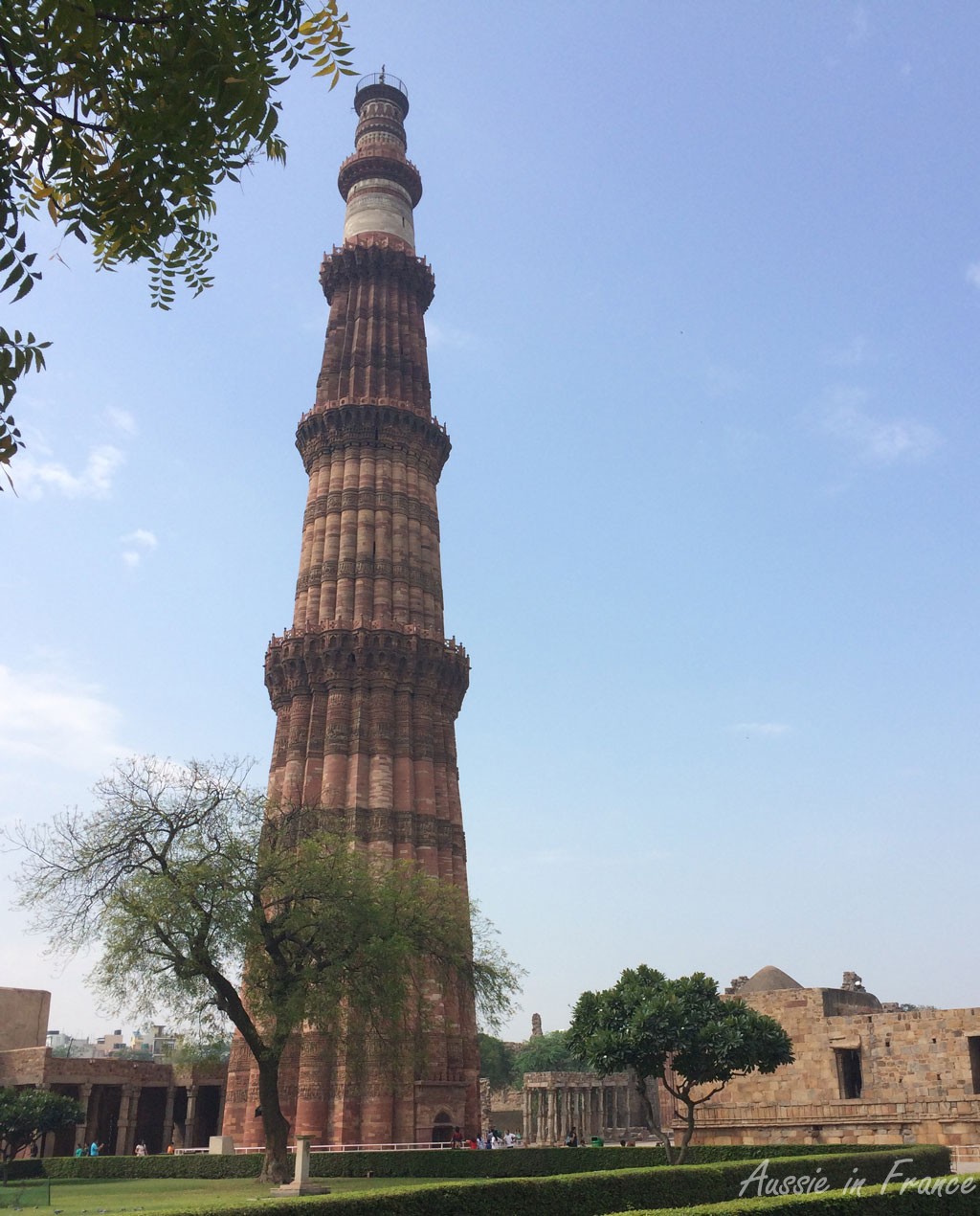
The 72-metre Qtub Minar is next on the list and surprises us by both its size and beauty. Like Humayon’s tomb, there are also several other monuments. Our guide points out the original pillars from the Hindu temple which was partly destroyed to turn it into a Muslim site.
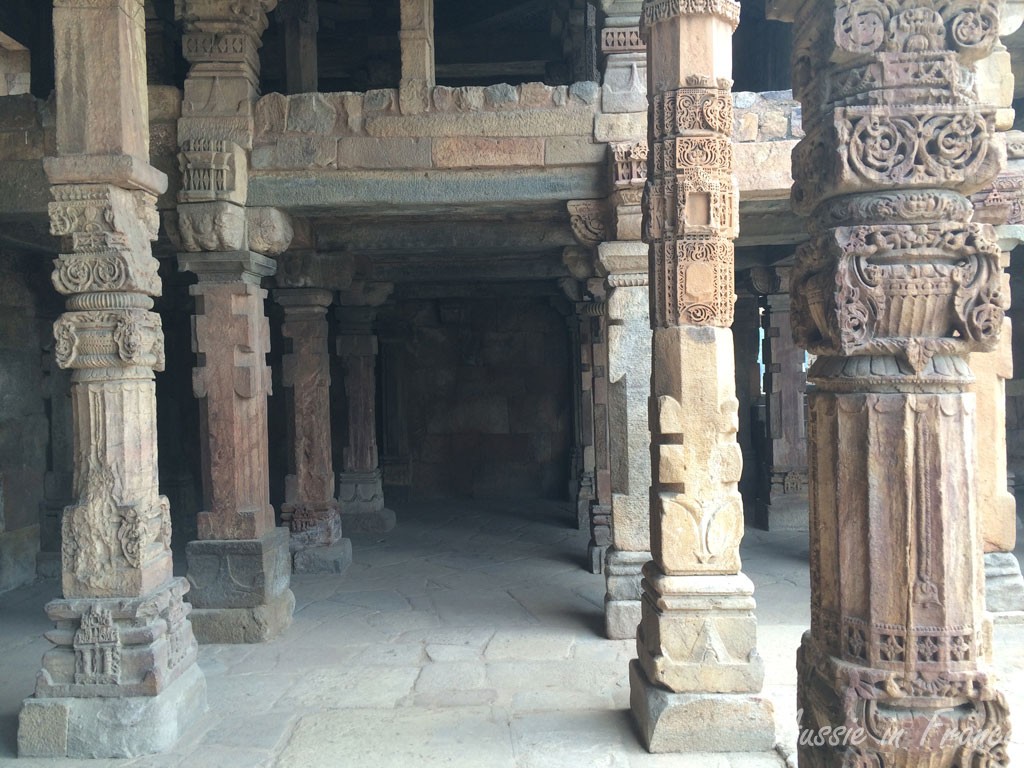
More tourists have arrived and everyone is taking photos of themselves, family and friends. I move out of the way for an Indian man to snap his wife and Singh tells me that they want me in the photo. I am surprised. We then have a group photo and they are delighted.
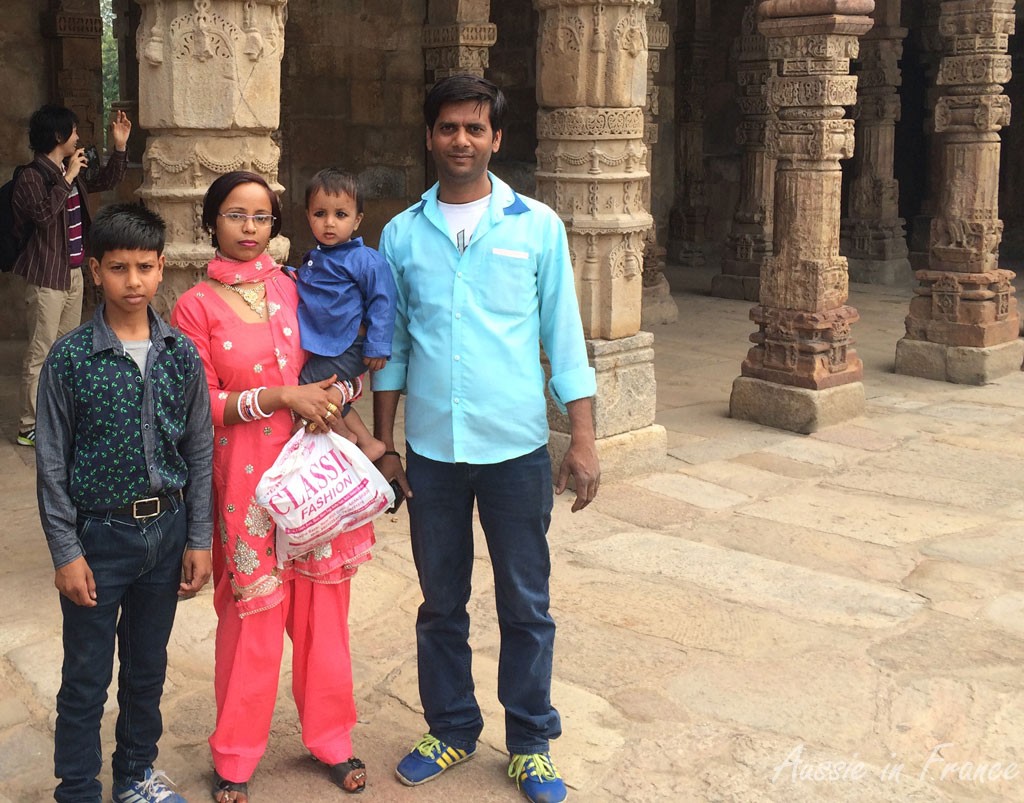
In the middle of the complex is a 7 metre high column called the Iron Pillar weighing 6,000 kg and thought to have been originally erected in Udayagiri by one of the Gupta monarchs in about 400 CE and transported to its current location in 1233 CE. Its surprising corrosion resistance is due to an even layer of crystalline iron hydrogen phosphate forming on the high phosphorus content iron, which serves to protect it from the effects of the local Delhi climate.
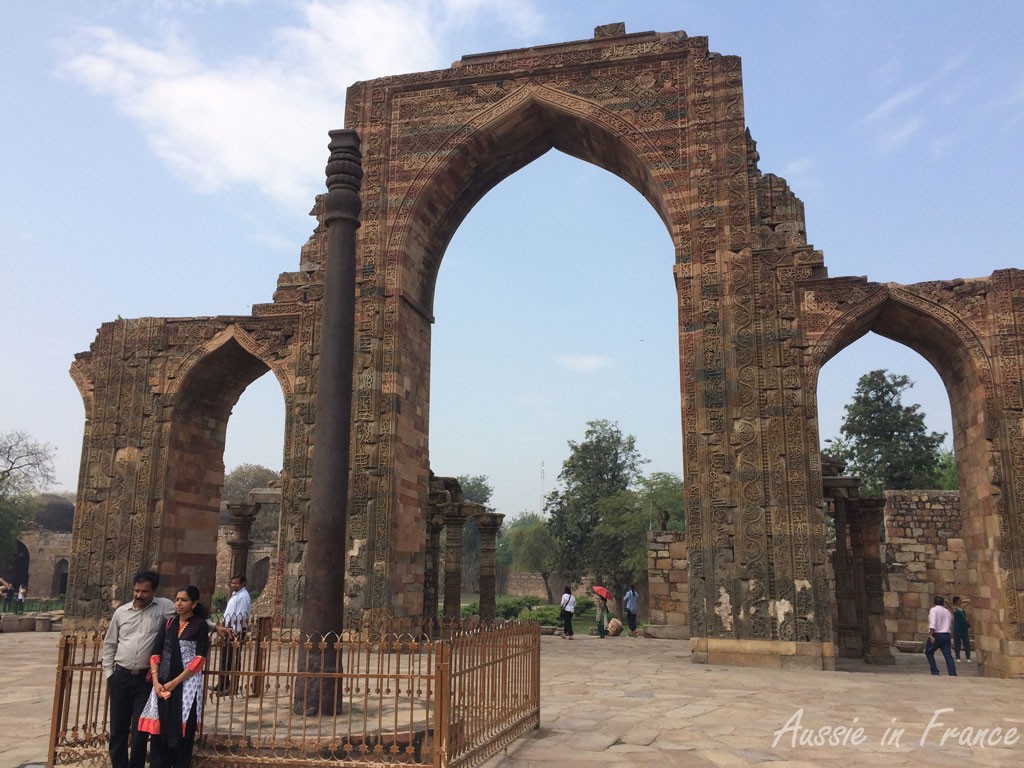
It is now nearly 11 am and Singh takes his leave as we are close to a metro stop and he lives quite a long way away. He has asked us the usual questions about our family situation, children, where we live, etc. and told us about himself. He lives in a village near Jaipur with his wife, two small children (2 and 4) and his mother. As a tourist guide, he only works for 6 months a year, mainly in Delhi, where he shares a flat with other male friends during the season. The rest of the time, he lives in the village and doesn’t work. He is the only breadwinner.
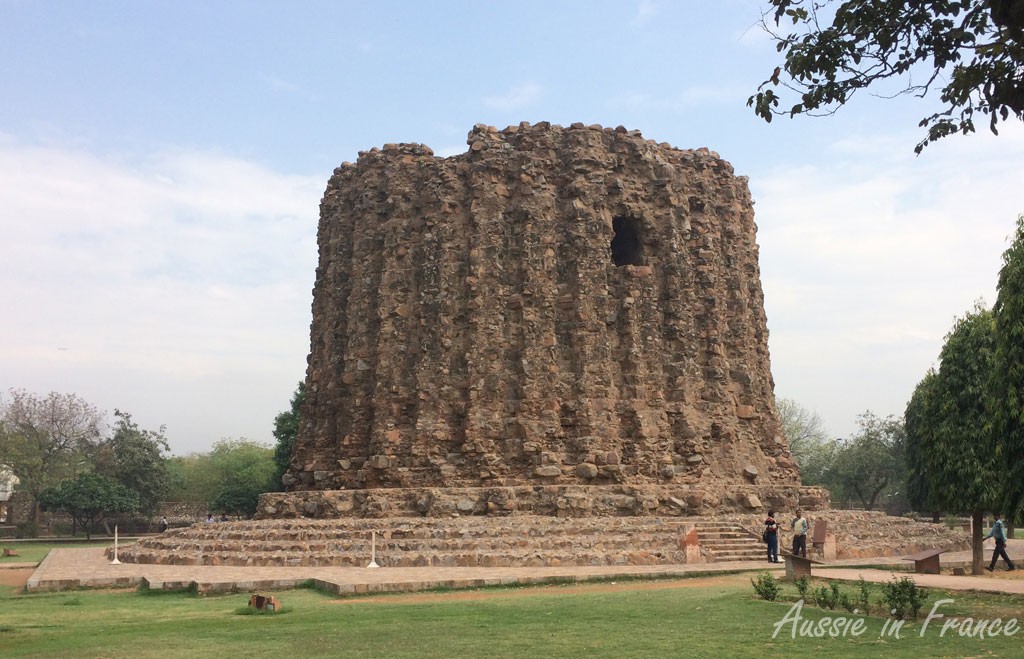
We give him the prescribed tip and off he goes. Now, our driver, Rajender, takes over and asks all the same questions again in English. He comes from Himalaya, as most drivers do, he explains. Because they have a hard life as children, walking 10 km to and from school and carrying heavy loads, they have strong heads and are able to deal with the horrendous traffic. I didn’t think Delhi was very busy the first time but it seems as though the traffic has increased tenfold! Fortunately, Rajender is a good driver.
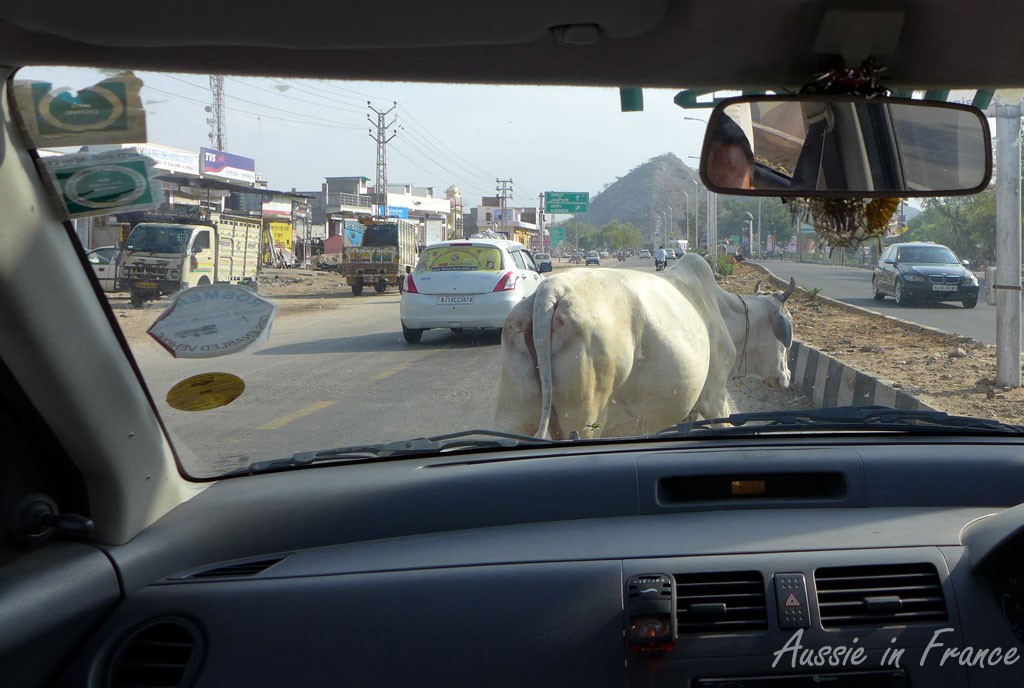
We set off for Jaipur, which is 5 ½ hours away, which seems very strange as there is a new 2 x 3 lane toll road and the distance is only 270 km. We soon discover why. Although trucks are not theoretically supposed to be in the fast lane, they invariably hug the middle of the road, moving into the middle lane if they are forced to do so. They often have a sign saying Blow Horn written on them, sometimes Please blow horn and even No horn. Rajinder says it’s because they listen to loud music so will only move over if you blow the horn.
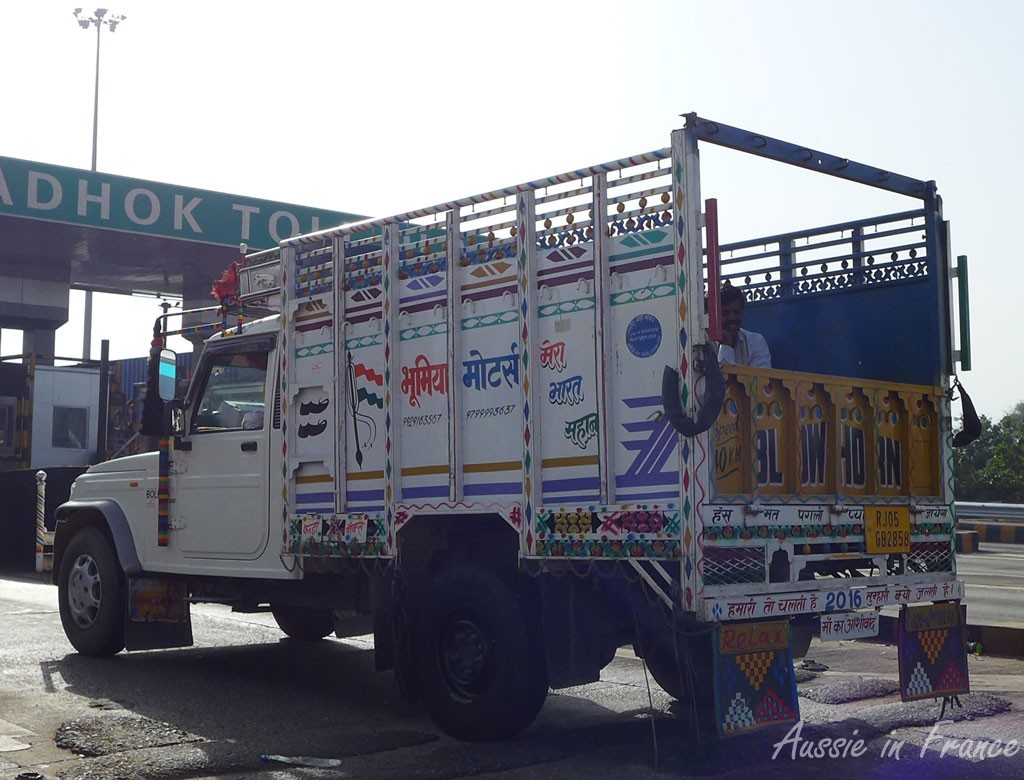
He weaves his way in and out the traffic, which includes every imaginable vehicle, both large and small – cars, buses, tractors, bicycles, tricycles, rickshaws, tuk-tuks, family scooters (older child in front, father, younger child, mother sitting side-saddle), camel and horse-drawn carts and sacred cows which have a special affinity with the middle of the road. We don’t see a single accident, which is really quite extraordinary. We don’t see any women drivers either. If I don’t watch the traffic, I’m not afraid, which is also amazing especially as we often see traffic coming in the wrong direction, but since no one can go very fast, I feel quite safe! I should mention that we have seen a number trucks nose-down in the gutter.
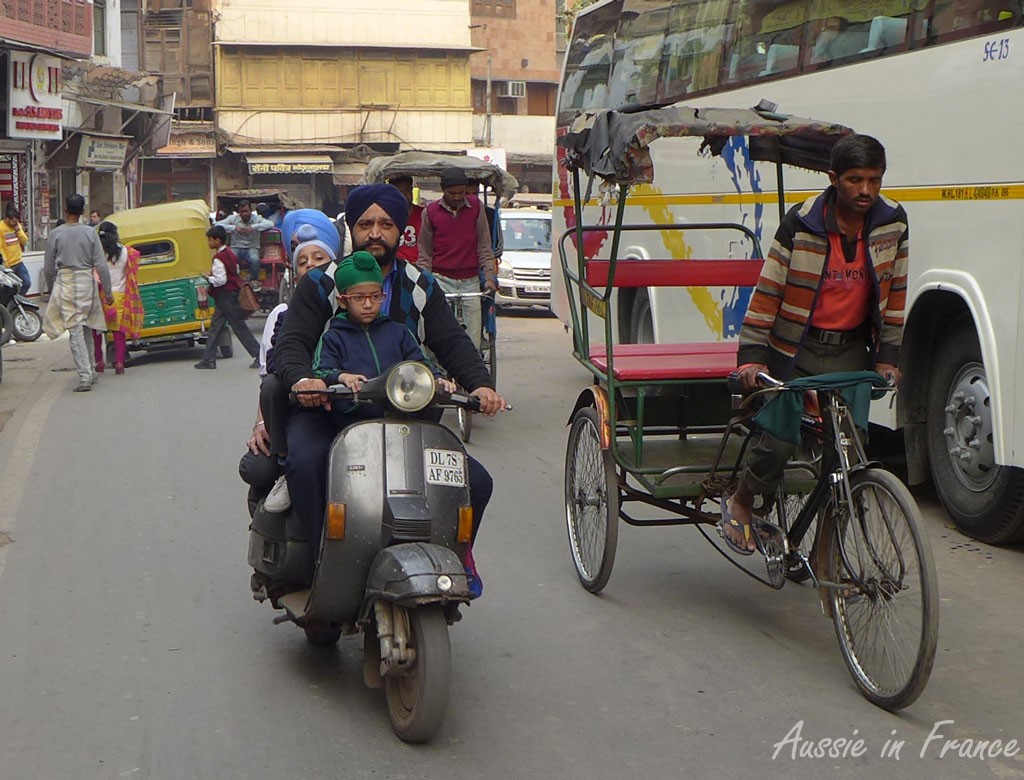
On the way to Jaipur, we go past Cyber City, an enormous complex in Gurgaon, linked to the Delhi metro system. Now we see the skyscrapers we didn’t see in Delhi. They house international companies such as IBM, Samsung, American Express, Deloitte and Google. Residential complexes, often gated, follow one another and we see many advertisements for “green” apartment buildings and public schools which are actually private, saying things such as “if you love your child, send them to our school”.
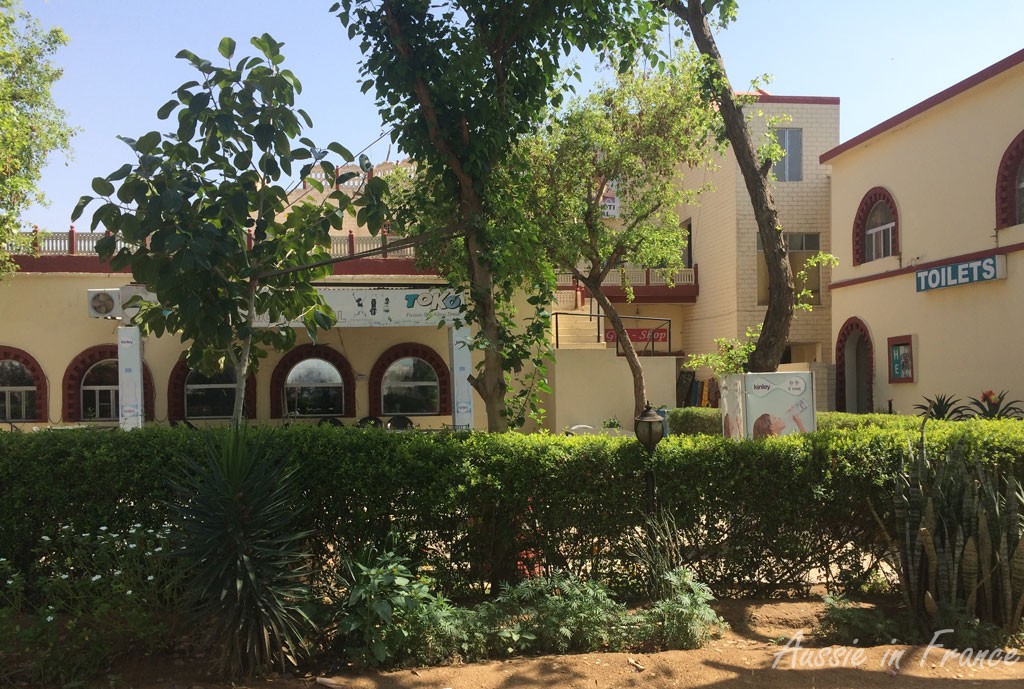
At 1.30 pm, we have covered half the distance to Jaipur, so Rajender suggests we stop for lunch at the Moti Mahal Restaurant in Behror. When we get inside we see it’s a tourist restaurant but at least it’s not a cocktail bar. We choose dal (lentils), a mixed vegetable dish, naan (that delicious oven-baked leavened flat bread), rice and curds. The meal is tasty and not too spicy and only costs 1200 rupees (16 euro) including a bottle of water. We realise that we won’t be having any local experience restaurants but decide it’s just as well – less hassle and no gut problems!
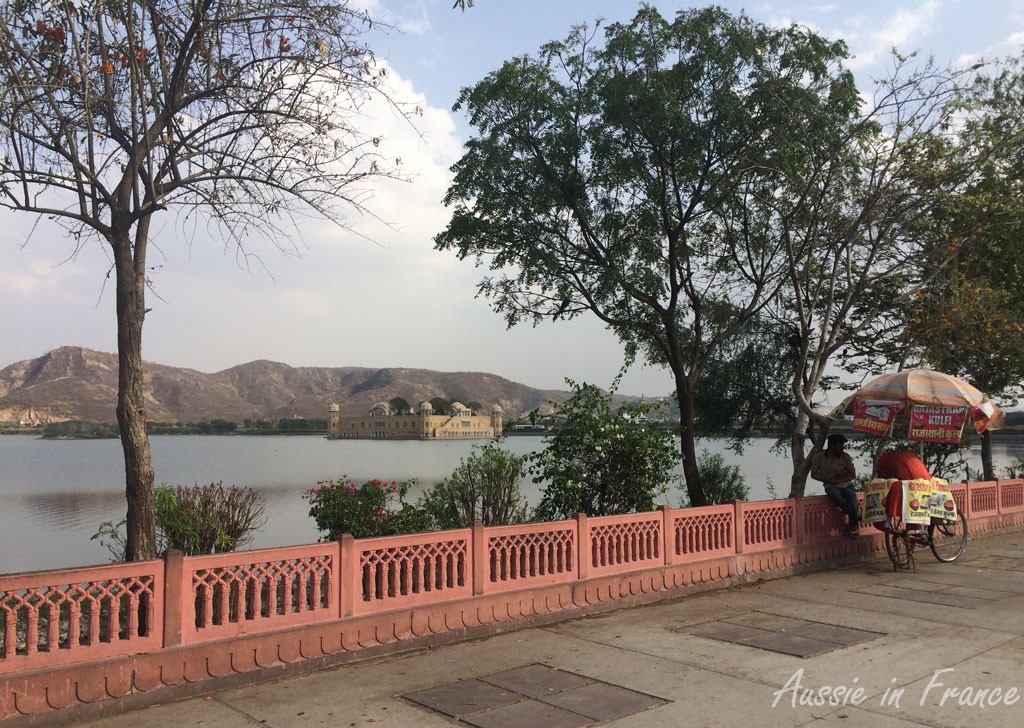
As we approach Jaipur two hours later, we see Amber Fort with its 9 kilometers of ramparts. Rajender then points out the Jal Mahal (meaning “Water Palace”) in the middle of the Man Sagar Lake. It is in total contrast with anything we have seen up until now. I ask to stop for a photo but Rajender tells me it’s scheduled for the next day. I insist, explaining that the light will be no good in the morning. He pulls over with good grace and we clamber over the low stone wall. He gets a nearby vendor to take a photo of the three of us together to put on Facebook!
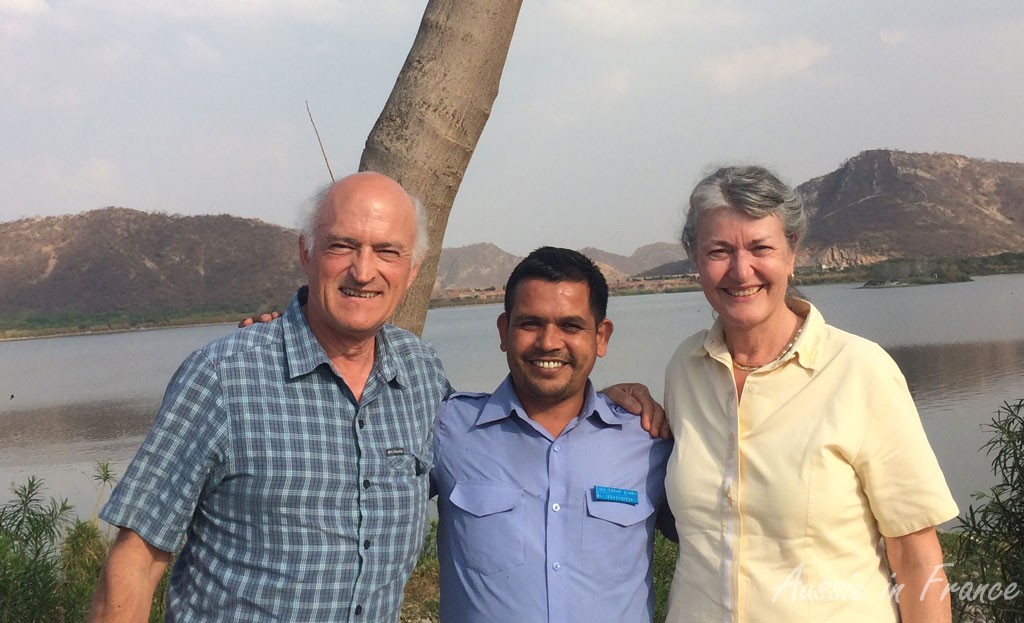
We continue on to our hotel and are delighted with our first glimpse of Jaipur despite the incredibly dense traffic. The capital of Rajasthan, which currently has a population of over 6 million people, was founded on 18th November 1727 by Maharaja Jai Singh II, the ruler of Amer (Amber) after whom the city is named. He was something of a town planner and consulted several books on architecture and architects while planning the city’s layout. It took four years to complete the major roads, offices and palaces. The city was divided into nine blocks, two of which contained the state buildings and palaces, with the remaining seven allotted to the public. Huge ramparts were built, with access provided by seven fortified gates.
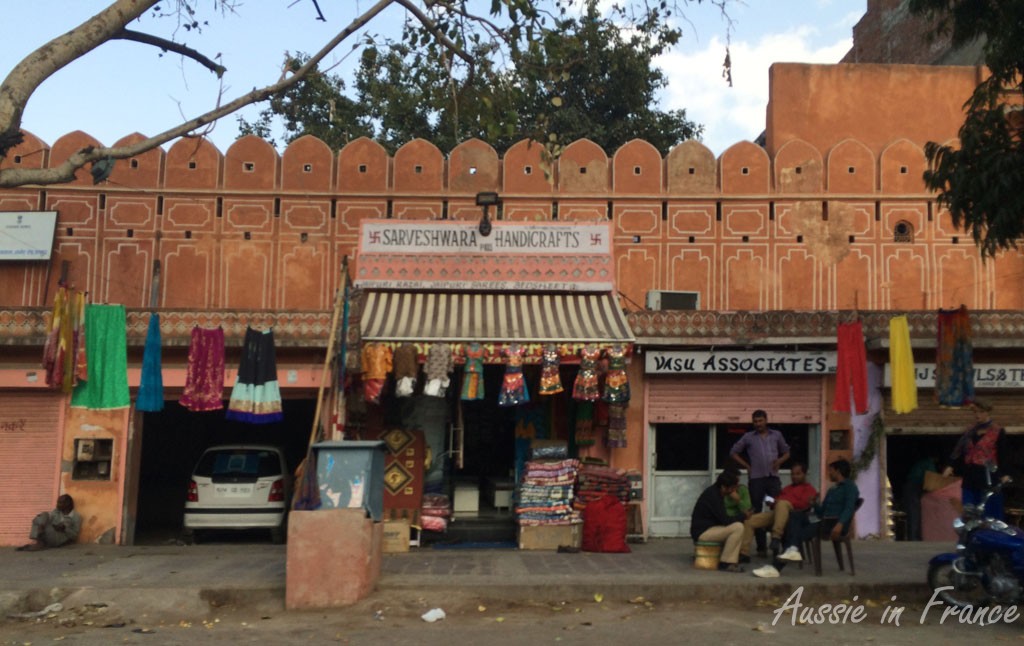
During the rule of Sawai Ram Singh, Jaipur was painted pink to welcome Prince Edward VII and Queen Victoria and it became known as the Pink City of India. We love the result but the traffic is so chaotic that it’s difficult to take any decent photos. A video proves to be the answer.
We arrive at Shahpura House Hotel at 5.30 and it is every bit as lovely as the photos on its website. I later try to understand its history, but to no avail. All I can tell you is that the current owner is Maharaj Surendra Singh, a descendant of the royal family of Shahpura, and that the fusion of historical influences has been preserved in the décor and design: Indo-Saracenic architecture, opulent Mughal interiors, European furniture, and Rajasthani fabrics and design.
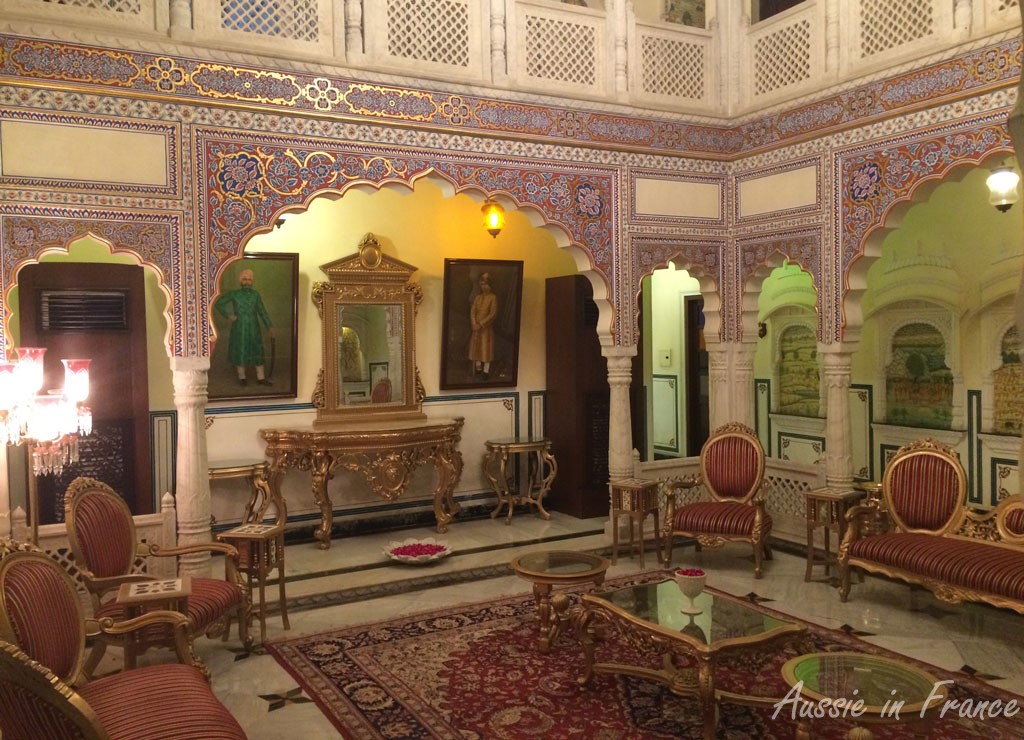
After a refreshing shower, we have a tonic water and crisps on the terrace in front of our bedroom then escape from the mosquitos into our beautifully furnished air-conditioned room. Even the live Indian music in the outdoor restaurant on the terrace below cannot kept us awake once we go to bed.
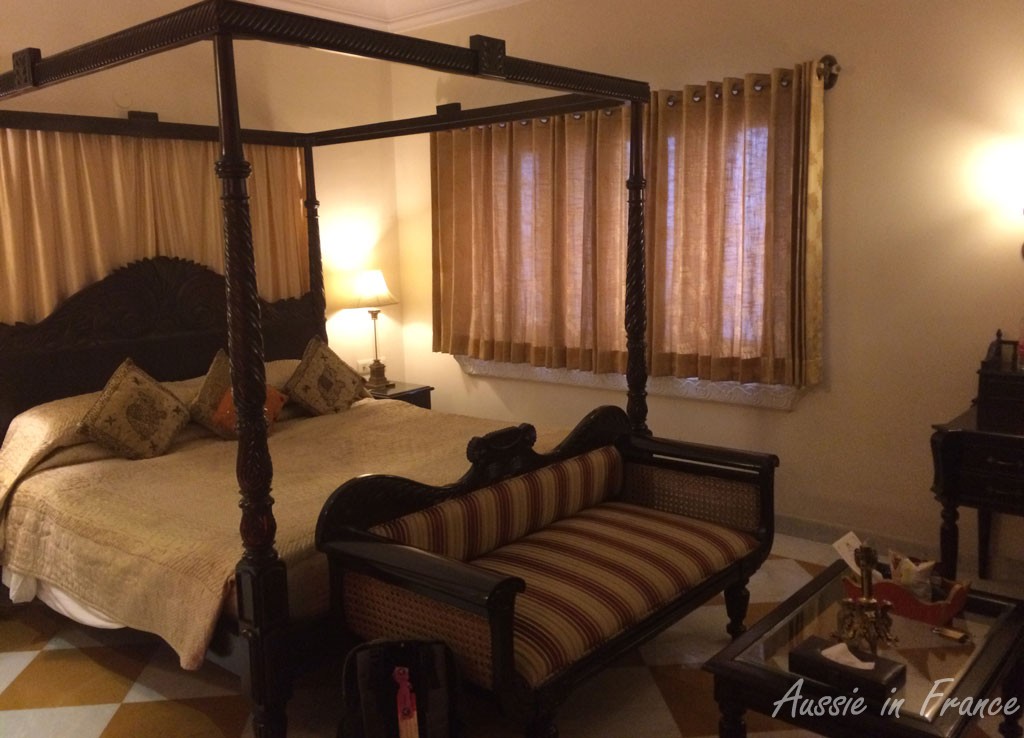
It’s nearly 9 am and we’re about to go to Paris for the day which we don’t do very often. To our immense surprise, the ground is covered in snow! I run around taking photos and videos while Jean Michel makes sure all the bird feeders are well stocked. This is our first snowfall for the season and totally unexpected.
The roads aren’t too bad although they haven’t yet been sanded and we have to keep in the middle lane until Orléans. As we approach Paris, the sky is a brilliant blue but it’s only a few degrees so quite cold.
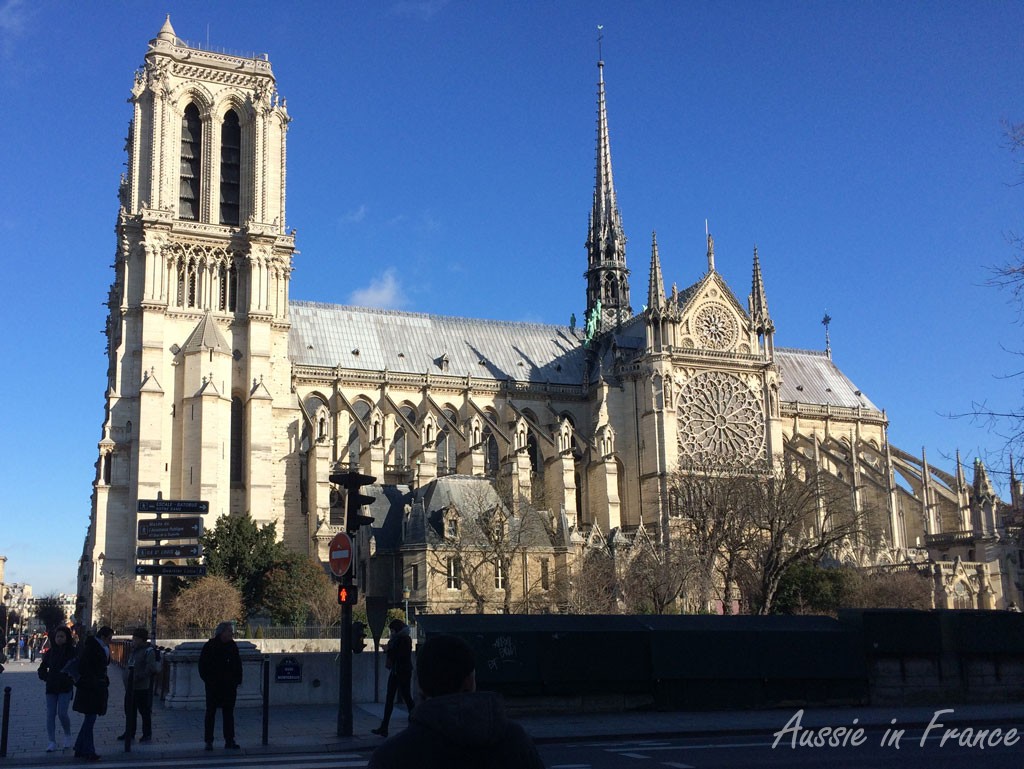
Our first stop is Paris’ best-known sports store – Au Vieux Campeur near Saint Germain des Prés – because we need to replace our falling apart Meindl Capri walking sandals to go to Australia next month. We tried to buy the same ones on the Internet, to no avail. Buying sandals in winter is not a great idea.
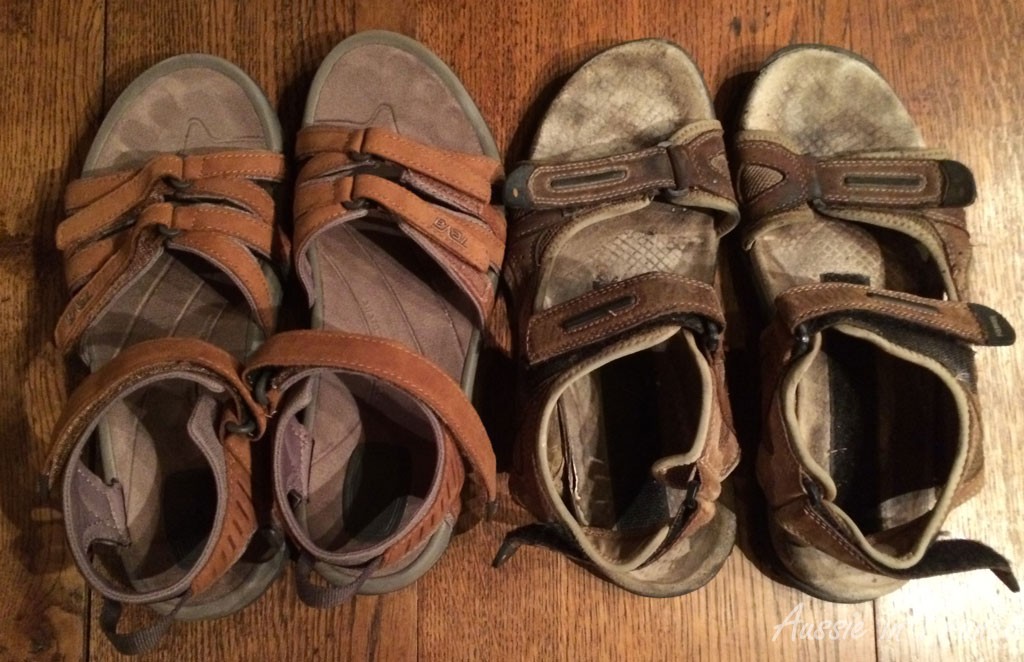
Despite the churlish, know-it-all salesman – even Jean Michel thinks he is terrible – we manage to find a suitable pair of sandals before we each go our separate ways. I have to admit the new Teva ones are much more stylish. Jean Michel is having lunch with a former colleague and I am meeting up with my lovely friend Mary Kay from Out and About in Paris who is soon to go and live in Prague. I am not the only person who will miss her.
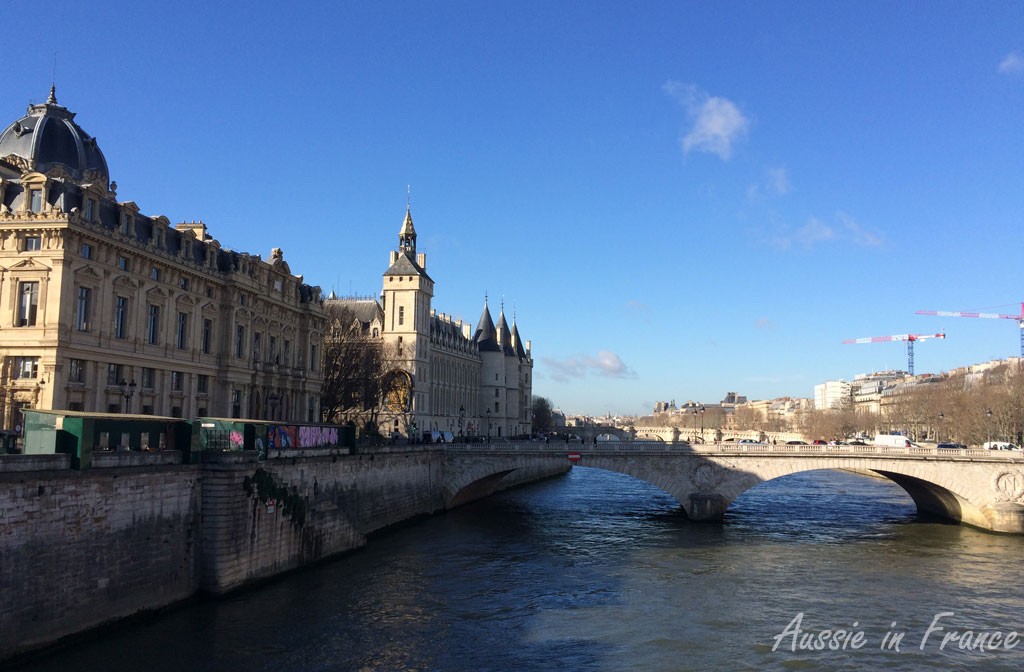
As I walk across the Seine to Notre Dame then past the Conciergerie and over the river again to the right bank and my metro at Hôtel de Ville, I can’t stop taking photos, the sky is so clear and sharp.
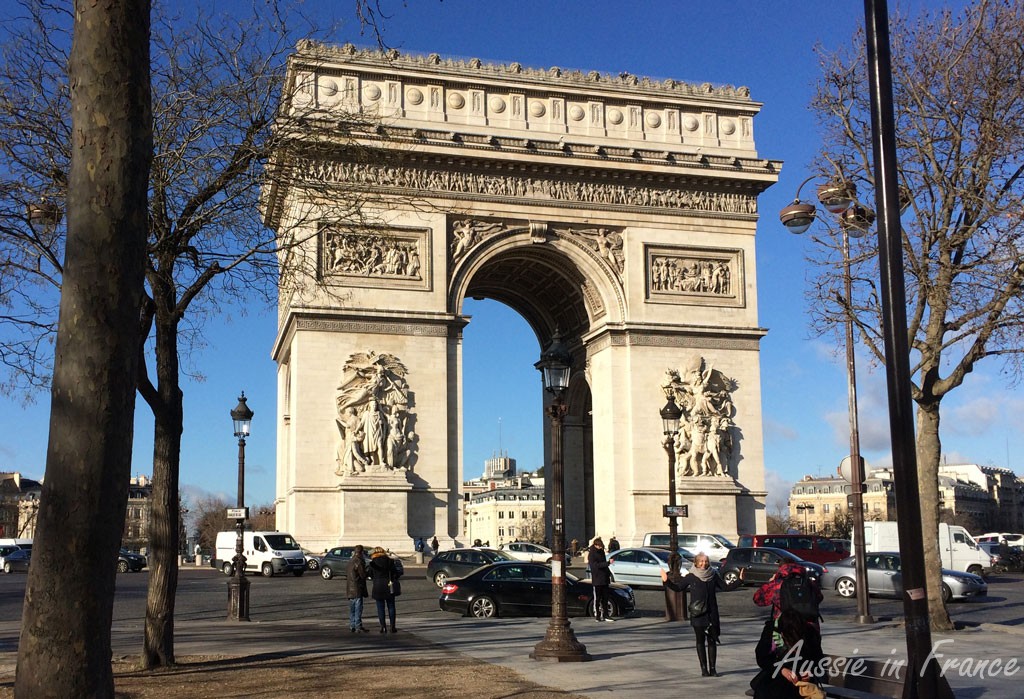
I emerge at the Arc of Triumph which is also looking good with so much blue sky around it and head for the 5-star Peninsula Hotel on Avenue Kléber where Mary Kay and I are having lunch in Le Lobby recommended by Janine Marsh in a recent post in her blog, The Good Life magazine, relayed by Susie Kelly on No Damn Blog.
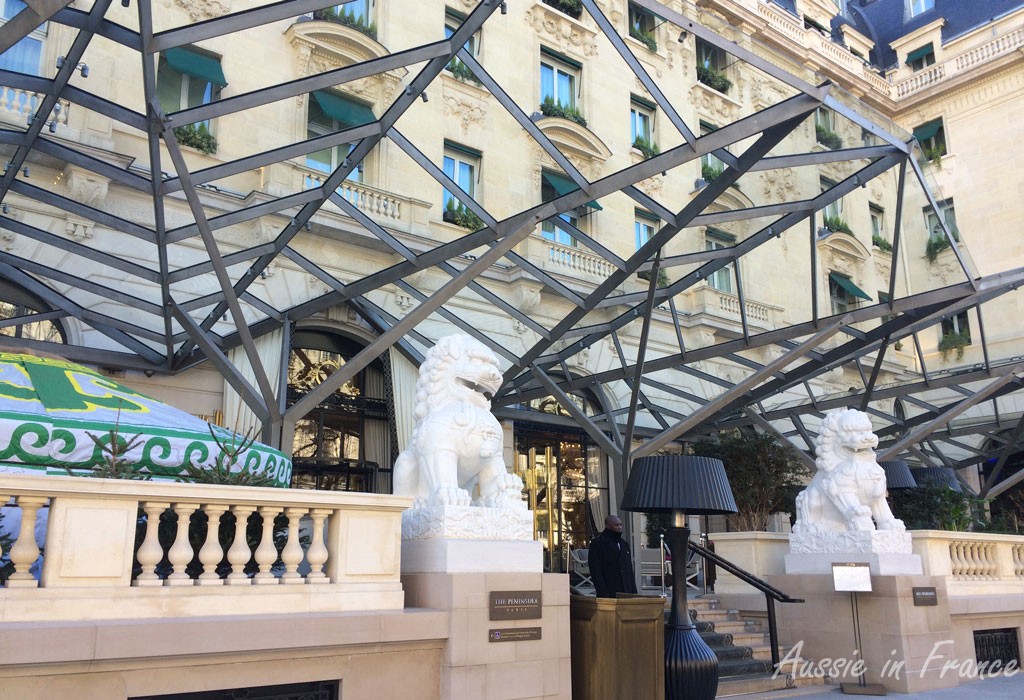
After 5 years of renovation, the lobby of the Peninsula is, indeed, a splendiferous setting. The welcome and service, of course, are impeccable. I can even forget my iPhone on the table while I wash my hands and find it still waiting for me.
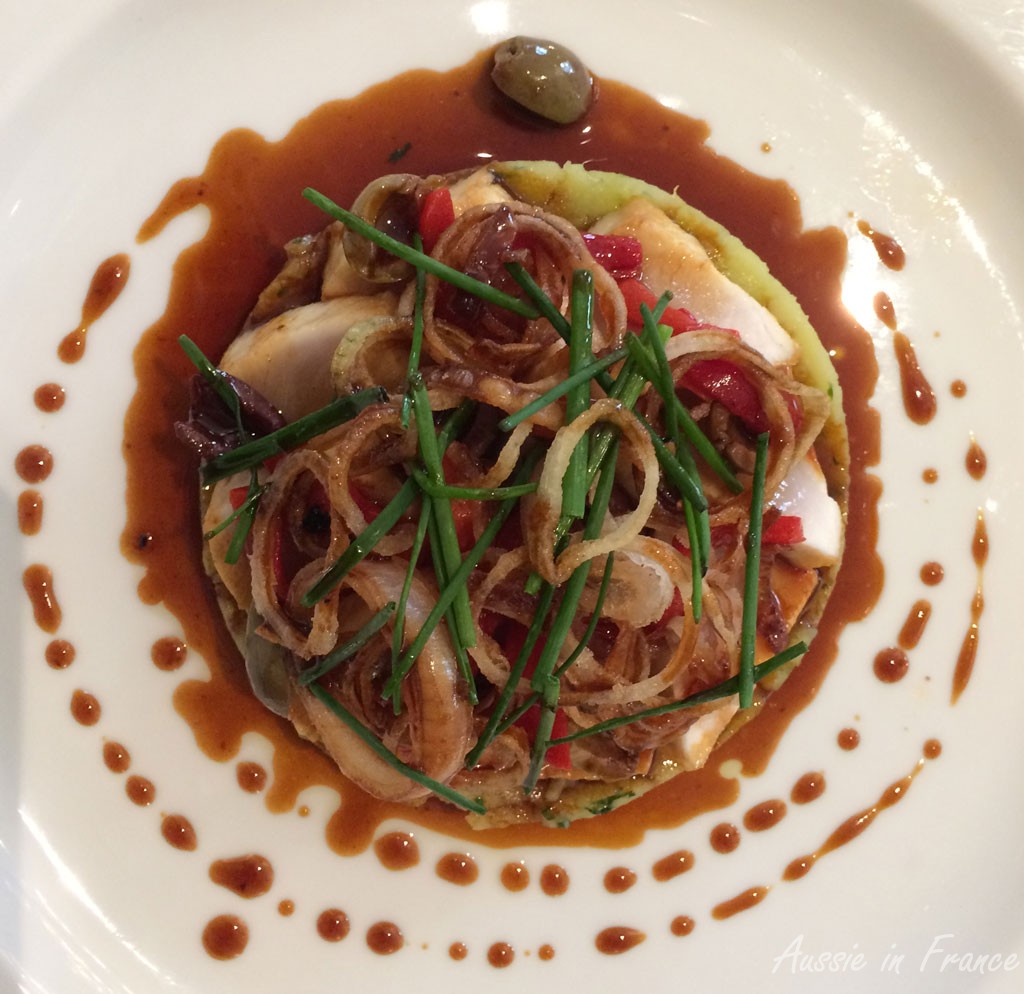
We choose the 60 euro set meal that includes a glass of wine and bottled water. A very tasty Jerusalem artichoke and foie gras soup is followed by beautifully cooked sword fish (which the waiter pronounces to rhyme with sworn) on a bed of vegetables. We finish with cheesecake on a strawberry crust which is somewhat disappointing especially as I’m not a big fan of France’s favourite fruit.
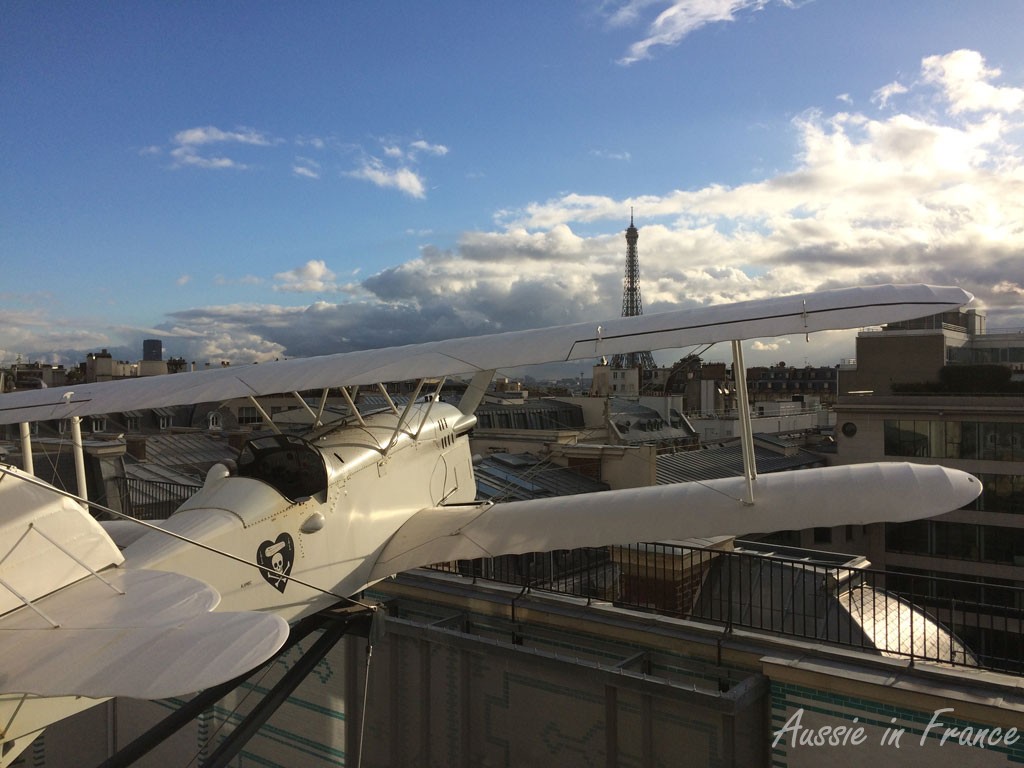
Mary Kay, who has been to the L’Oiseau Bleu restaurant and bar several times then takes me up to the roof of the building. The view of the rooftops of Paris with Sacré Cœur in the distance is stunning. I make a vow to come back here for a drink in the summer.
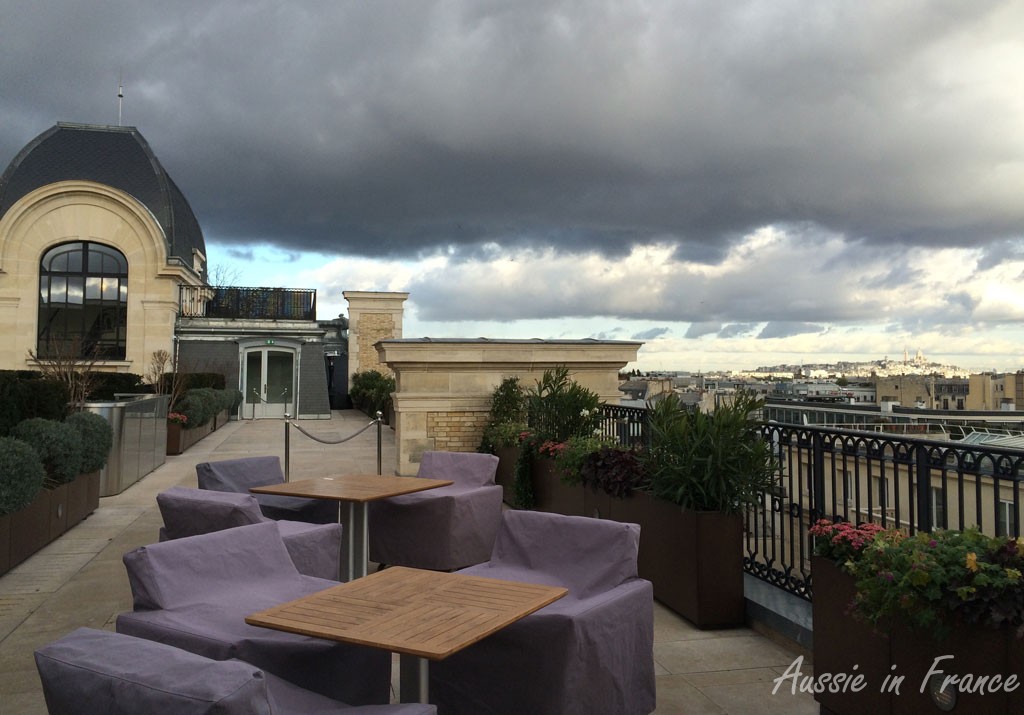
L’Oiseau Bleu is named after the biplane that disappeared on 8th May 1927 with its two French pilots, Charles Nungesser and François Coli, during the first attempt to fly non-stop across the Atlantic from Paris to New York. Less than two weeks after their disappearance, Charles Lindbergh was the first to make the crossing, but in the other direction, on board the Spirit of St Louis. No trace of the Blue Bird has ever been found. There is a replica of the plane on the roof.
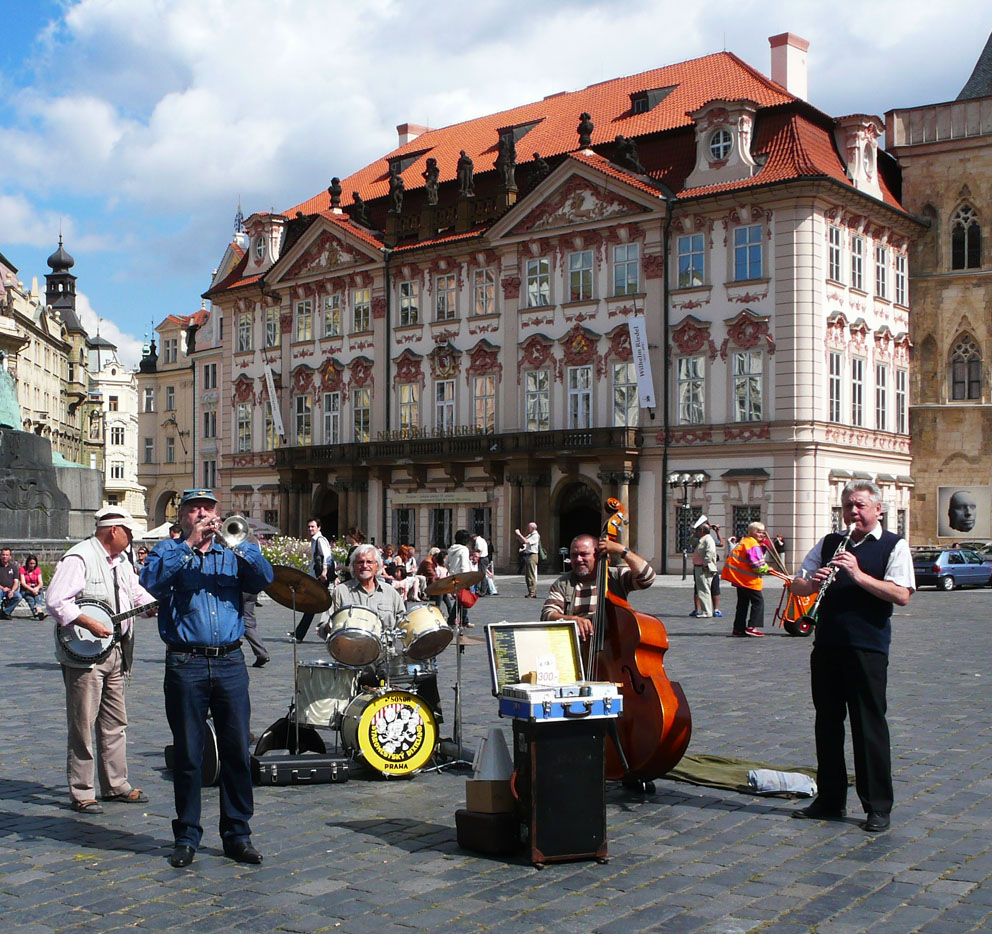
I am sad to leave to leave Mary Kay but hope to see her again before too long, perhaps in Boston or New York now that Leonardo and Black Cat are both living there. Much as I enjoyed the week I spent in Prague several years ago, it isn’t on the agenda again for the moment, but who knows?
It’s that time again – the anniversary of the day Jean Michel and I met. We’re up to nineteen years. I have friends celebrating their 40th wedding anniversaries but not everyone is lucky enough to meet the right person the first time round. Last year, we tried out some new wave cuisine at Pertica in Vendôme but were not impressed although we did like the pâtisseries at Rodolphe’s. We’d also like to have a little village or a château to visit after lunch which restricts the choice somewhat in winter as lots of places close between All Saints (31st October) and Easter (beginning of April), so we’re starting to realise.
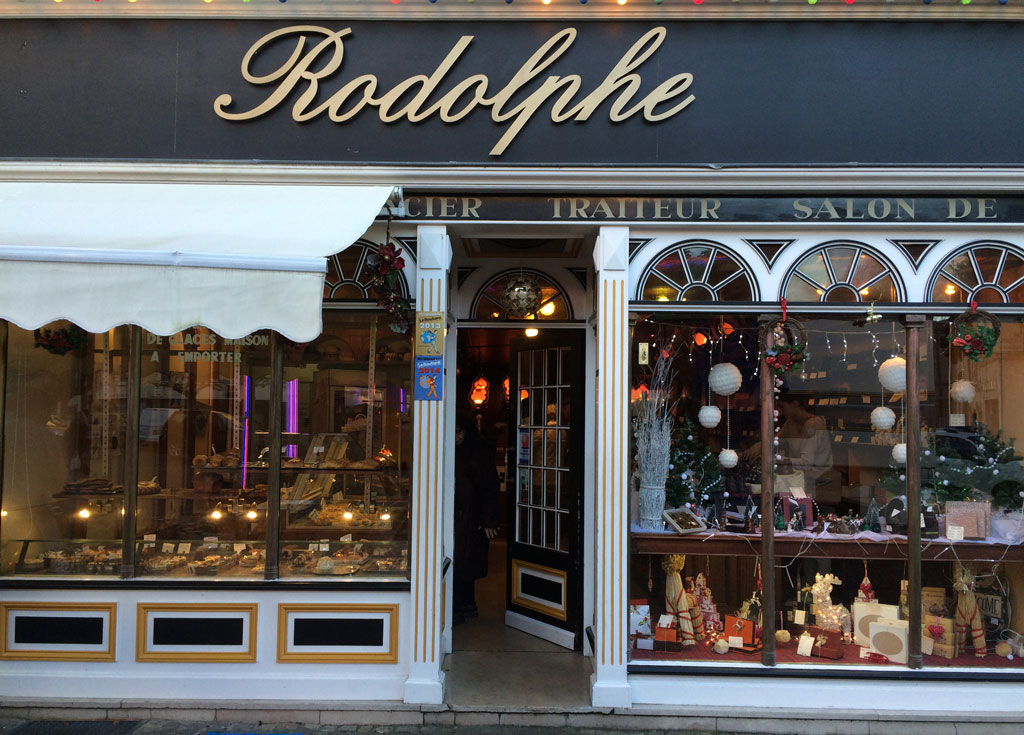
Friends have told us that Lavardin and Chateaudun are worth a visit. The only possible restaurant near Chateaudun (we’re looking for a little gastronomy here, which excludes pizzerias, crêperies and coussousseries) is closed on Sundays and Mondays. Le Manoir de Saint Quentin which isn’t far from Lavardin keeps popping up but the menu on the website doesn’t look very interesting. In the end, all the positive reviews we keep seeing (plus the absence of any other likely restaurant) convince us. We phone and leave a message, backing it up with an email. Next day we receive confirmation.
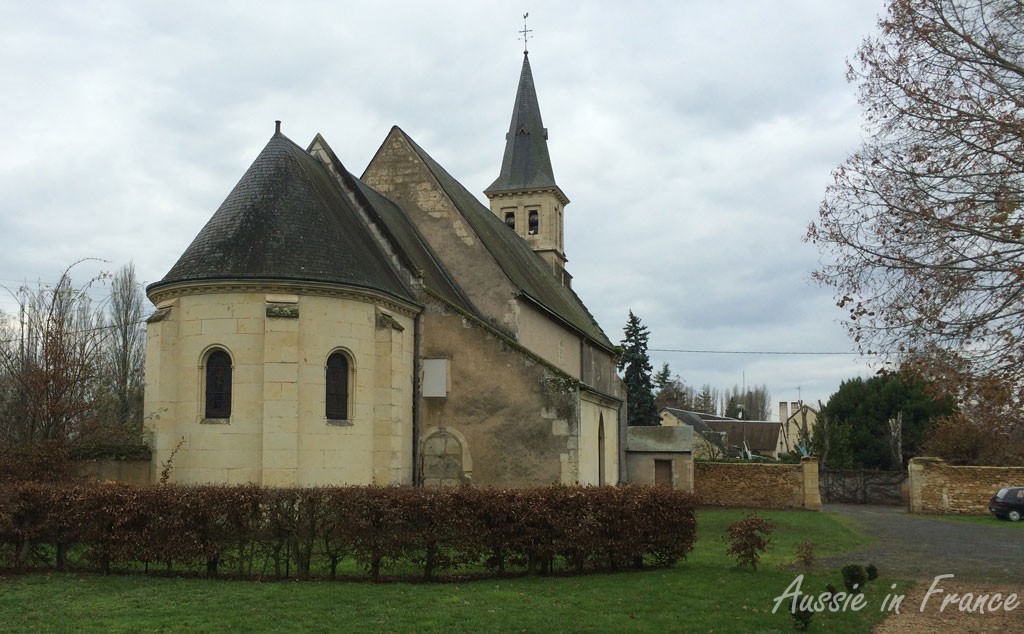
The restaurant is in a town with the impossible name of Saint-Quentin-les-Trôo. We rightly assume that it is connected to the word troglodyte as Trôo is the undisputed troglodyte capital of Loir-et-Cher. It turns out that Trôo is derived from the pronunciation of trou (hole) by English occupants during the reign of the Plantagenets in the 12th century.
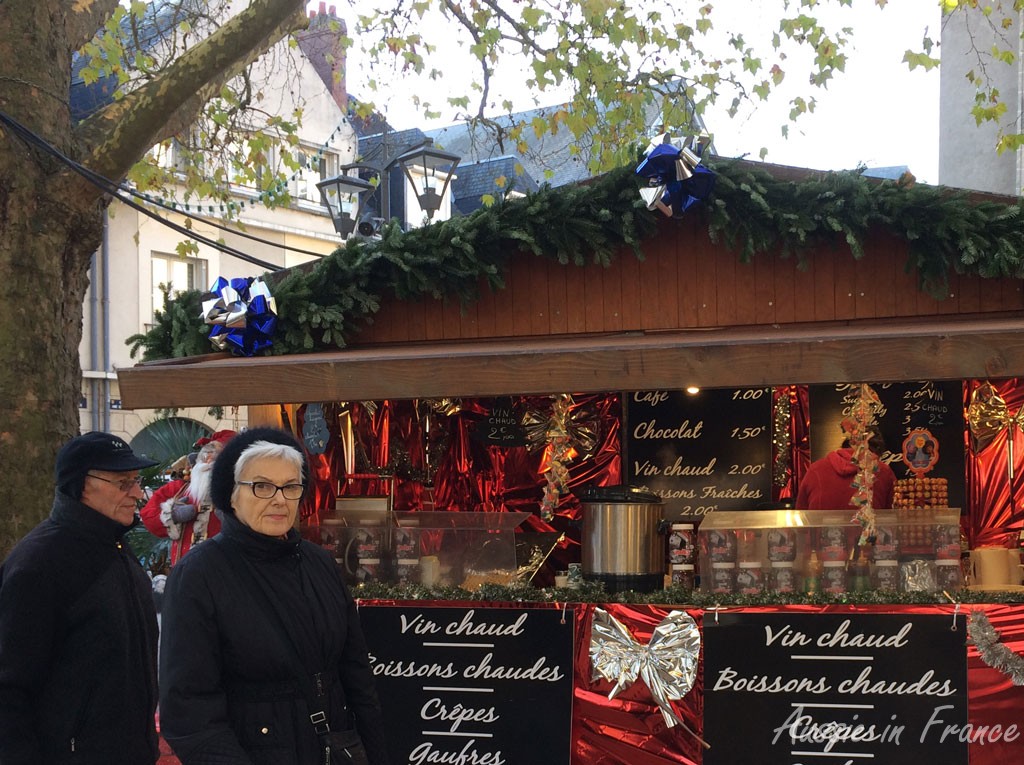
As we drive through Lavardin on the way, we see a very large number of cars parked along the road which can only mean some sort of festivity. The fact that it’s the first round of the regional elections today can’t possibly be an explanation. Sure enough, there is a marché de noël this weekend. We don’t know whether that is good or bad. Most of the Christmas markets we’re seen in recent years in Paris and the Loire have been very dismal.
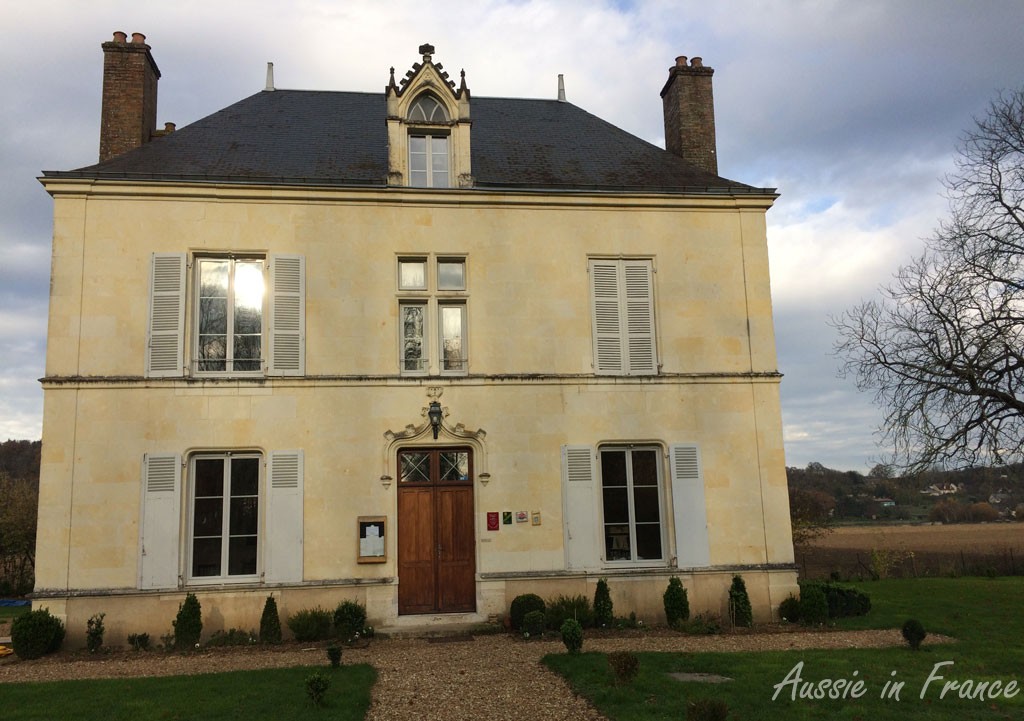
We arrive at the restaurant a bit early – 12.15 (it’s a little less than an hour from Blois) – and there is not a soul in sight. The weather is not conducive to staying outdoors and the door is locked so we ring the bell. A tall, harried looking Asian man answers and we apologise for our early arrival. That’s OK, he says, in heavily accented French, adding apologetically, “we’re not very busy at the moment”.
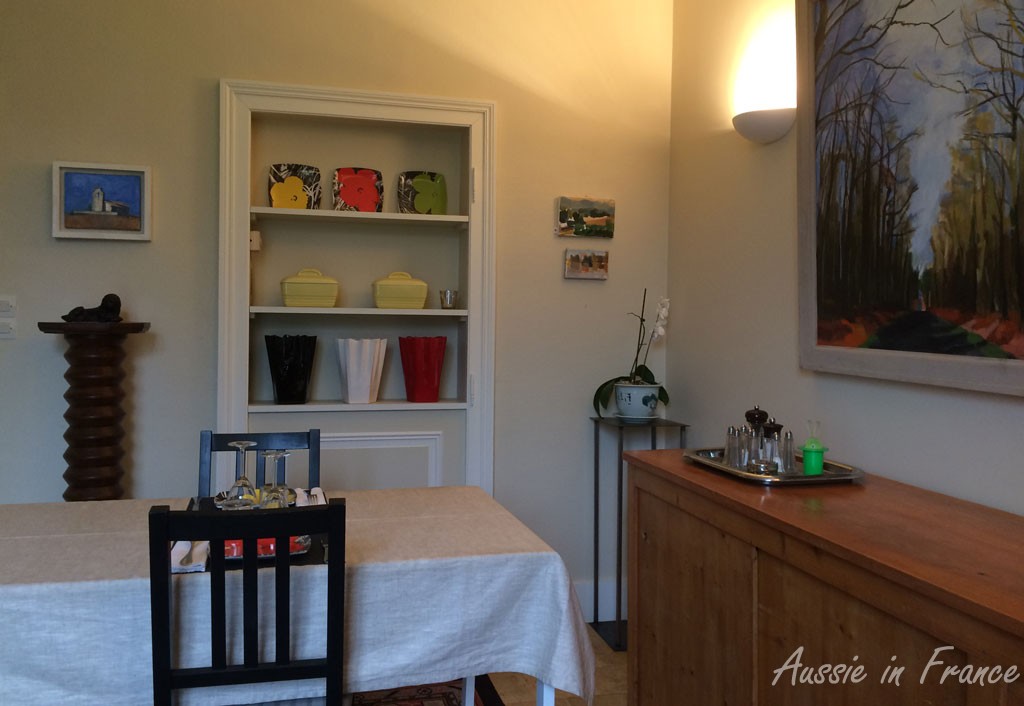
He takes us through to a room where two tables are laid and we choose the one next to the window. That’s when I remember why I bought a woollen pullover a couple of years ago – it’s to put under a woollen jacket and over my Damart when we go to restaurants in the country in winter. Unlike Parisian restaurants, they are not overheated. The large radiator is on though so I assume it will get warmer as time goes by.
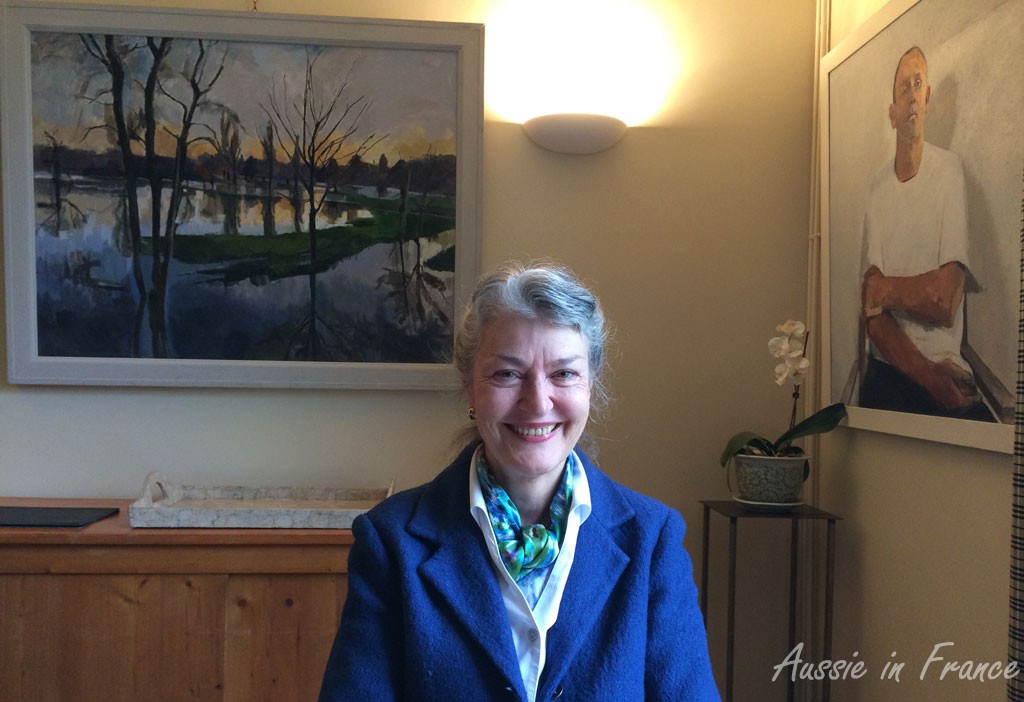
The decor is minimalist. The tablecloths are plastic simili-linen with plastic woven mats and melamine Andy Warhol plates. The serviettes are good-quality fabric. There are several large acrylic paintings on the wall and some more Andy Warhol plates in a niche. There are no menus.
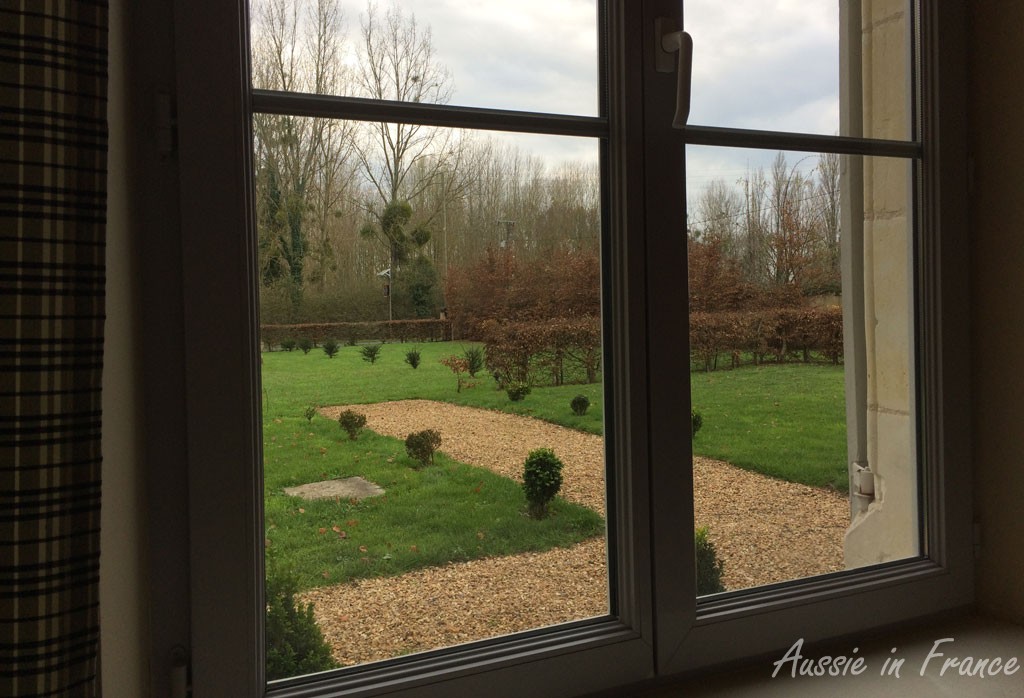
Jean Michel orders our usual celebratory glass of champagne before I have a chance to remind him that we have decided to always order local bubbly when we eat out in the Loire Valley. Our host/chef/waiter brings back a half bottle of Rothschild which gives me the chance to change the order. I learnt the first time I visited a champagne cellar in Reims that you should never buy half bottles (even though they sell them) because the champagne can’t mature properly and develop good fizz in a half bottle. We ask for a bottle of champenoise method vouvray instead and happily stay with it for the rest of the meal.
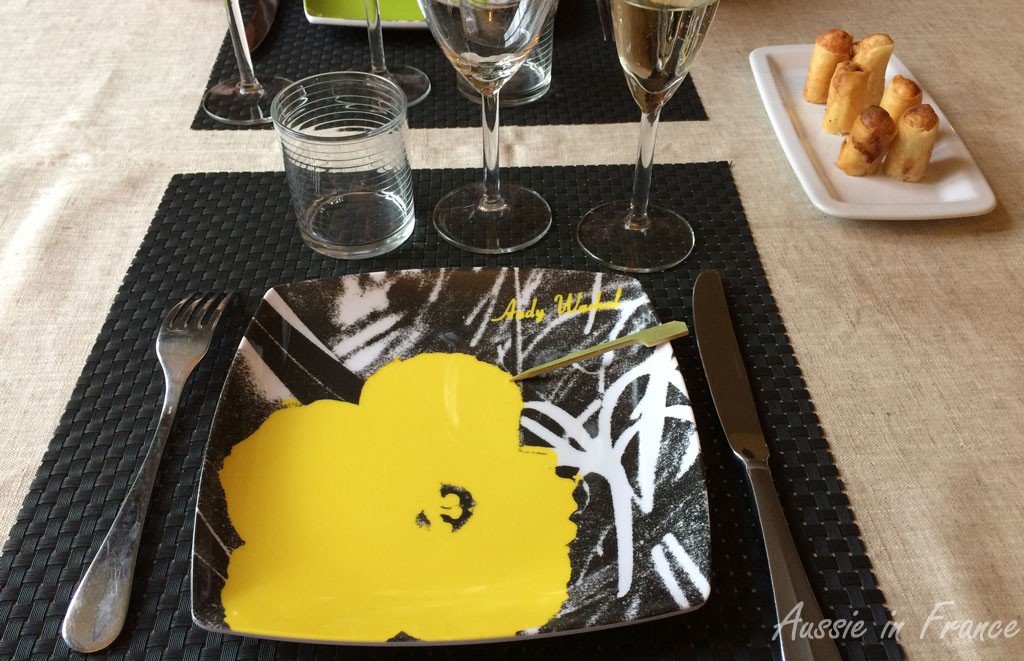
The chef, who turns out to be from Hong Kong and does not recognise my pronunciation of Cheung Chau island, tells us that he will be serving a dégustation menu. He then describes the different dishes with some difficulty as his French is a little basic. He says that cheese is optional. We say it won’t be necessary considering the rest of the menu which seems to have an amazing number of courses.
To accompany our first glass of vouvray, we are given a little slice of the chef’s own foie gras on a small piece of toast, followed by some little vertical spring rolls that we don’t manage to identify.
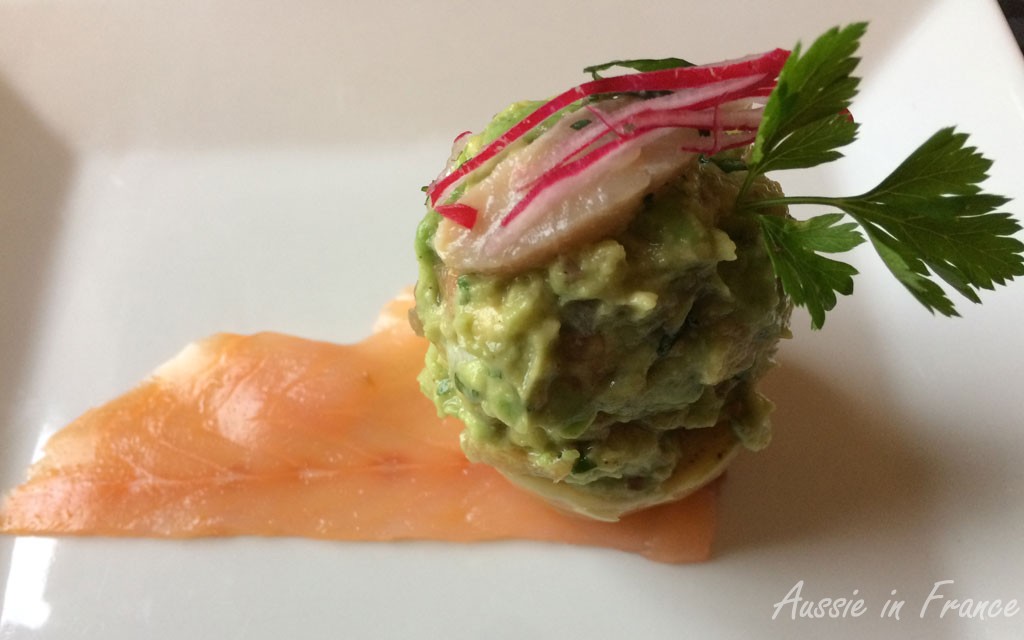
The two amuses-gueules are followed by no fewer than five starters: pumpkin soup, mackerel rillettes, cold prawns with curly lettuce, artichoke hearts topped with guacomole on a smoked salmon bed arranged to look like a snail, and foie gras which isn’t bad but we prefer our own salt-cooked melt-in-the-mouth Christmas foie gras that we’ll be making on Thursday with our friends as we did last year.
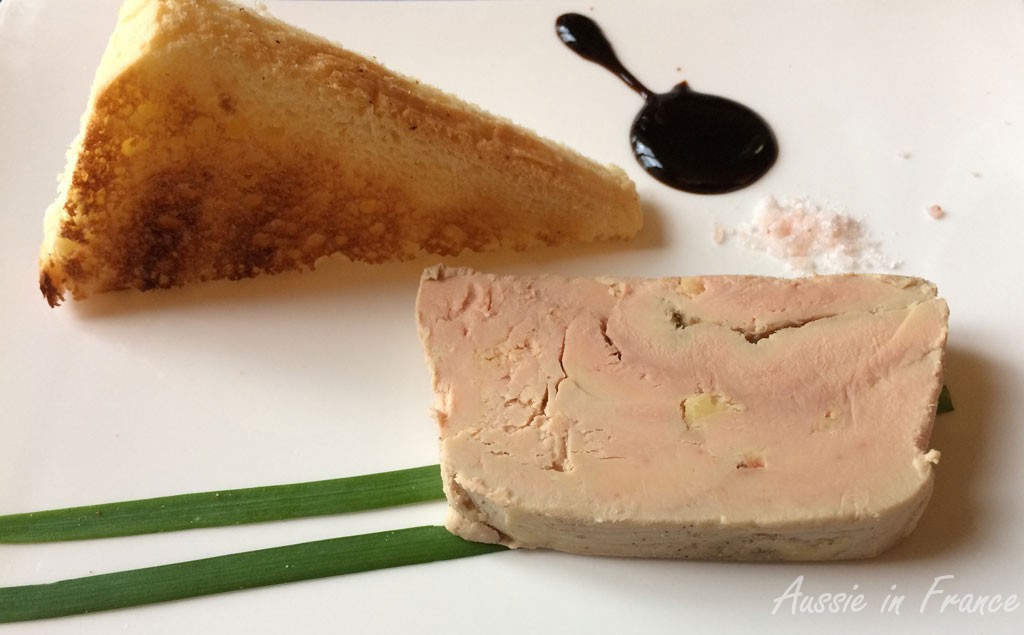
By the time the main course arrives, we know we will have the restaurant to ourselves. A very tender breast of guinea-fowl is served with potato purée, turnip and carrot and a tasty foie gras sauce.
By now, I don’t think I can eat another morsel. We refuse the cheese once again and wait for the dessert. Jean Michel says there are three. Fortunately they all turn out to be on the same plate. First, homemade raspberry ice-cream which we don’t manage to identify because we’ve never had it before. In France, they only have raspberry sorbet. I prefer the ice-cream. Second, a delicious chestnut soft-centred cake. Third, several lightly caramelised slices of apple.
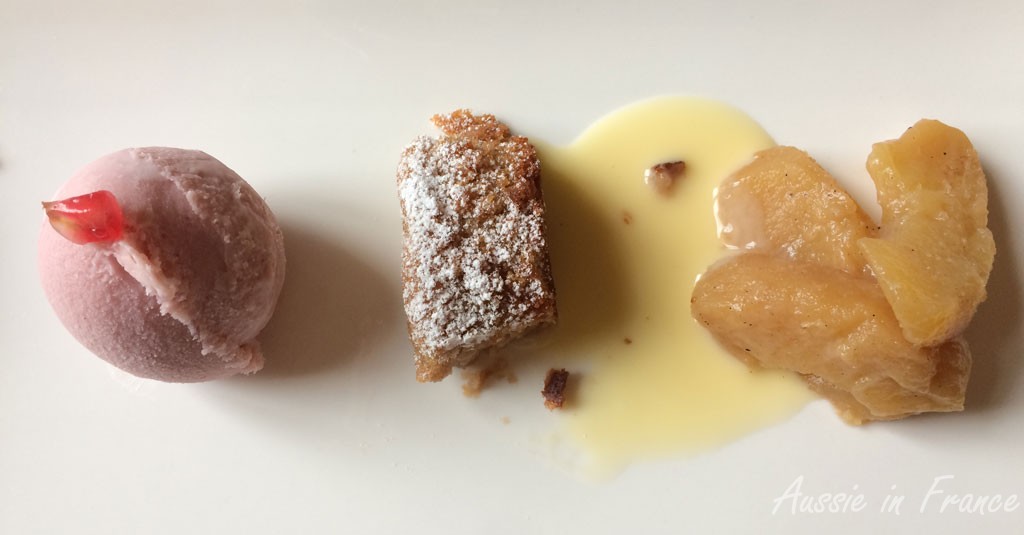
We finish off with an excellent espresso. The bill comes to 97 euro, which we declare is very good value for money (36 euro each for the menu, 20 euro for the Vouvray and 2.50 for the coffee). We’re glad we didn’t have any breakfast and are now going to get a bit of exercise walking around Lavardin.
We both agree that it was an excellent choice for an anniversary lunch due to its originality. All the food is made by the chef and fresh – we even saw him go out in the garden to pick some fresh herbs; there were no strange combinations, but nothing was outstanding.
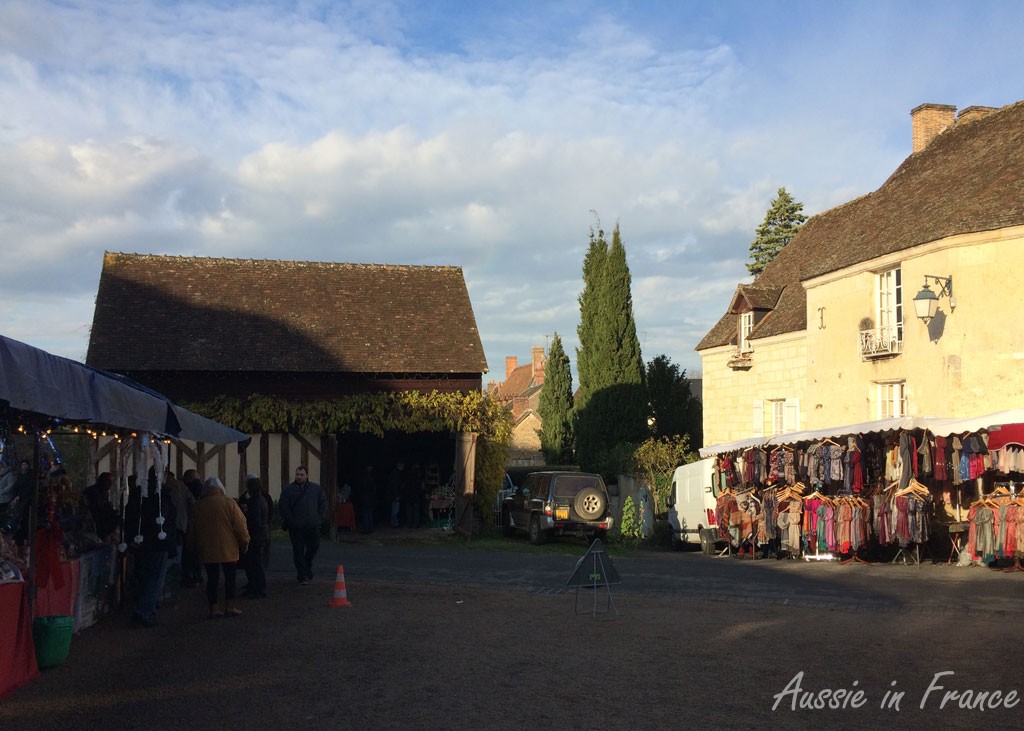
The sun is starting to come out when we leave the restaurant, which is a relief. We arrive at Lavardin by a back road, which is fortunate, because it means we can park quite close to all the activity instead of miles away on the main road. Lavardin immediately strikes us as being a pretty little town, especially with the ruined castle on the hill, 45 metres above the Loir River (not to be confused with its second cousin, the Loire).
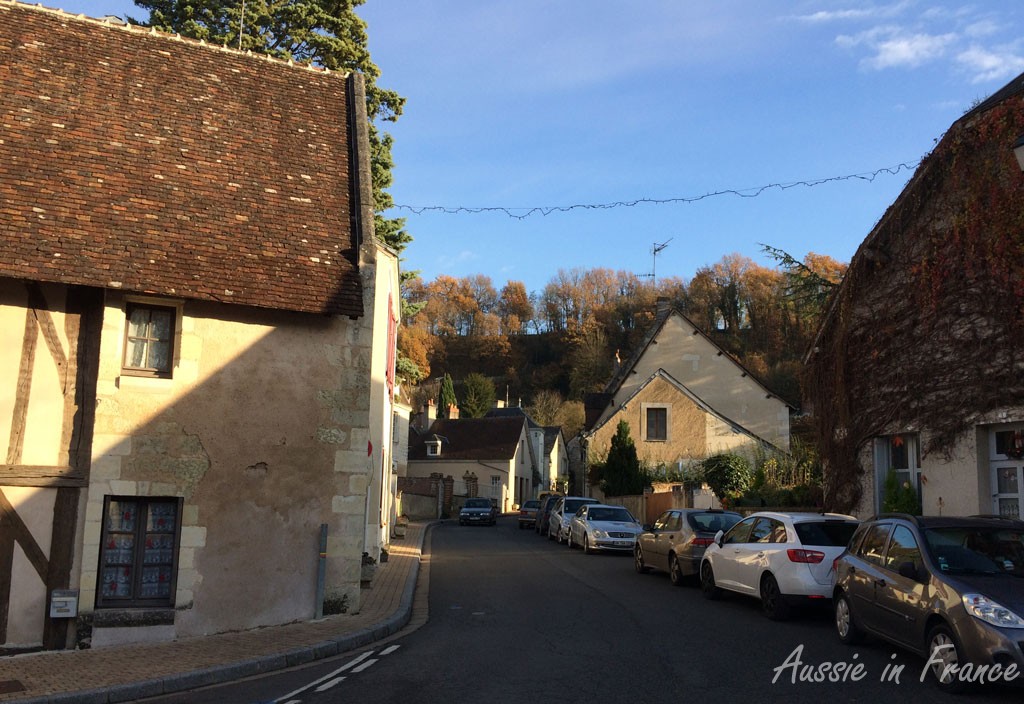
The Christmas market, however, has little to offer. The stalls are spread out through the town, including the castle, which is a good idea, but prevents us from having a proper visit though we do see a bread oven hollowed out from the limestone. There is nothing original at the market and very little is handmade. We are not tempted to buy.
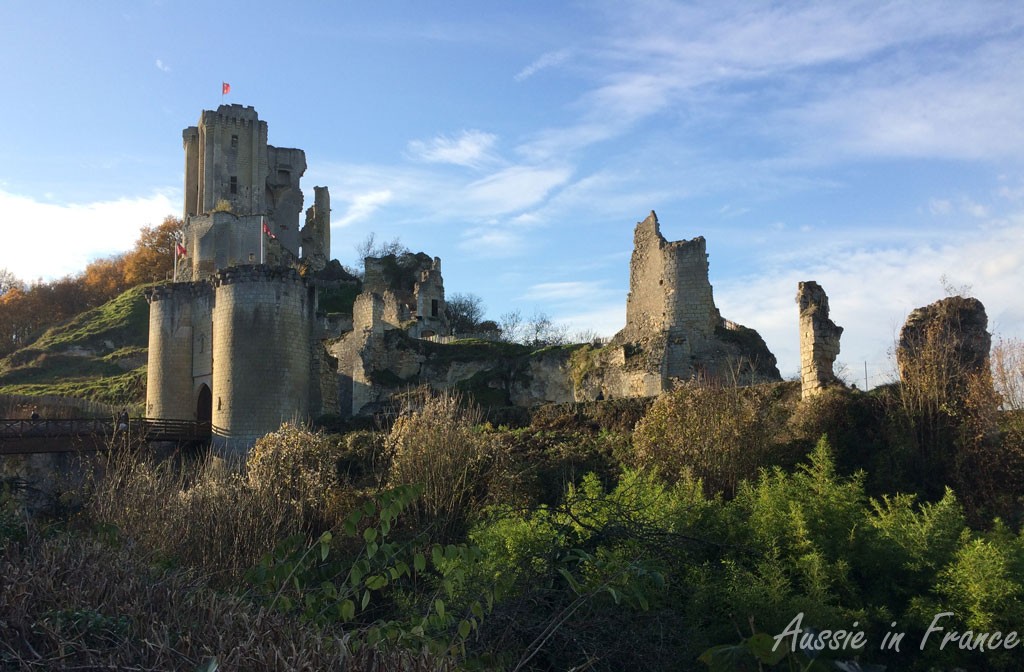
Founded by the Counts of Vendôme in the 9th century, the feudal castle was rebuilt in the 14th and 15th century by John 1st of Bourbon-Vendôme. After being occupied by members of the Catholic league, it was captured and dismantled on the orders of Henri IV in 1590.
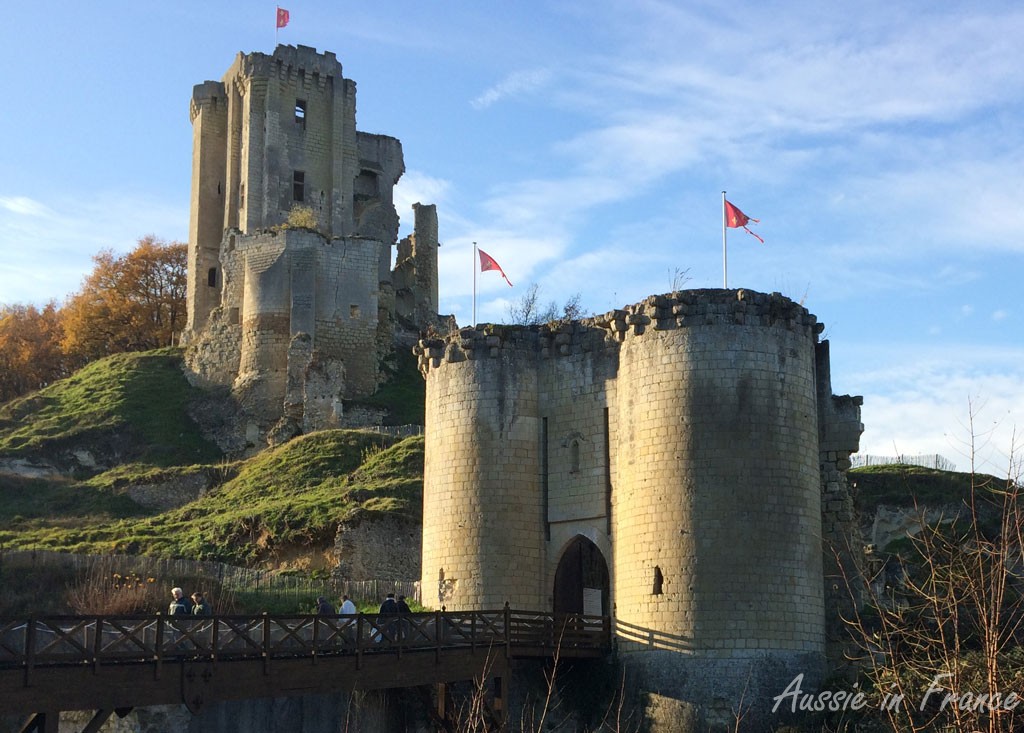
All that is left of the castle is a 26-metre high ectangular keep with flat buttresses topped with crenallations. The only remaining part of the two walls built in the 14th and 15th centuries is the entrance flanked by two circular towers and a drawbridge over a moat.
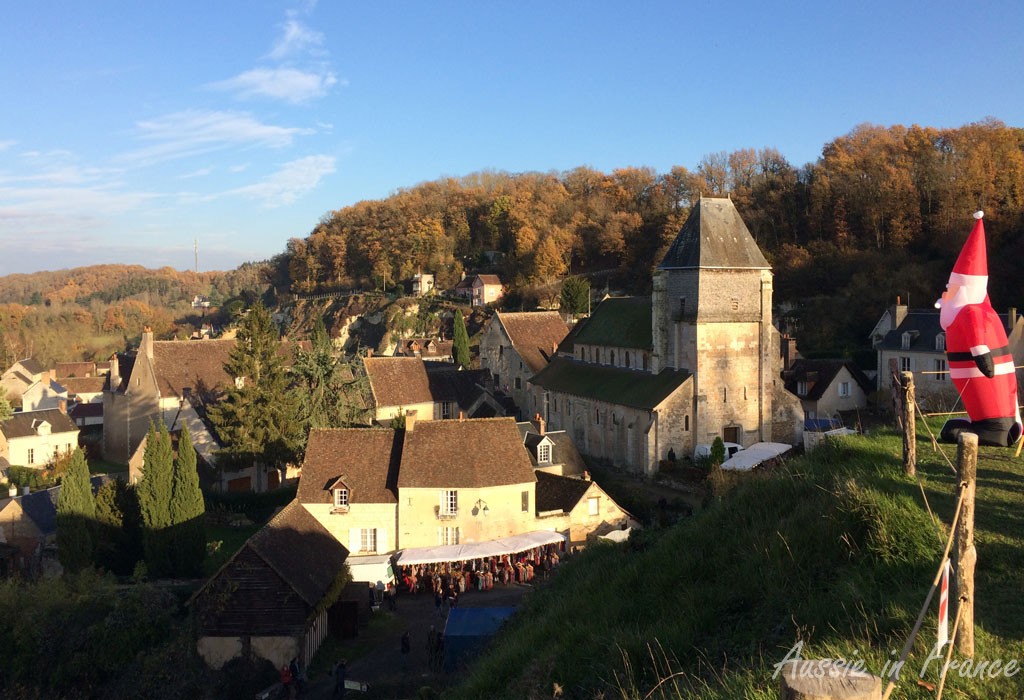
We walk up the hill to the castle and out onto the promontory. Unsurprisingly, the blow-up Santa Claus does not seem to appeal to many of the children present. A couple of teenagers try to hug it while their mother takes a photo.
And somehow, I can’t really imagine that the real one with his terrible white dreadlooks sauntering down the street talking to his mates is very convincing either.
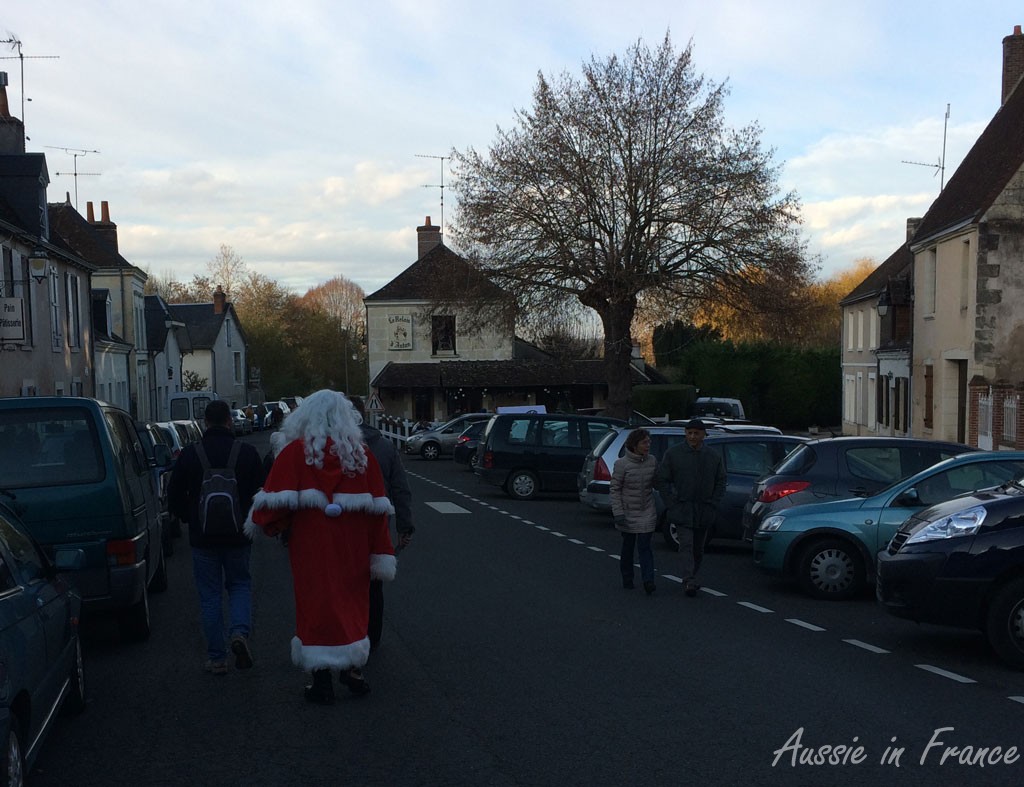
However, Lavardin certainly has potential. We’ll come back on our bikes in the spring and cycle around the area, maybe starting in Vendôme, less than 20 km away, as there are several places to visit, including nearby Montoire-sur-Loir, the manor house where Pierre Ronsard, the Renaissance poet, was born, the historical train station in Montoire where Pétain and Hitler met up during the second world war, the Saint Gilles chapel with its beautiful frescoes and the troglodyte village of Trôo. Perhaps you’d like to join us?
We’re on our way to Ybbs an der Donau in Austria and Gyor seems like a good halfway point. We arrive at 12.30 just in time for lunch. We find an indoor parking lot so we won’t be restricted with regard to time (we still have our two parking tickets from Szeged) and set out to discover the historical centre of Gyor which is Hungary’s third largest industrial town.
We are immediately attracted by the centre. It’s spacious, clean and bright with many typical baroque buildings – the blue sky and sun help of course. We debate about whether to eat at what looks like the largest tourist restaurant in town – Palffy’s – on the main square, Szechenyi Ter, and wander down to the Danube, taking photos on the way.
Matroz Czarda with its vaulted ceiling and open door beckons to us (the temperature is not quite high enough to eat outside comfortably) and we are given a table for six as it’s the only one left. We both choose Hungarian ribs which turn out to be some sort of pork (no sign of ribs) with a tomato, onion and paprika sauce, served with French fries. I’m happy with it but Jean Michel regrets the ribs.
I see there are three different red house wines by the glass so I ask the waiter the difference. On is a wine and soda mix, one a cola and soda mix and the other straight wine. I later learn soda water was invented in Gyor.
Next stop, the cathedral, Bazilika Szent Laszlo Herma, nearly a thousand years old, consecrated in 1033. Its neoclassic façade dates from 1823 and its baroque interior including a marble pulpit from 1743. What a mixture!
I am keen to see the Xantus Janos Museum, which is said to house a good ethnic collection. Unfortunately it’s closed but we can’t find out why.
We have a cup of coffee at Palffy’s for the view then return to the car park by which time it’s 3.30 pm. Next stop, Ybbs.
We have Andrea from Rear View Mirror to thank for our unique visit to the Hungarian city of Szeged today. She was lucky enough to enjoy it with both snow and sunshine! In 1879, the town was flooded and only 300 out of 5,500 houses remained. Most of the European countries contributed to its reconstruction resulting in one of the first examples of total town planning. Practically every style from the end of the 19th century is represented.
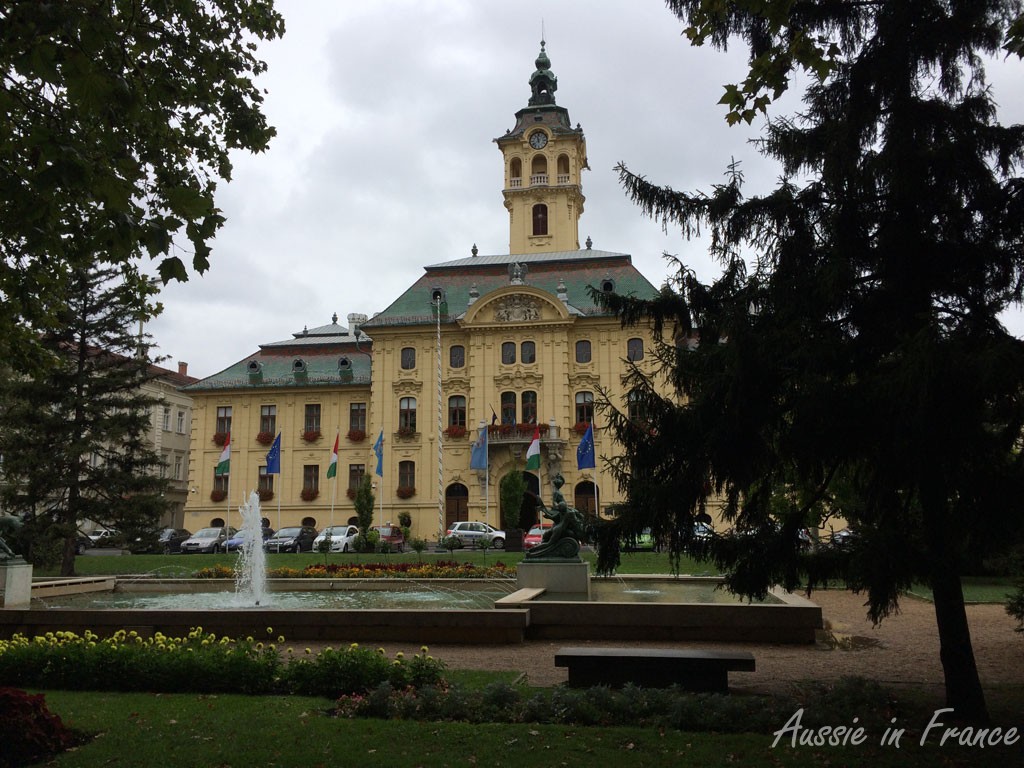
We arrived around midday and left at 3 pm with two parking tickets on our windscreen! The very nice girl in the excessively difficult-to-find tourist office said they she has been told that foreigners are not pursued for parking fines. Let’s hope so! There are different zones and you need to buy a parking permit from a newsagency. One day costs around 7 euro and you can park in any zone. That was the only negative point about Szeged!
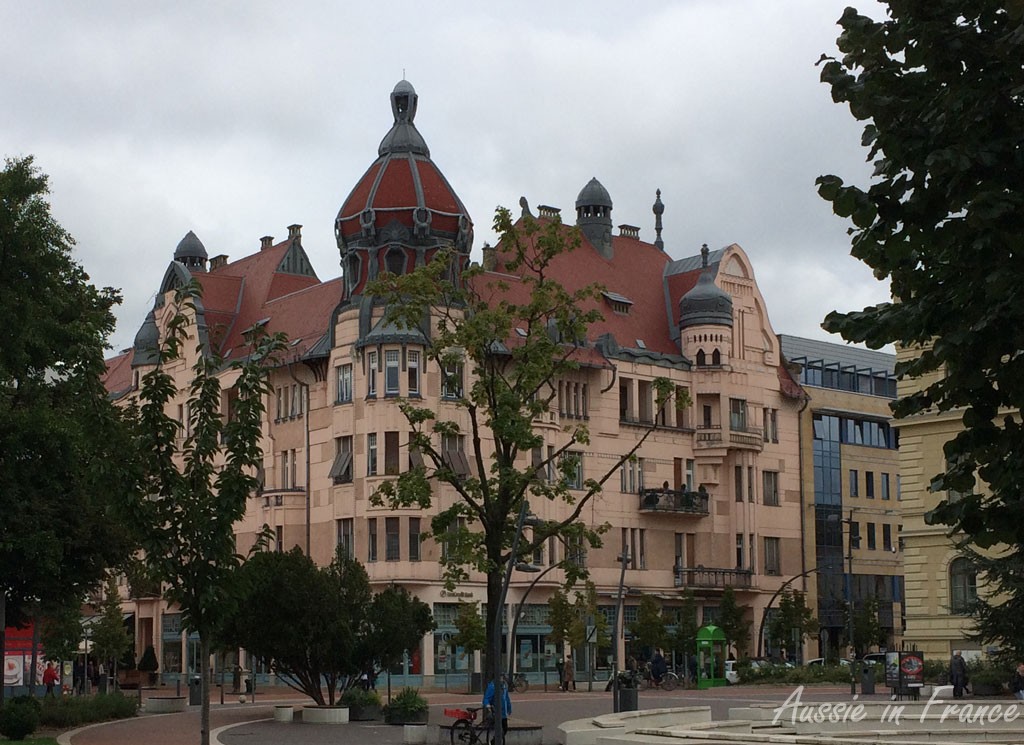
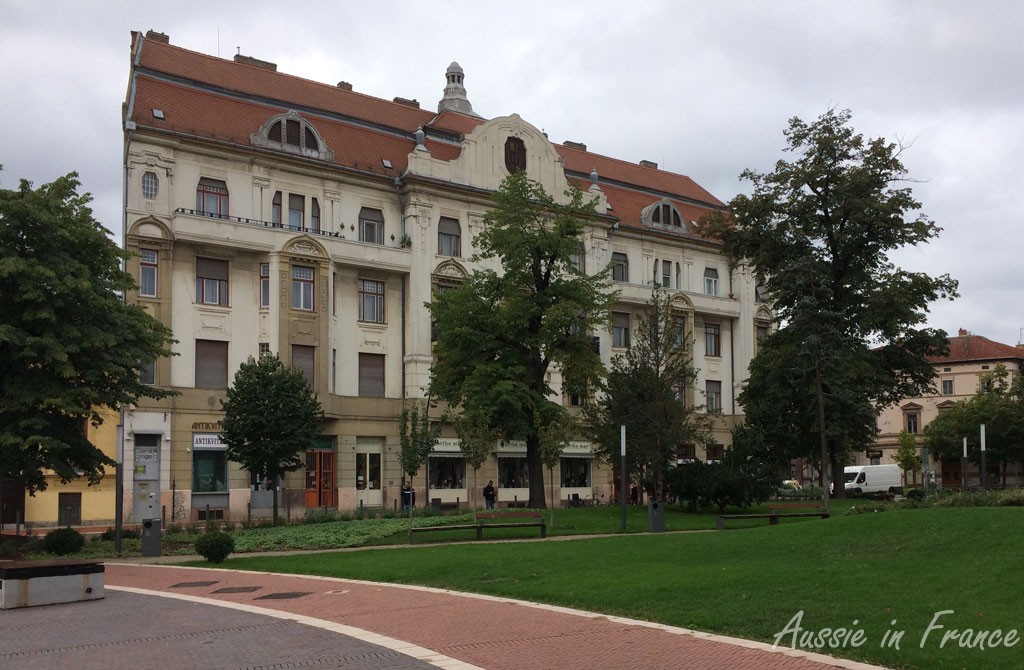
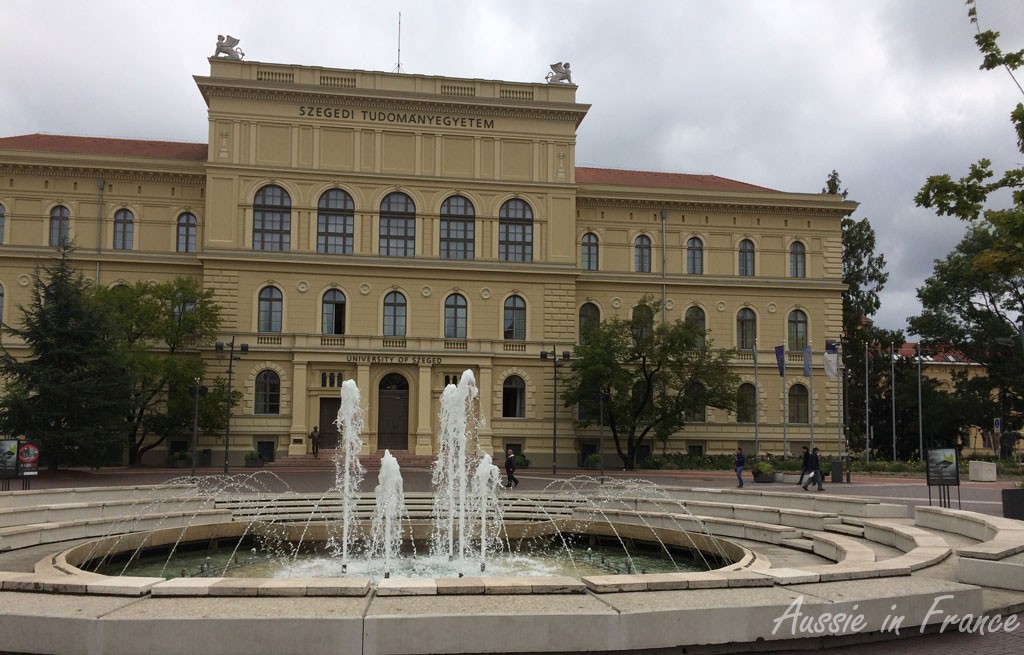
We had an excellent “business lunch” in a restaurant called Alabardos Etterem es Borozo just near the Cathedral. We had a three-course meal, a glass of wine and coffee for 4000 florints for 13 euros for the two of us. I don’t think we have ever paid so little for a meal anywhere in the world!
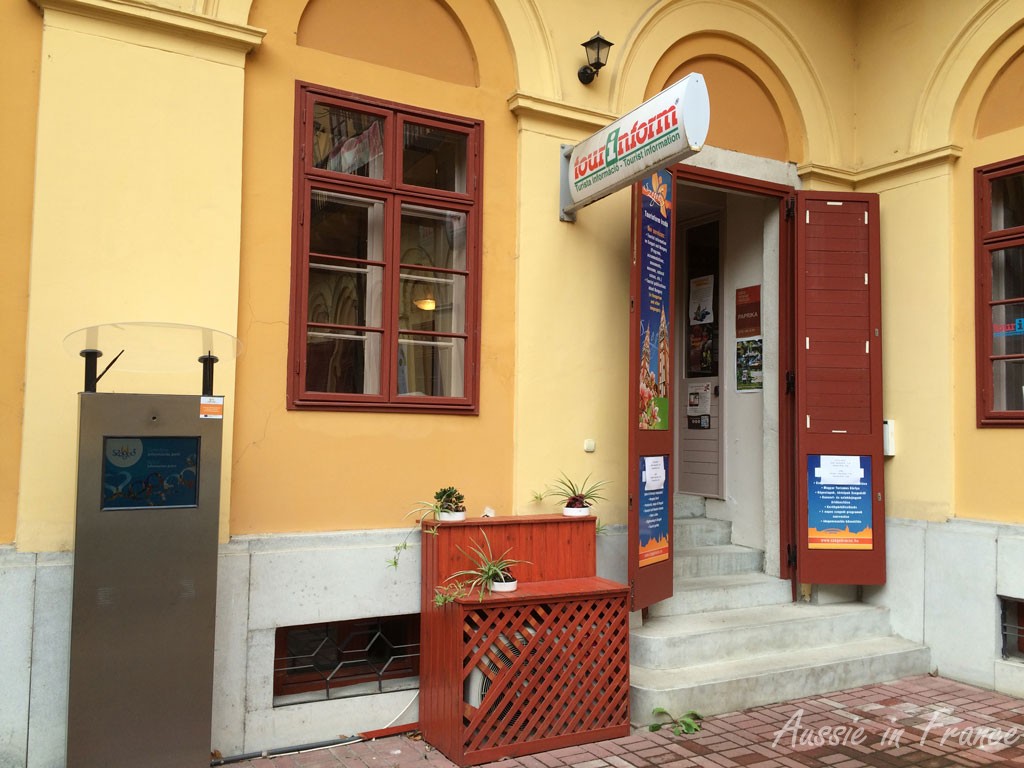
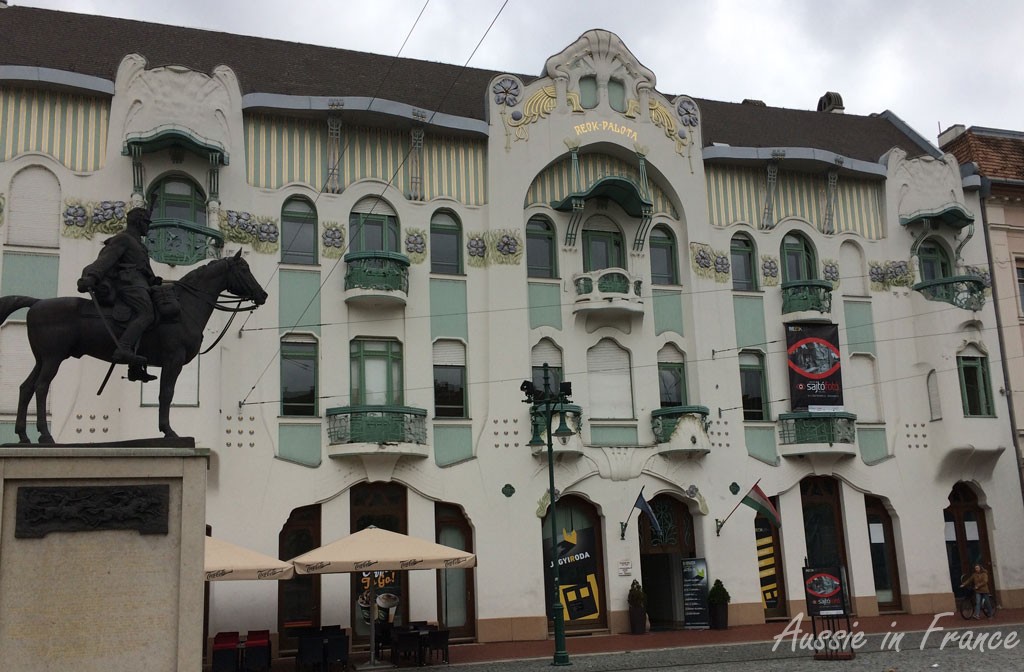
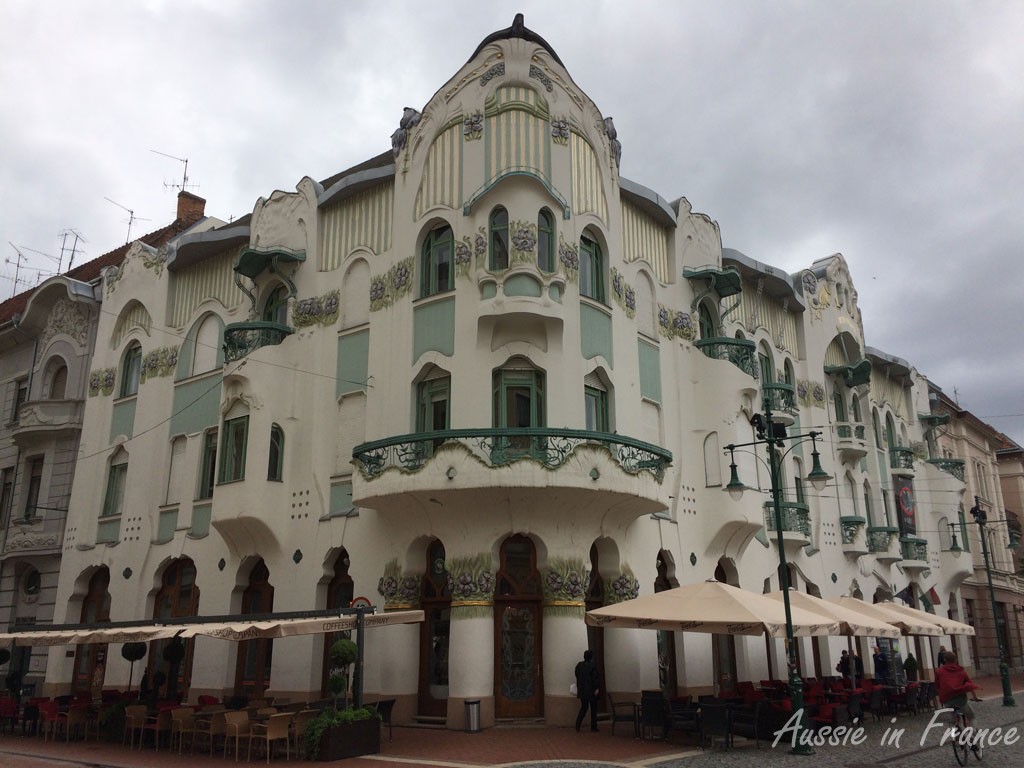
One of the town’s main attractions – the mosaics in the New Synogogue was not open due to a special ceremony so we were not able to see them.
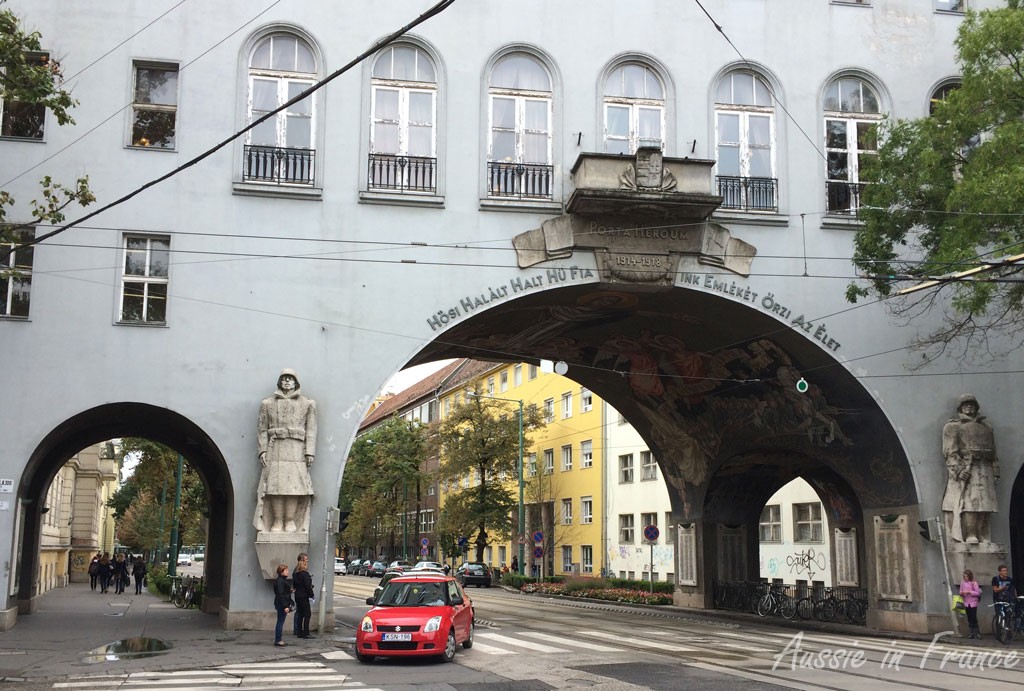
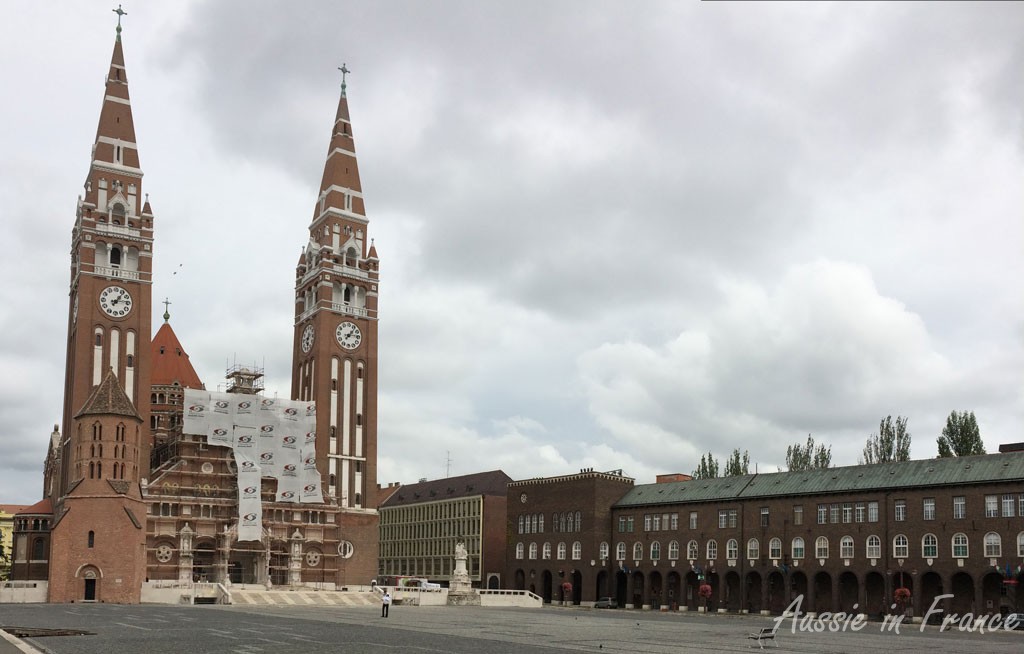
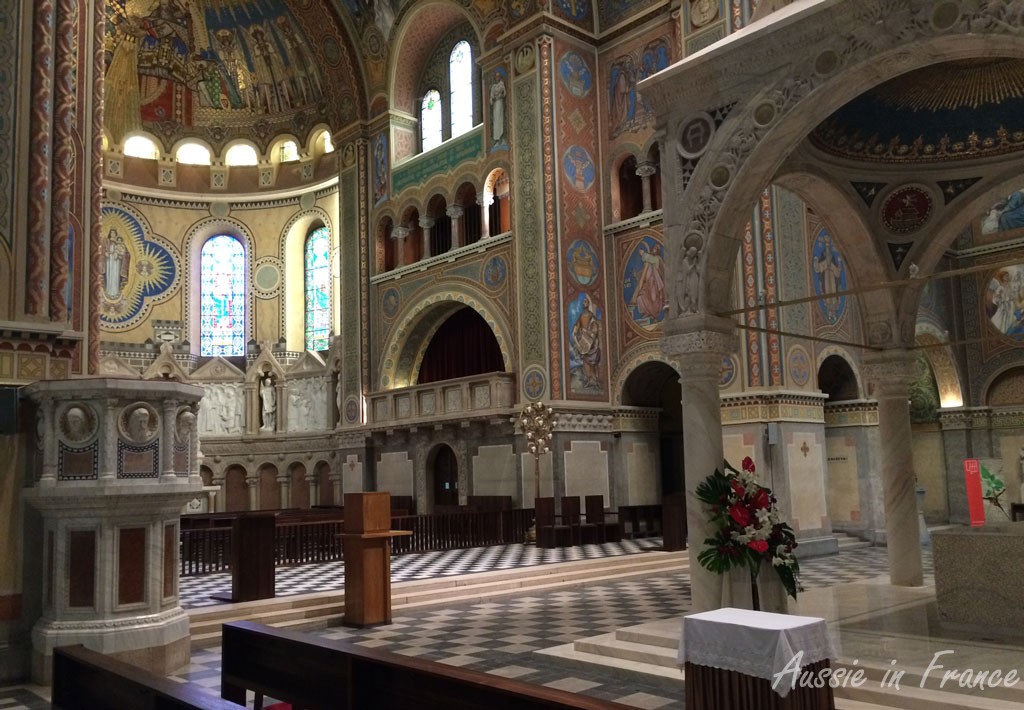
Another thing we noticed is that Szeged is a cyclist’s paradise. There are bike paths everywhere and bikes – along with horse-drawn carriages – are not allowed on many large streets. Unfortunately we weren’t able to try them out due to the low temperature – 11°C – and overcast sky. It even started to rain just as we got to the end of our visit. However, you can see lots of cyclists in the photos.
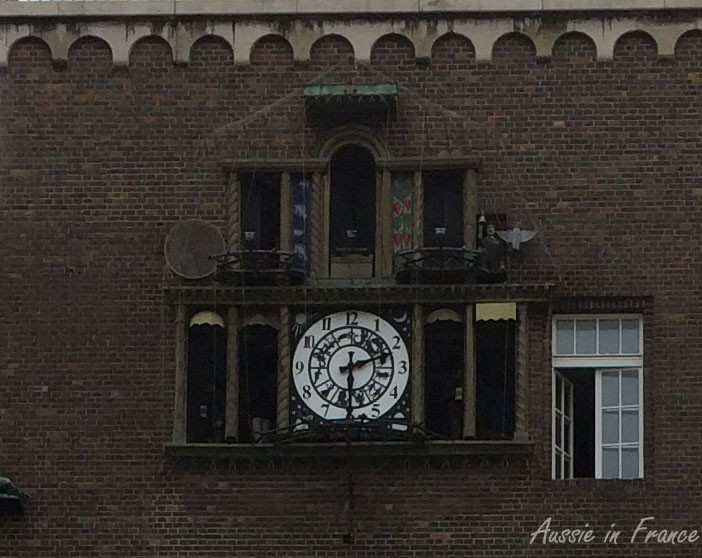
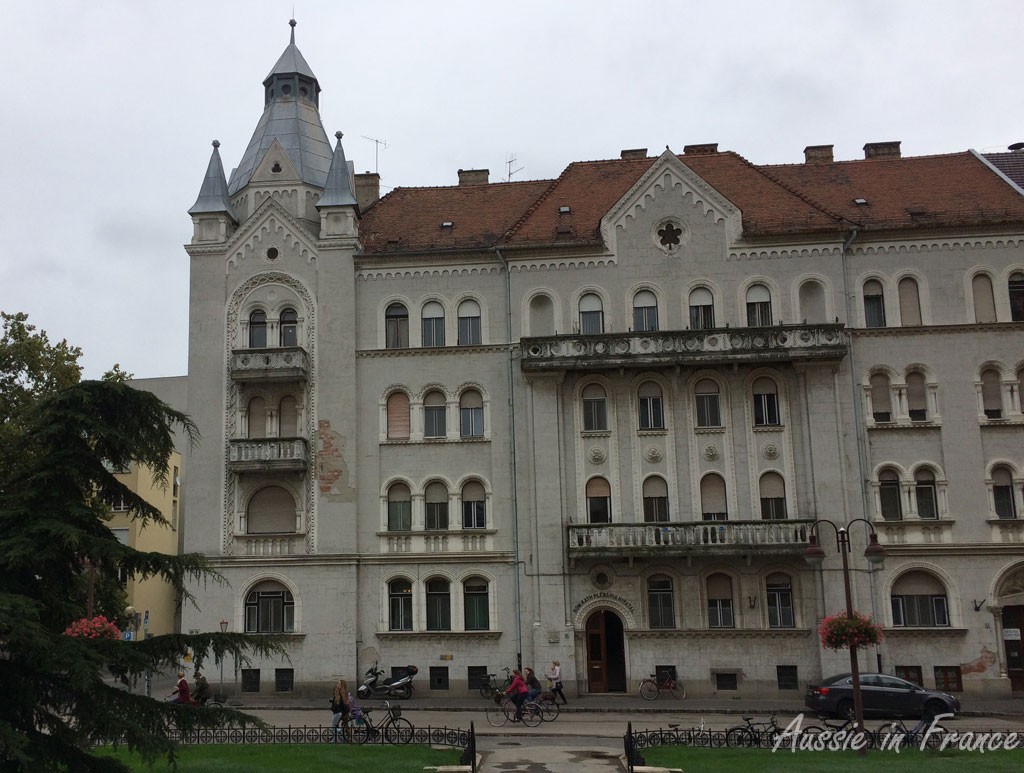
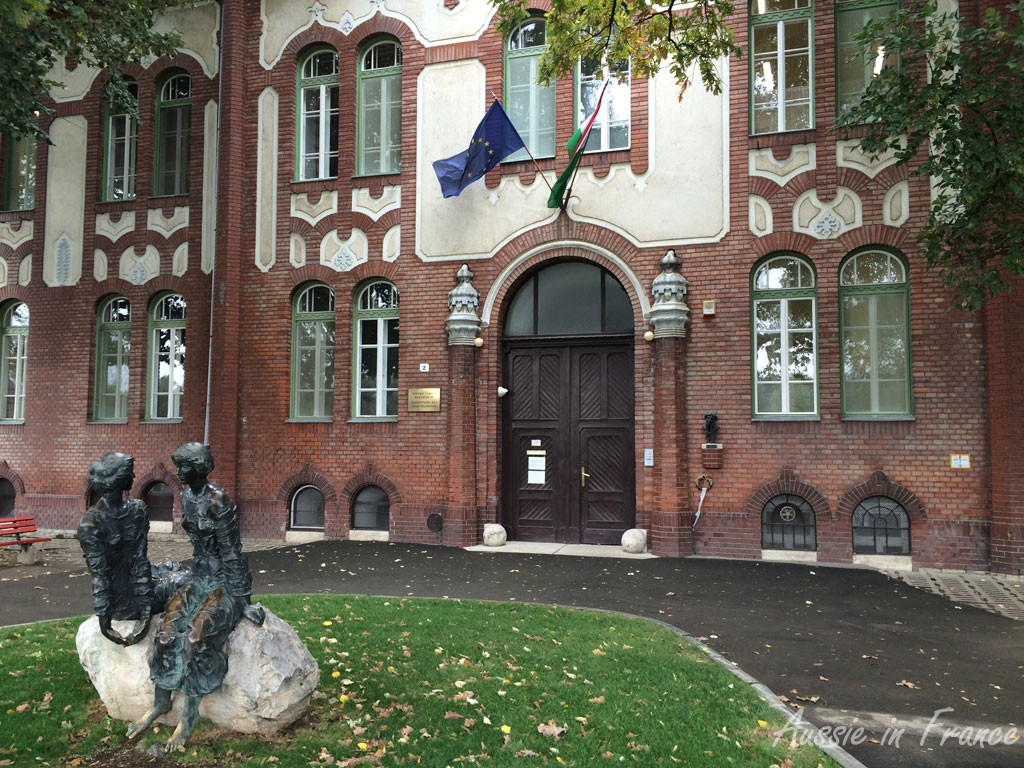
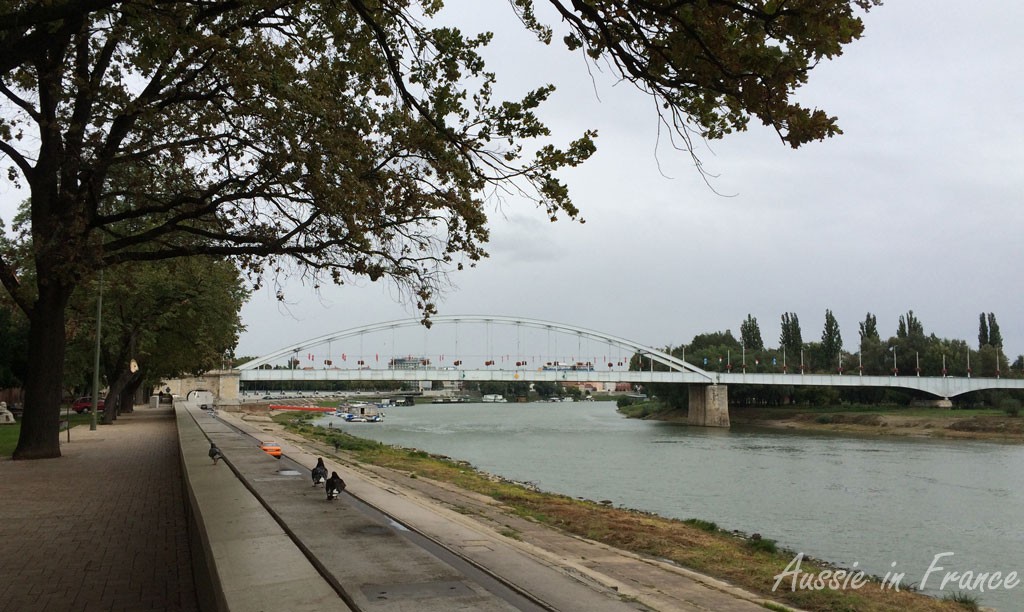
I did wonder why none of the main buildings are along the Tesza River but I guess it’s still subject to flooding.
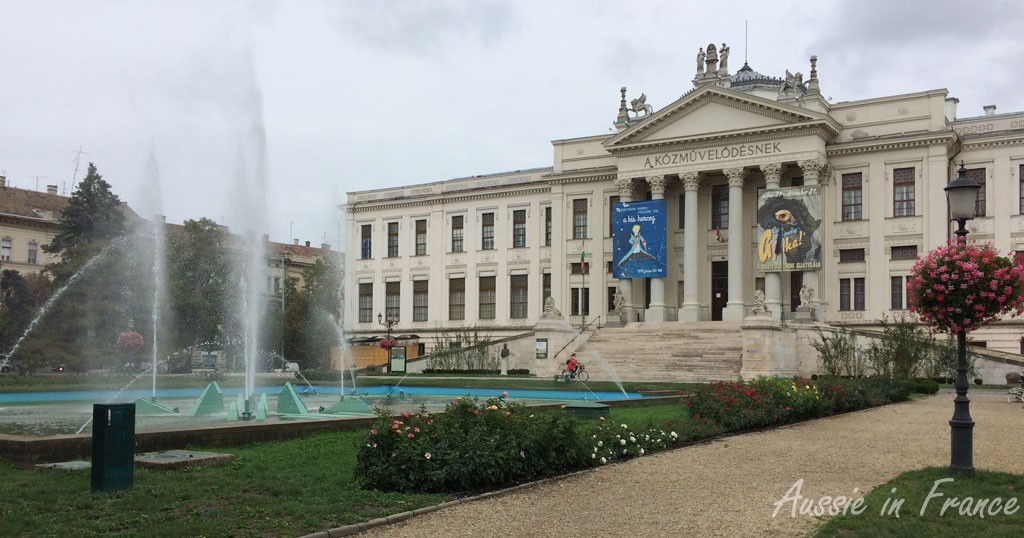
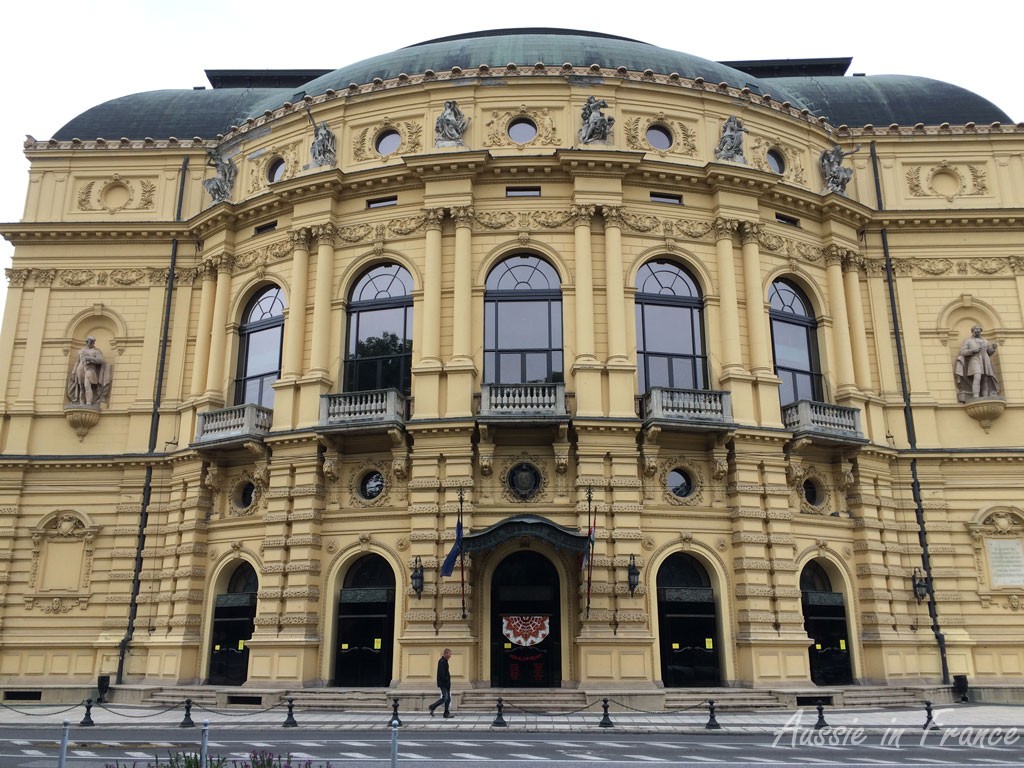
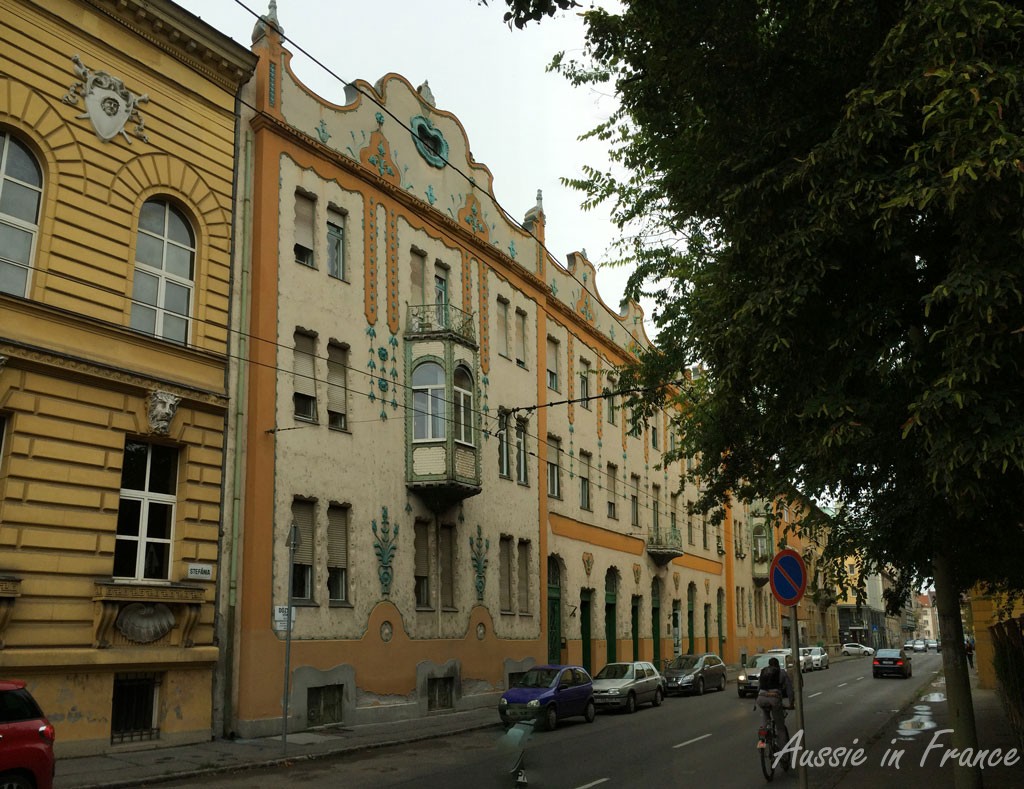
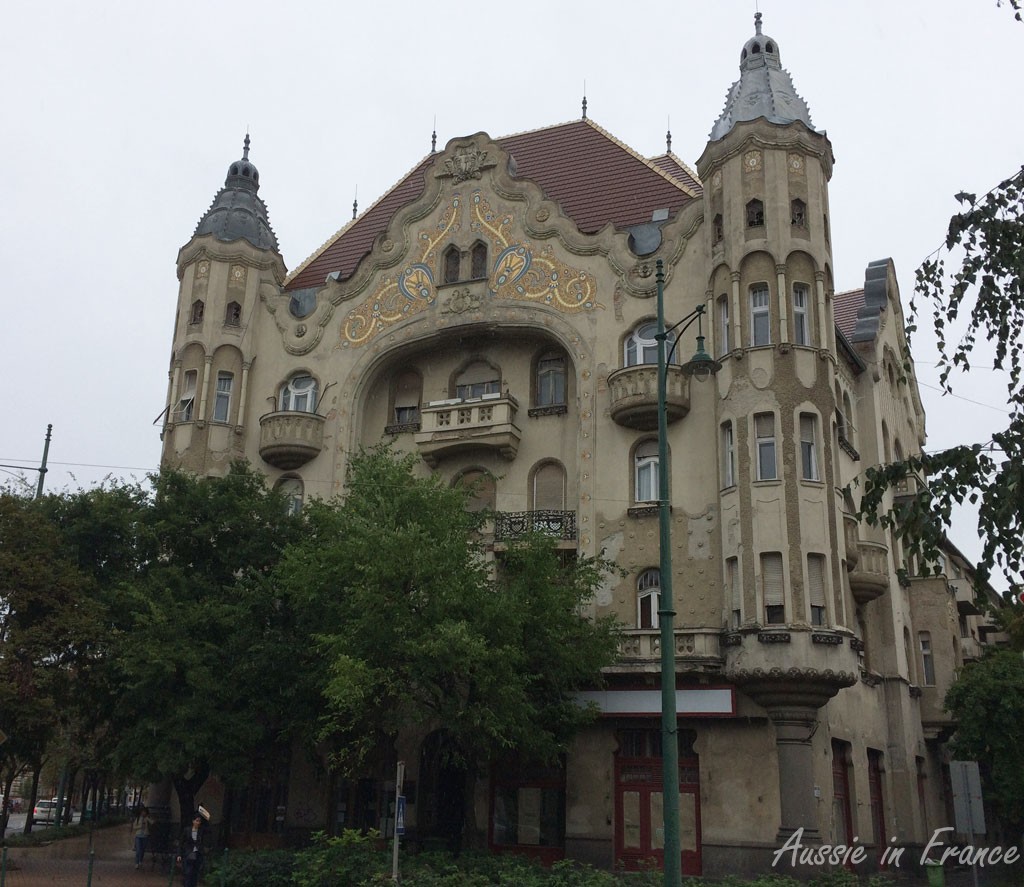
I don’t know whether we’ll ever come back to this part of the world, but if we do, I hope we’ll catch Szeged on a warm sunny day so we can appreciate it even more. But despite the overcast sky, light and open spaces are synonymous with Szeged.